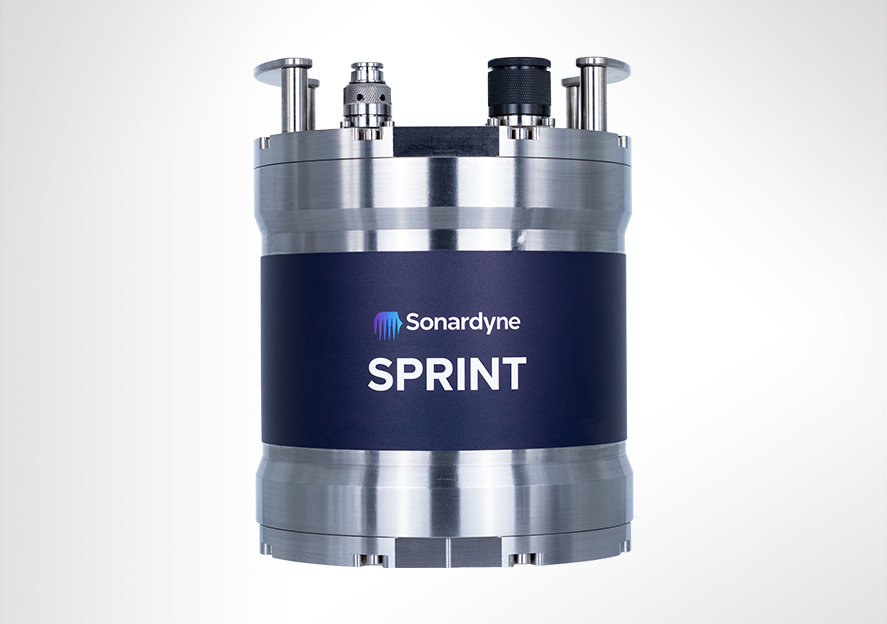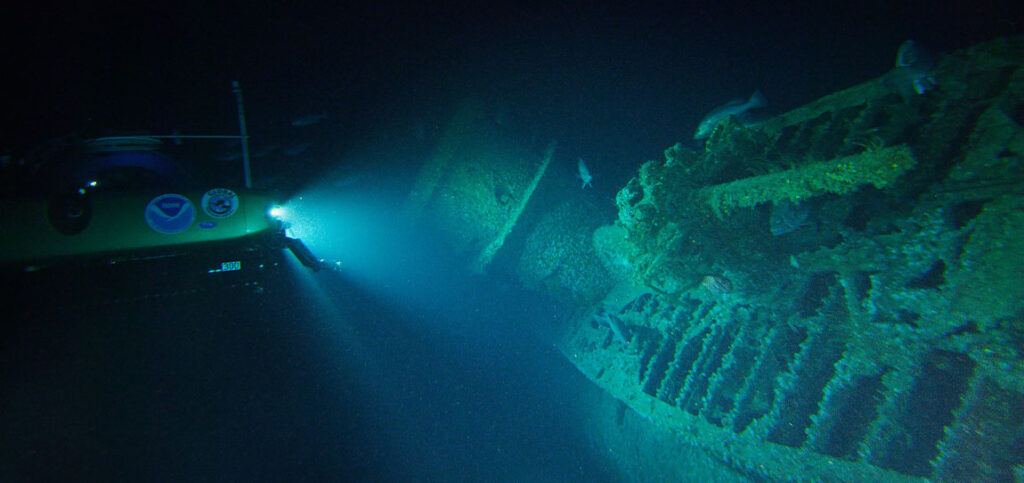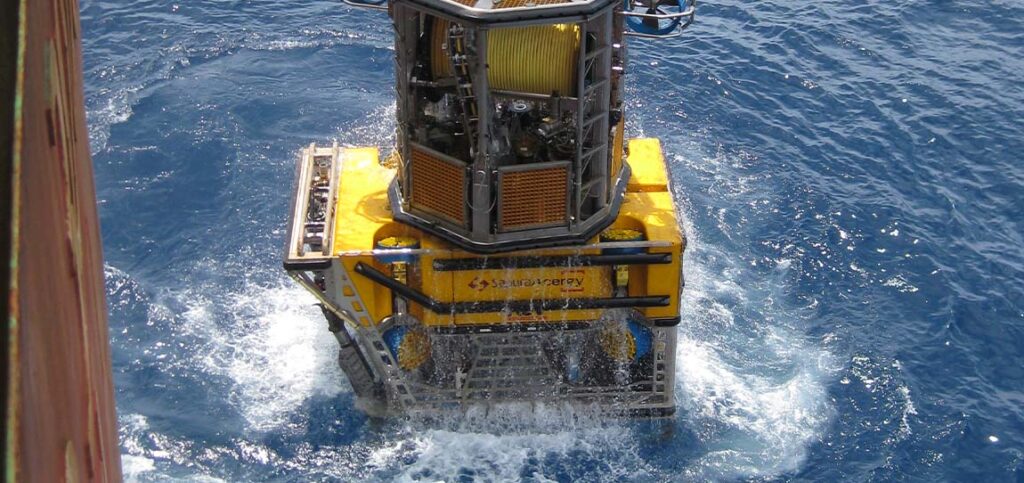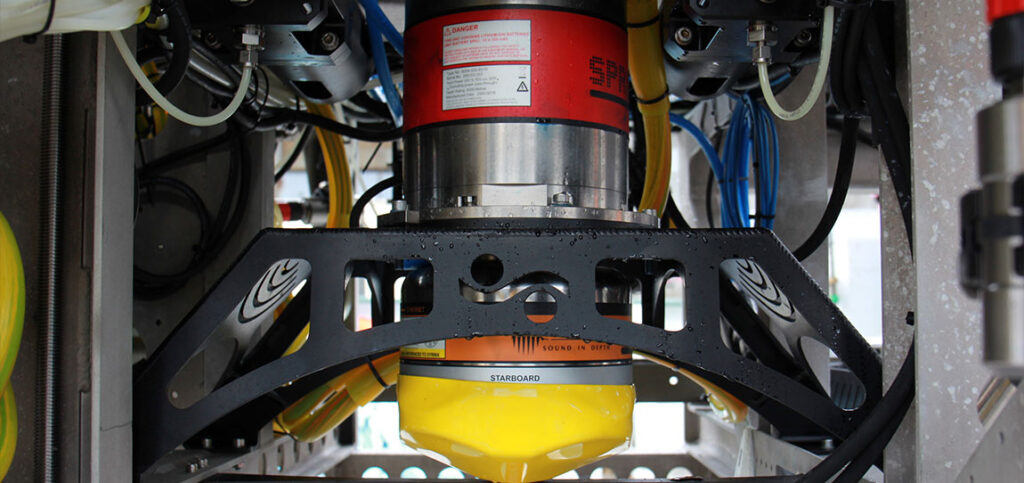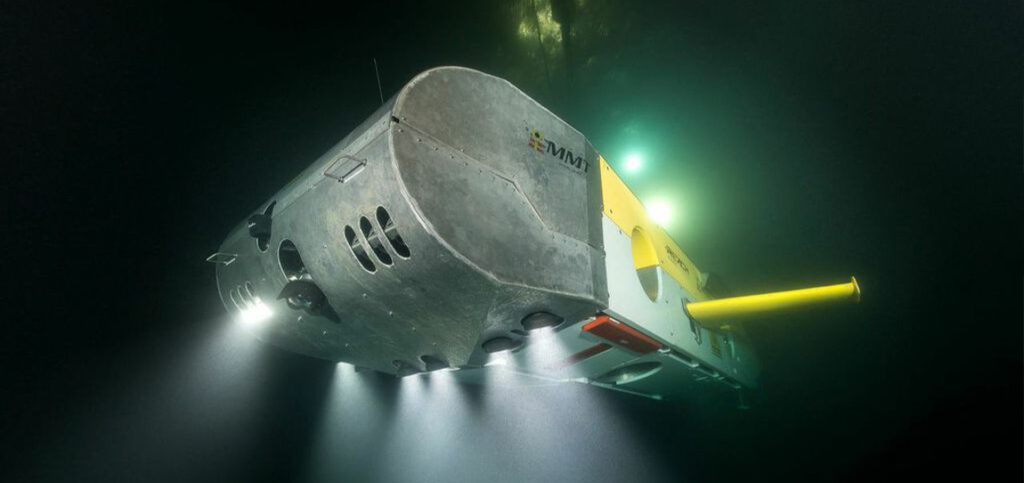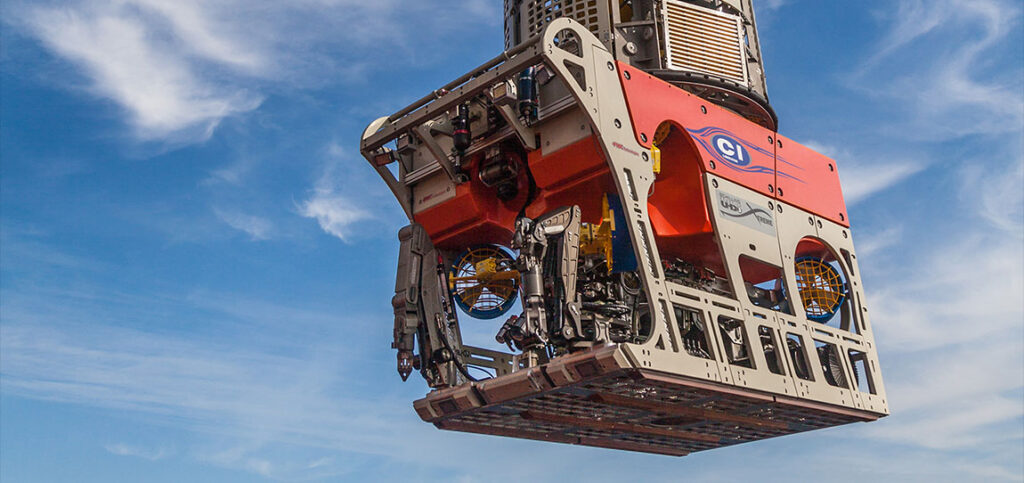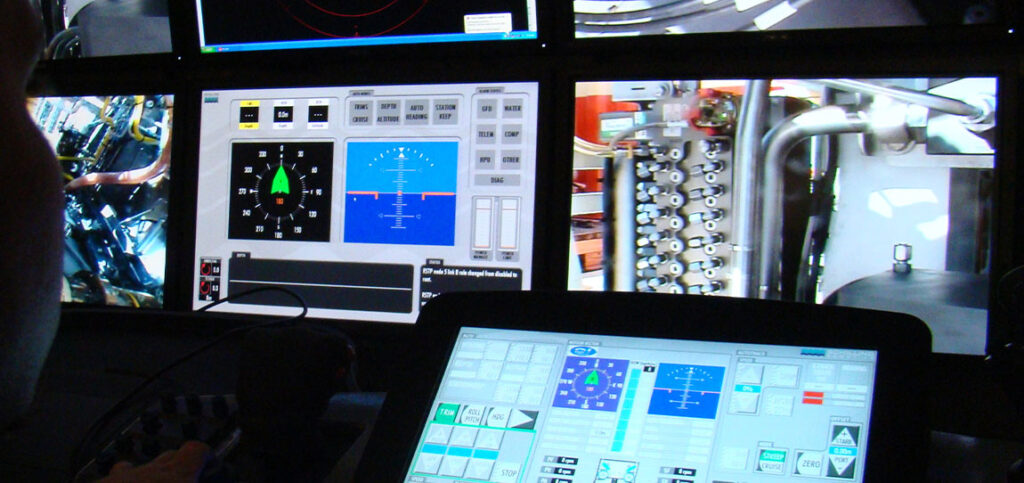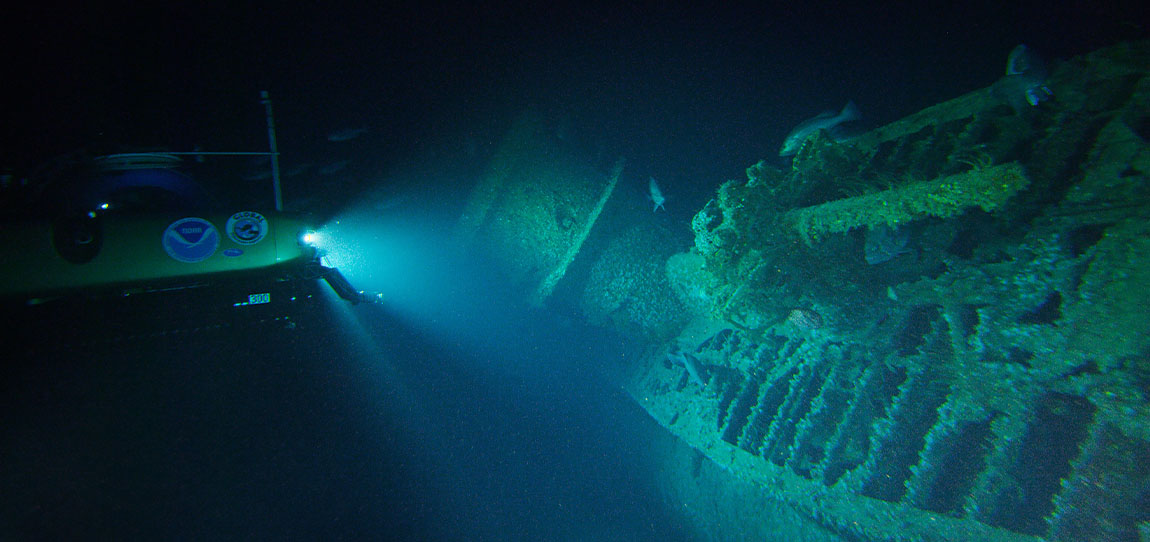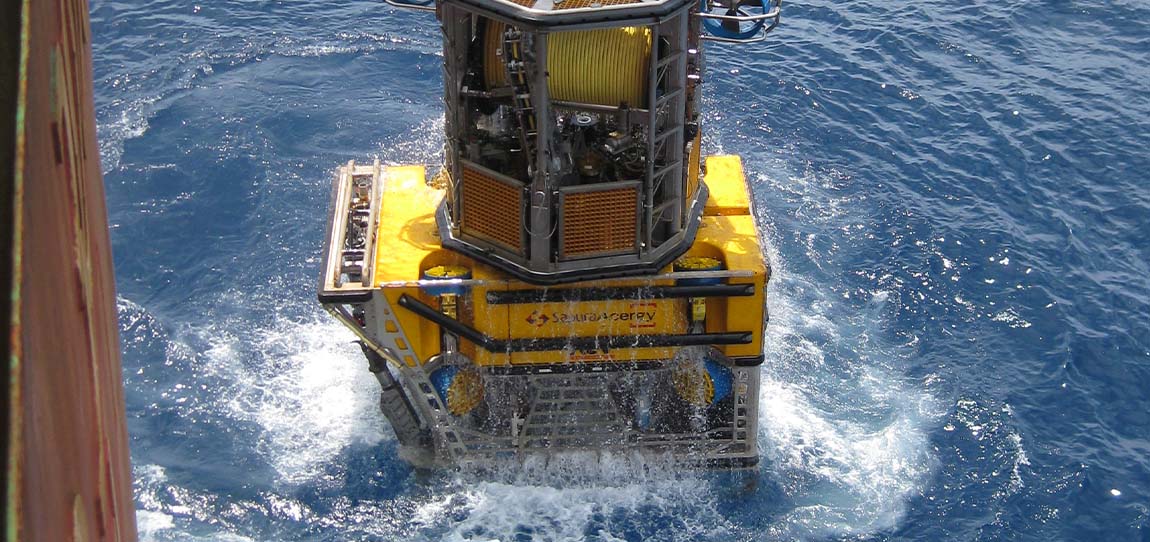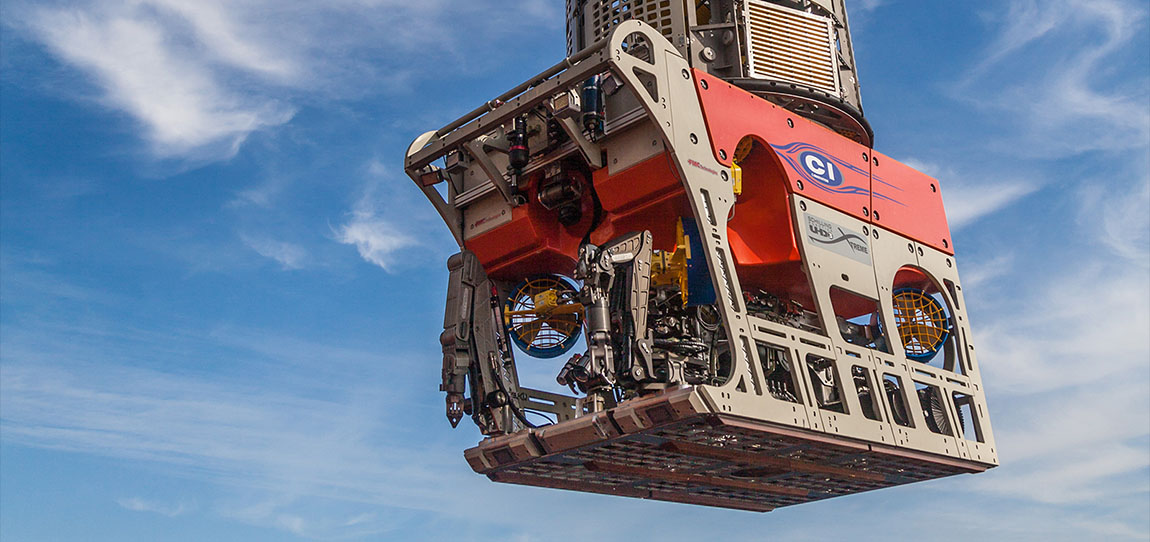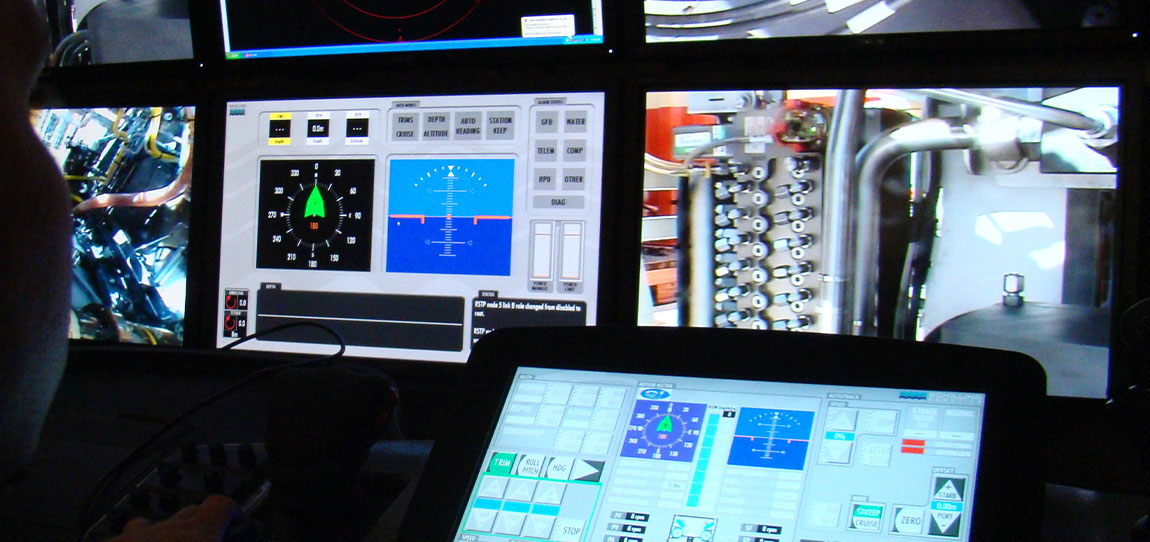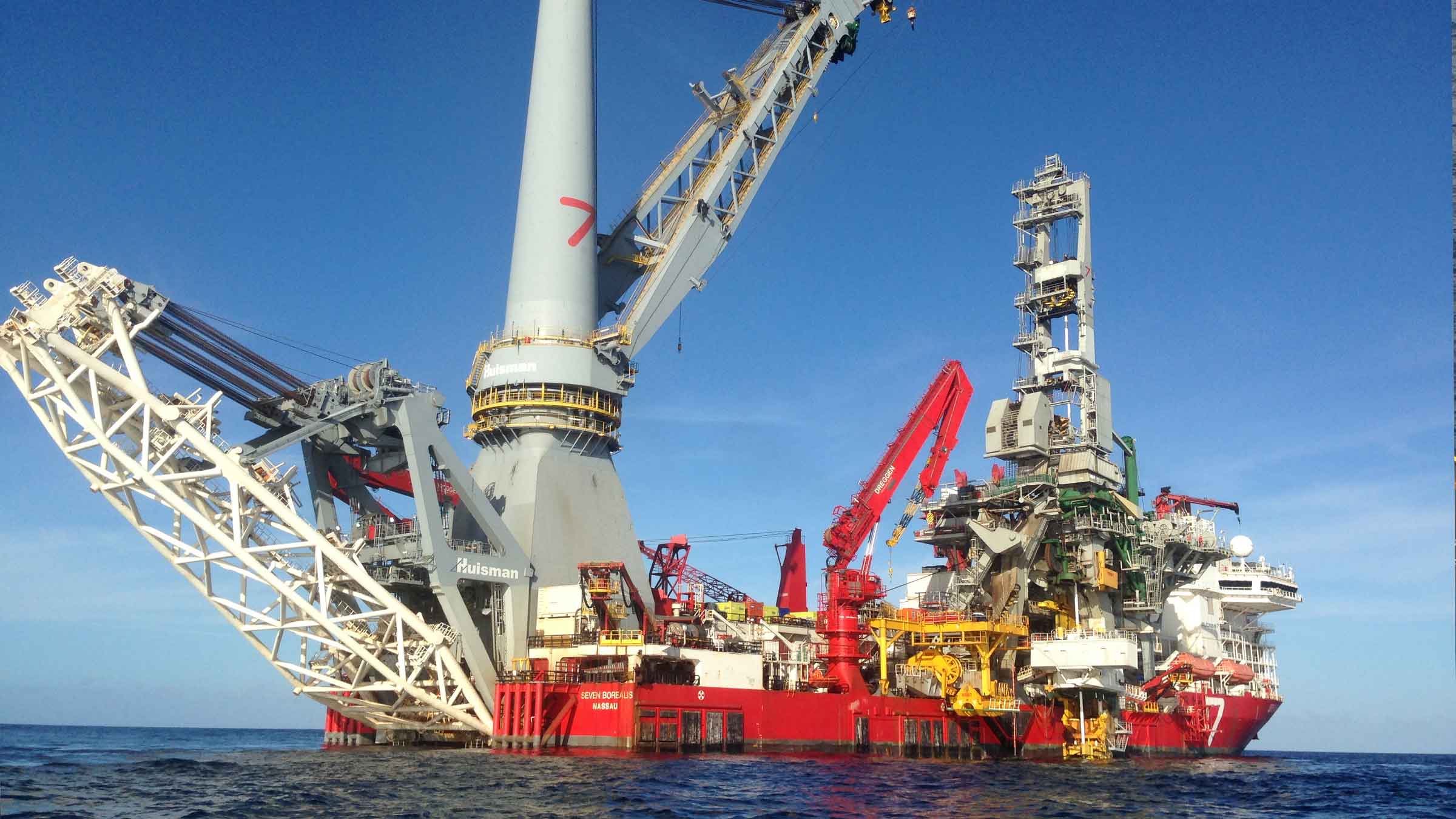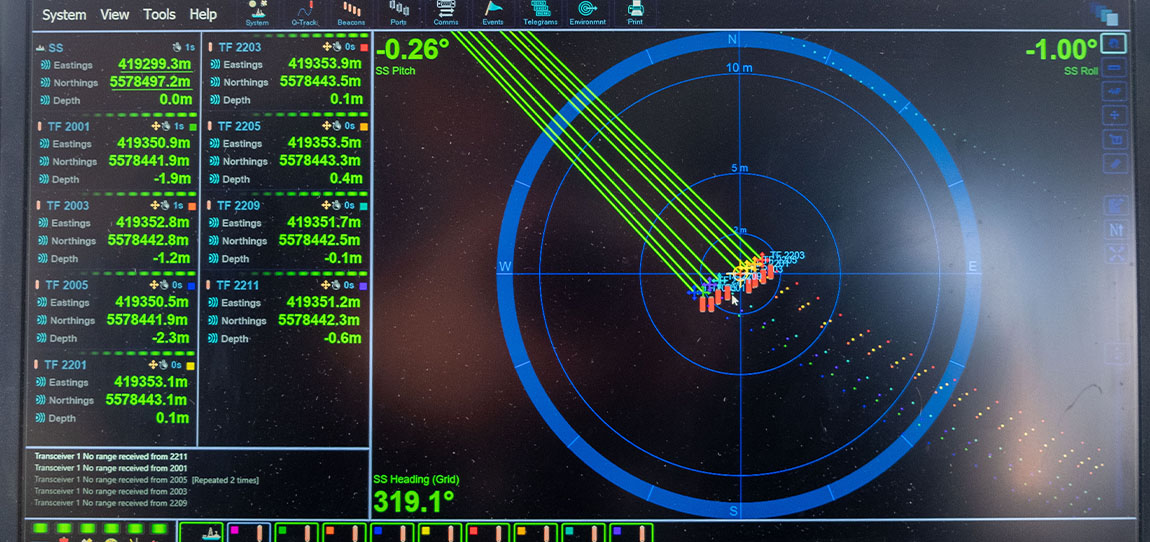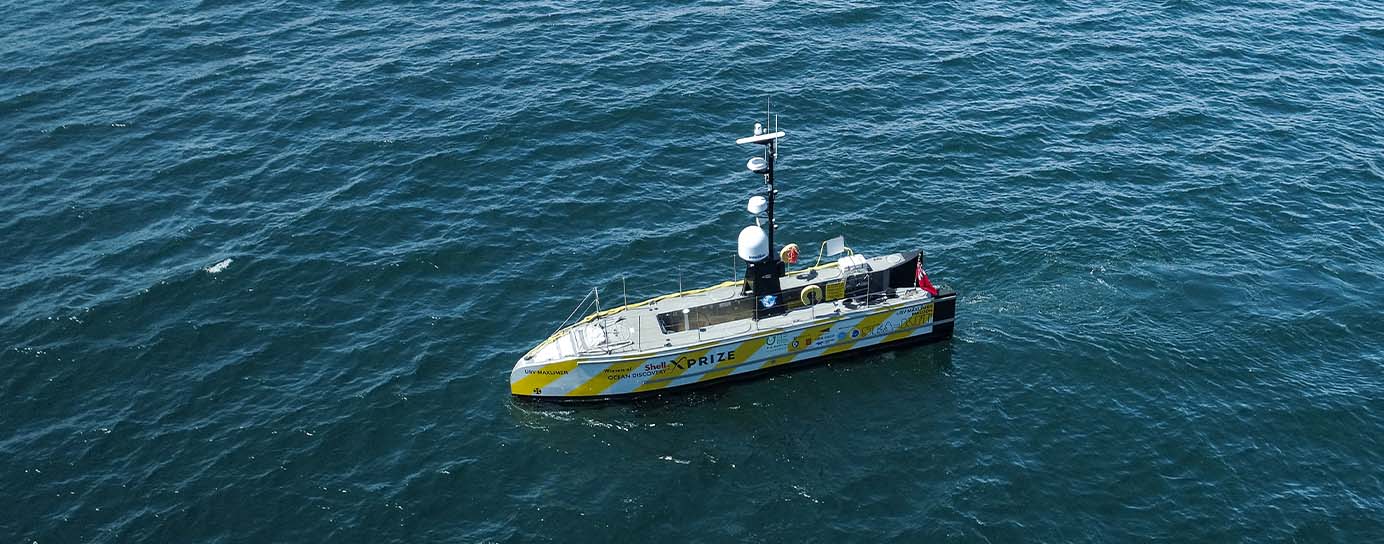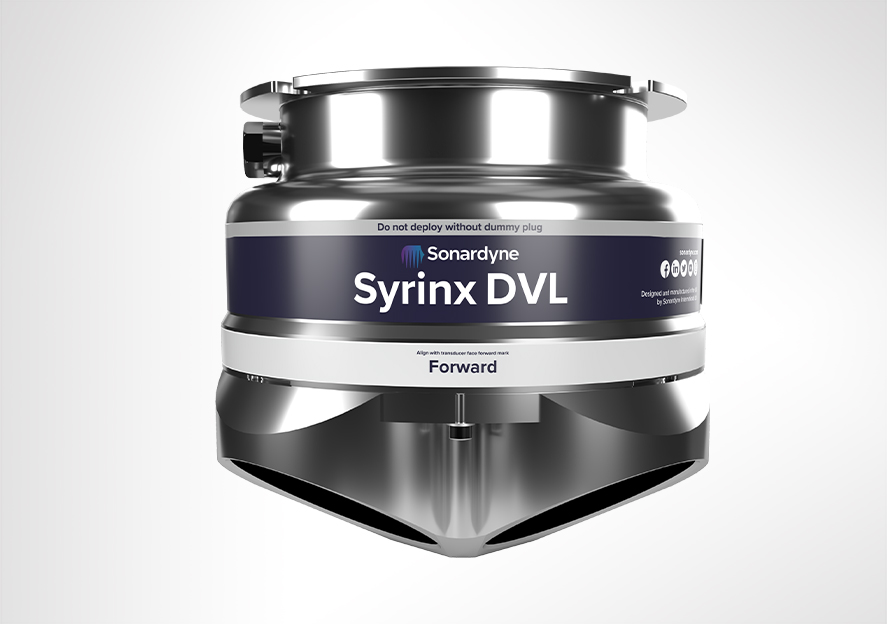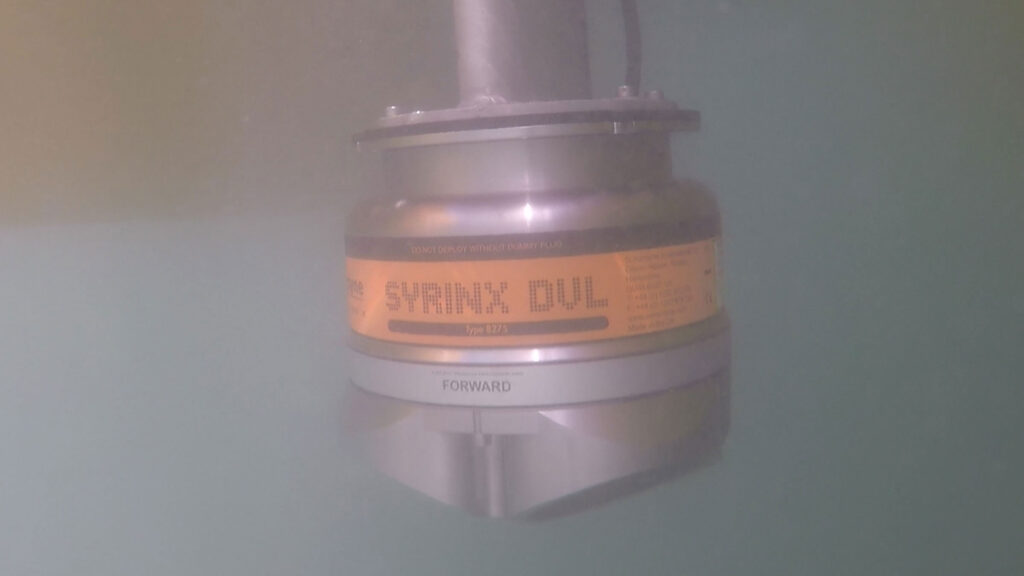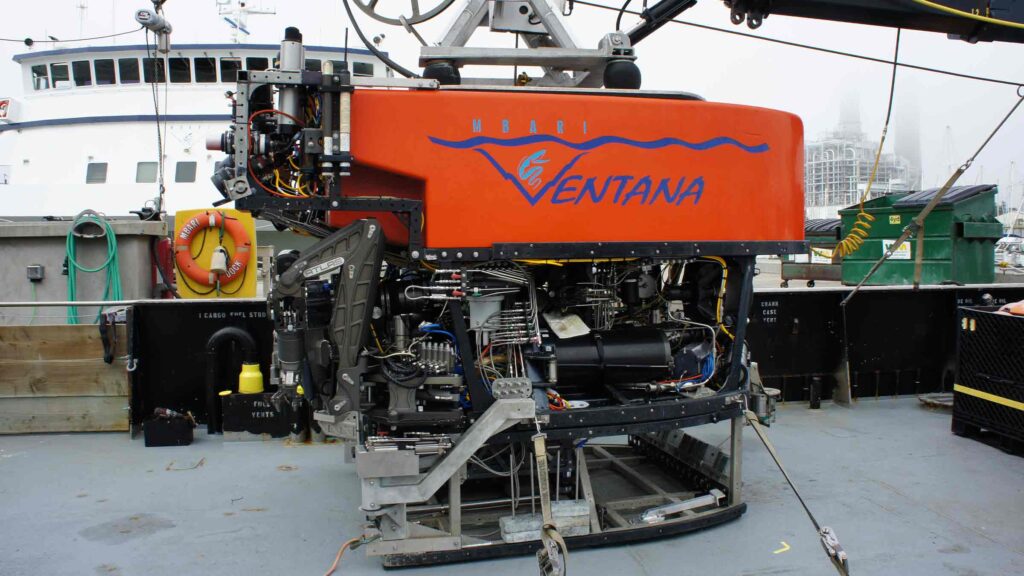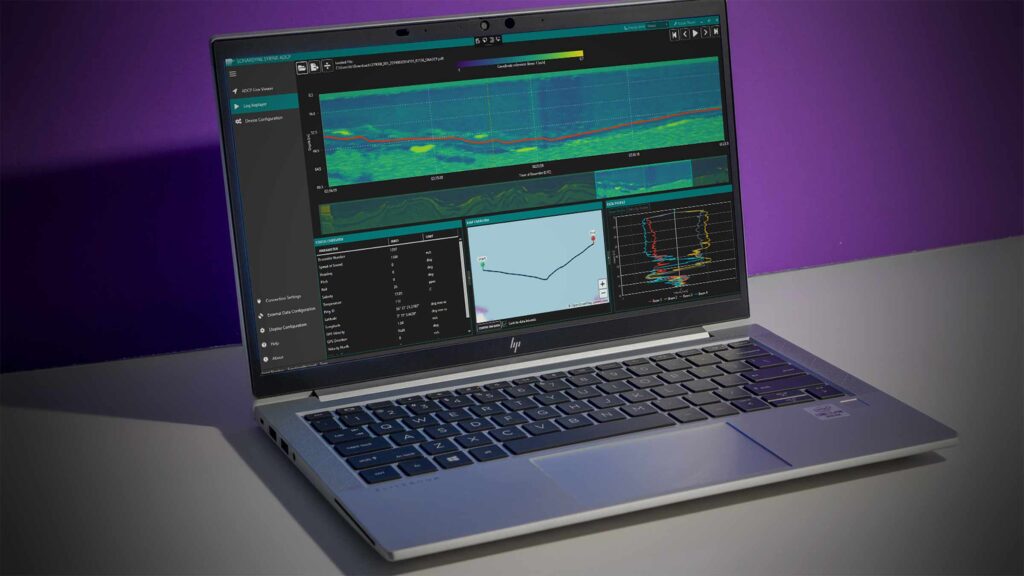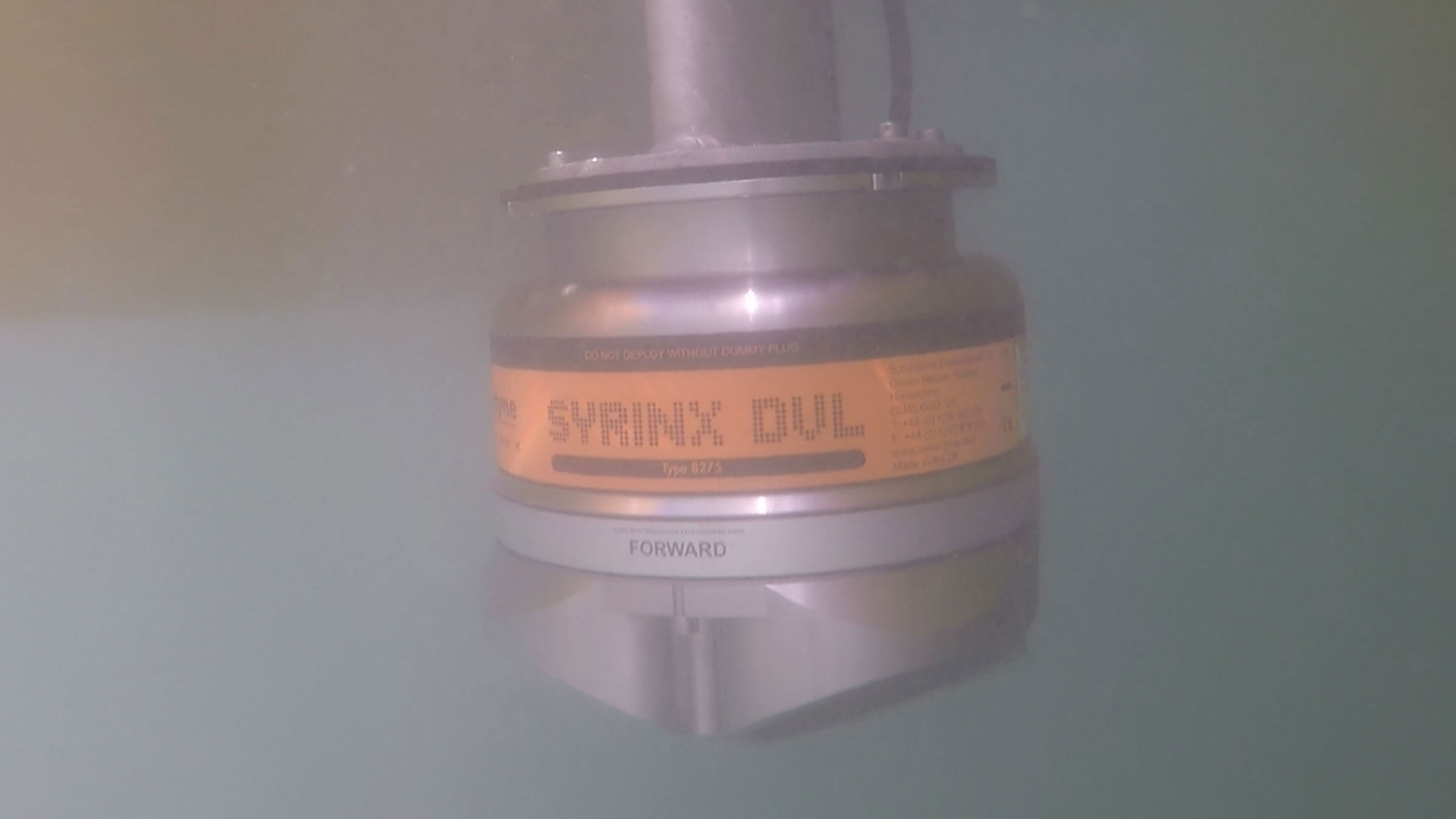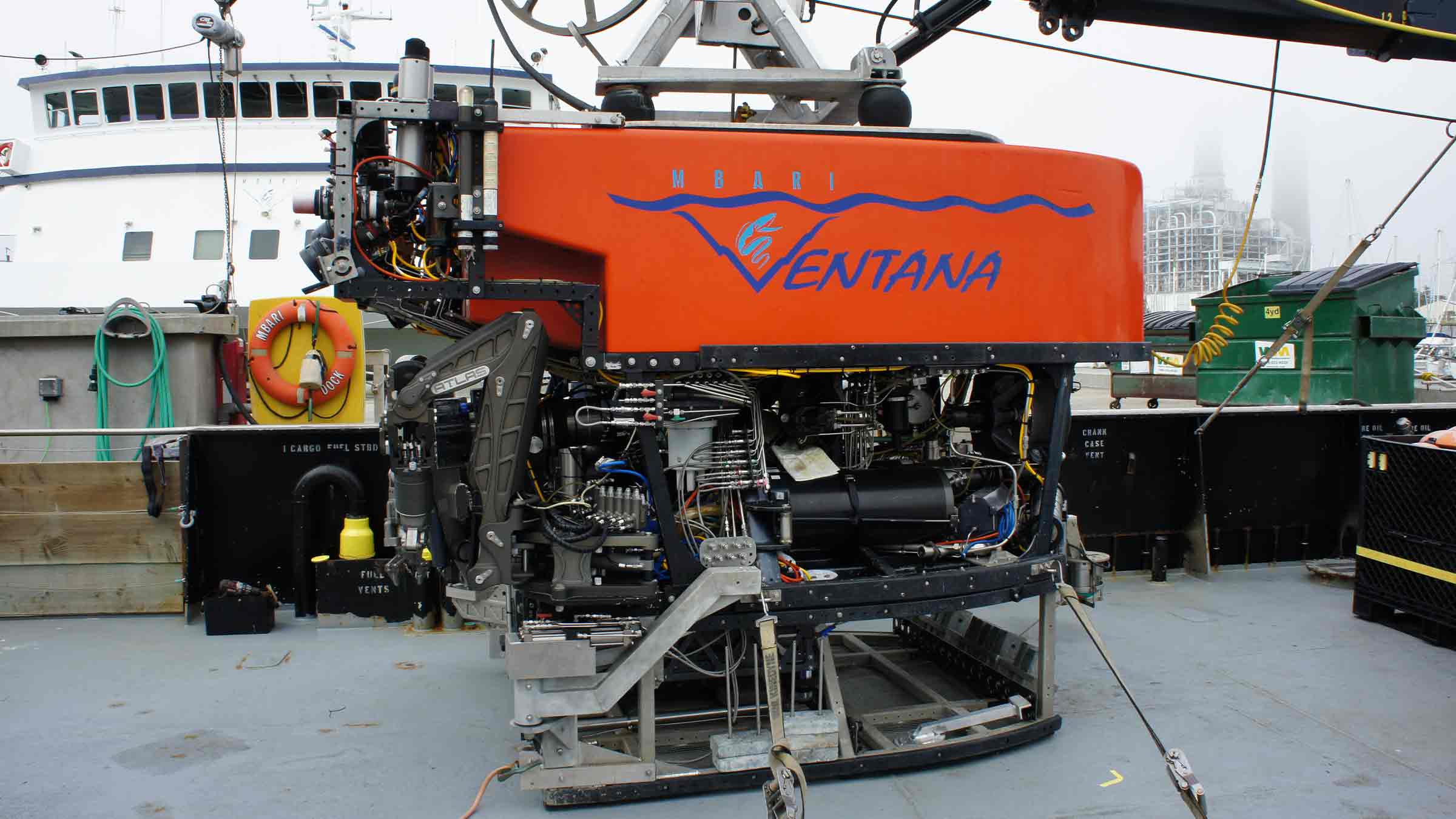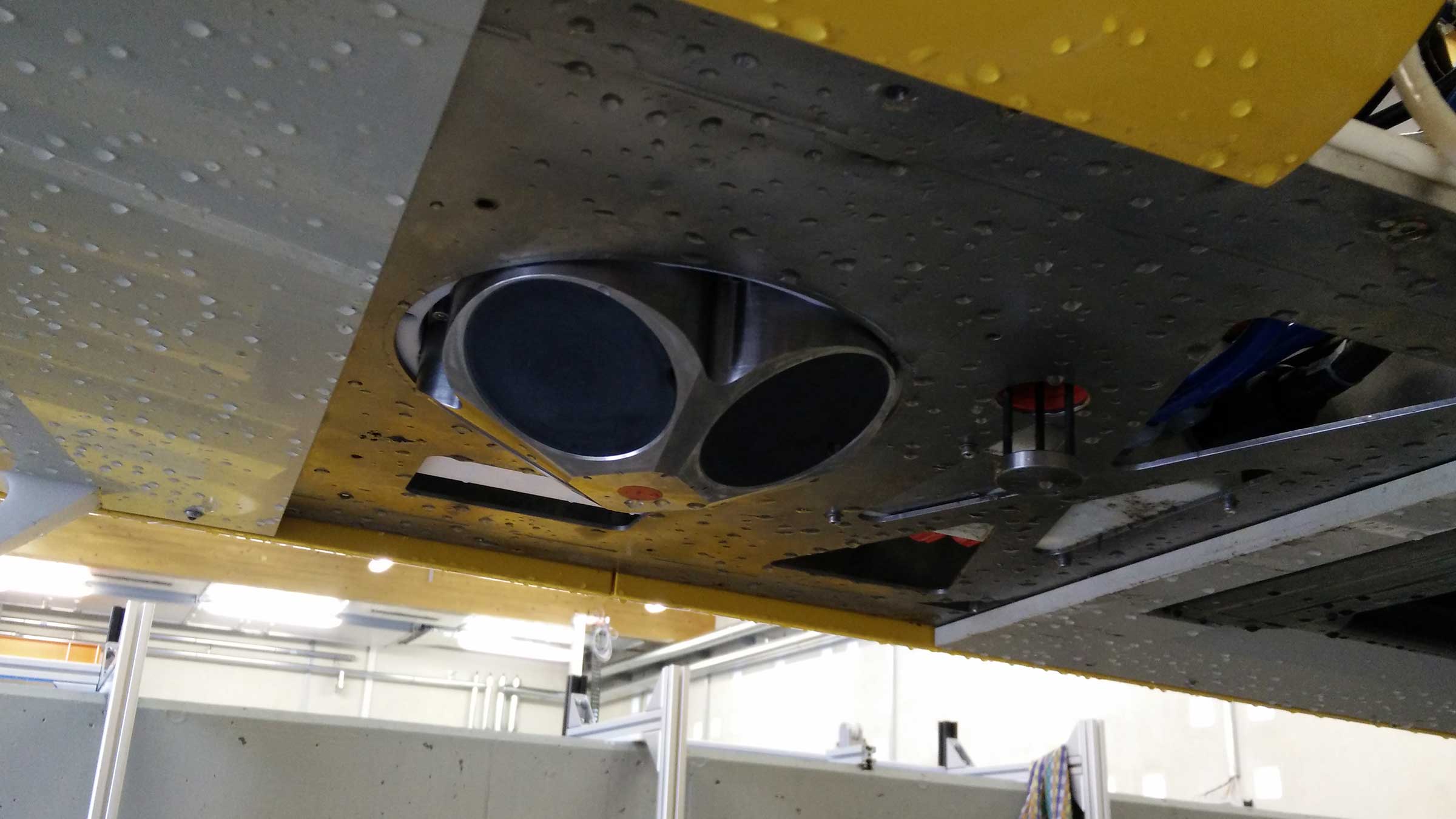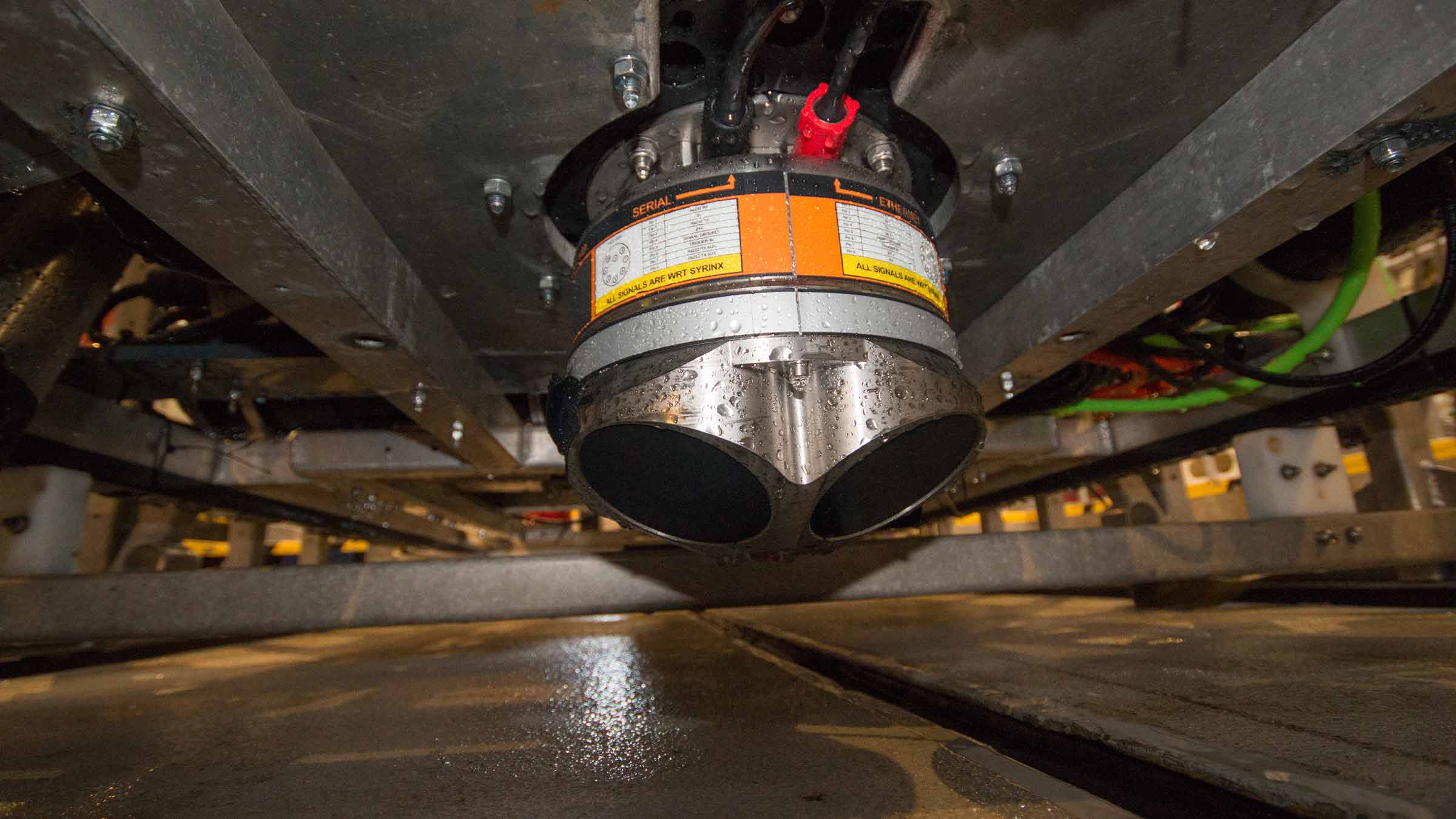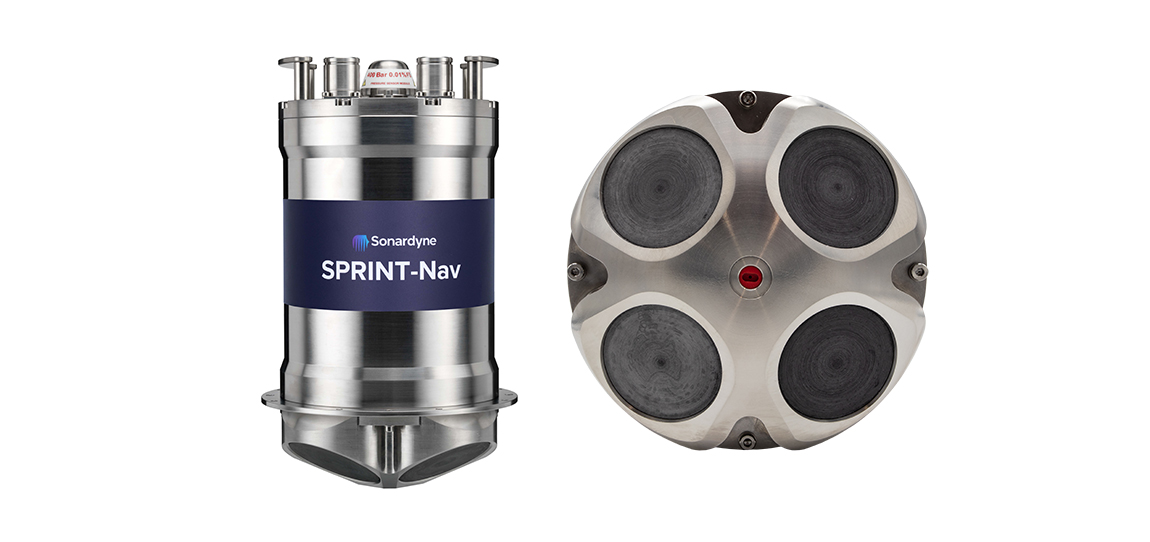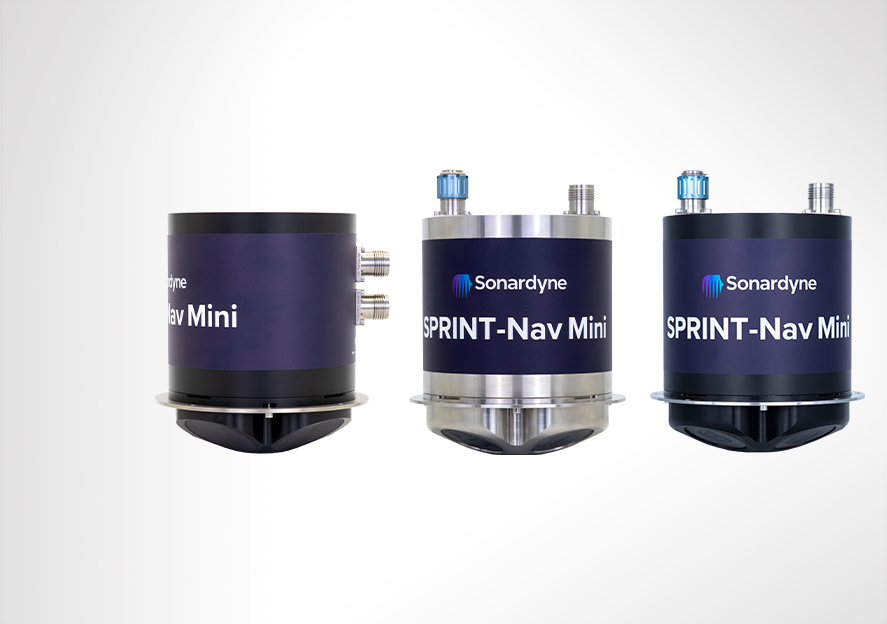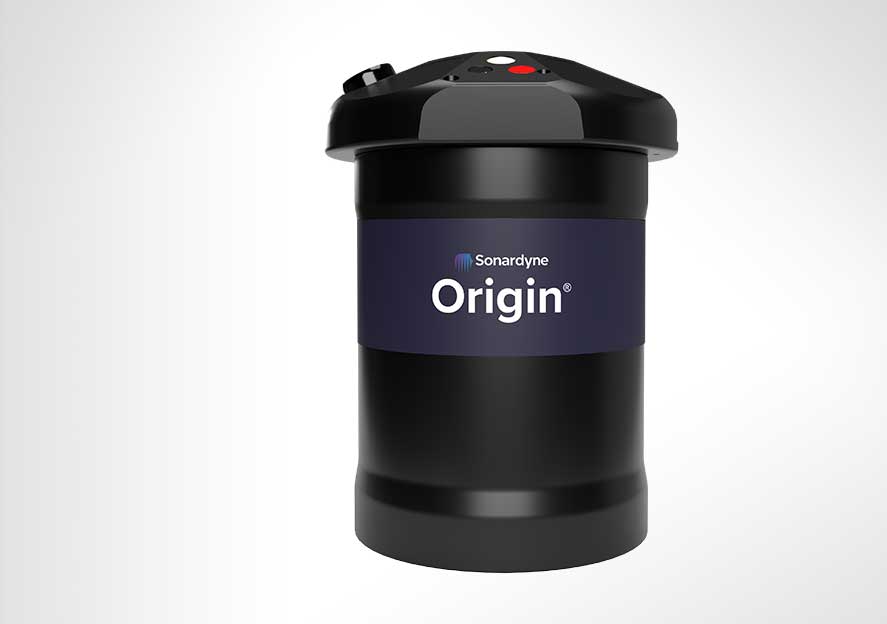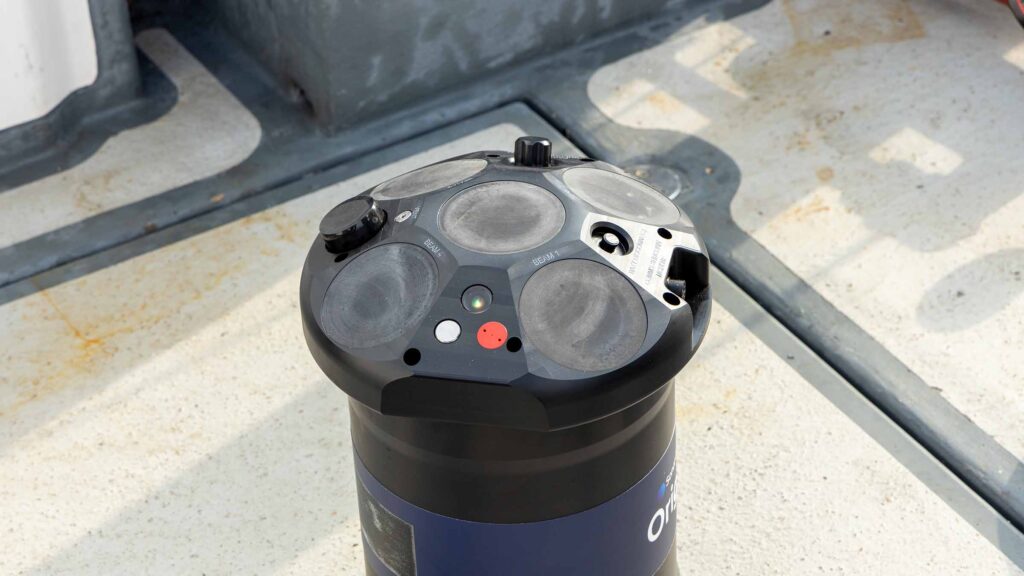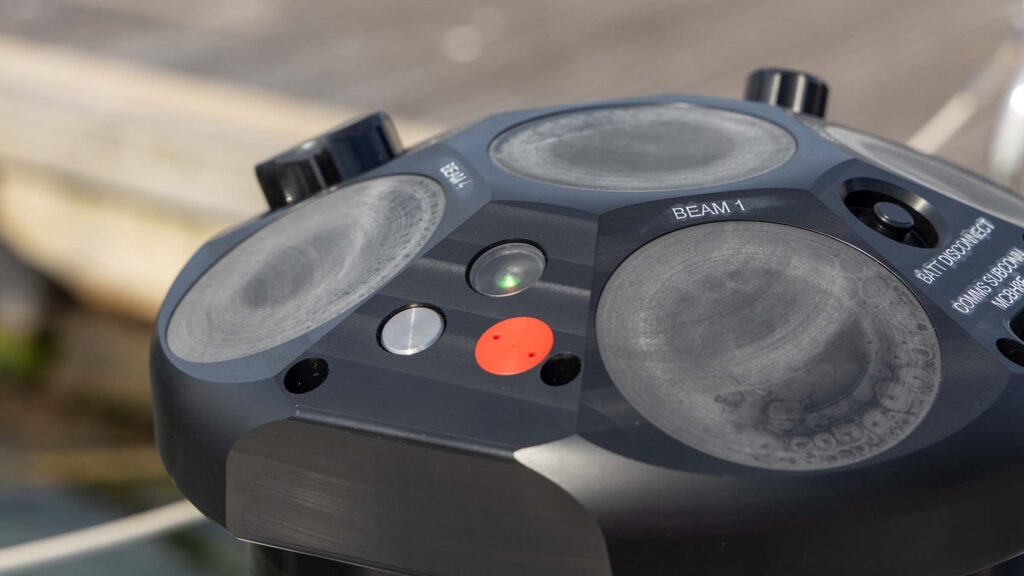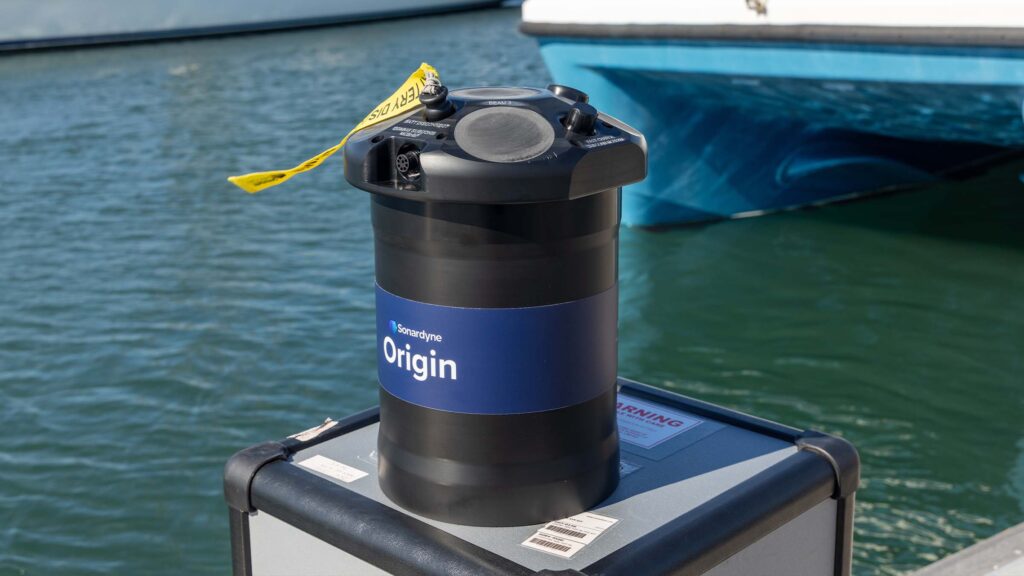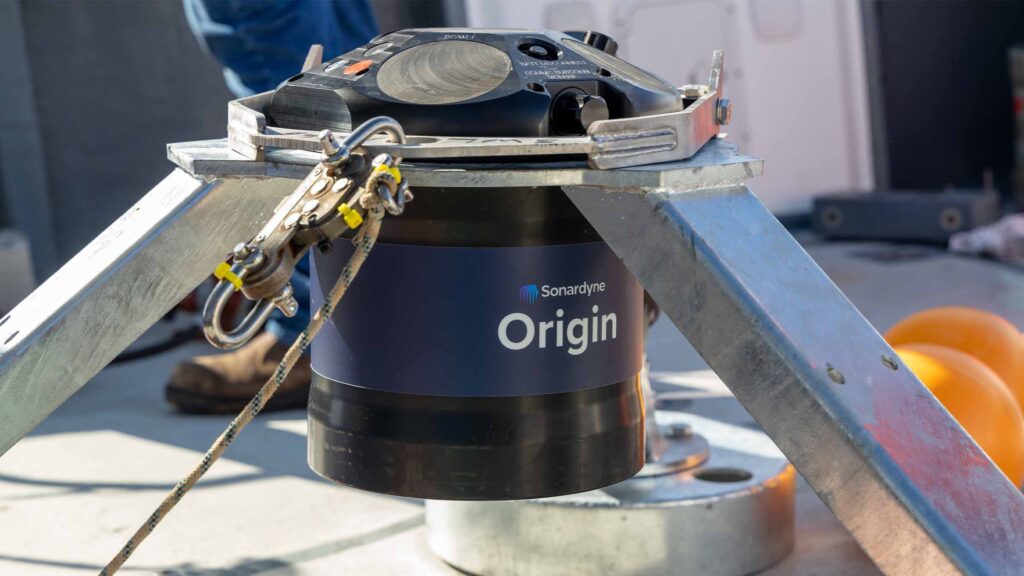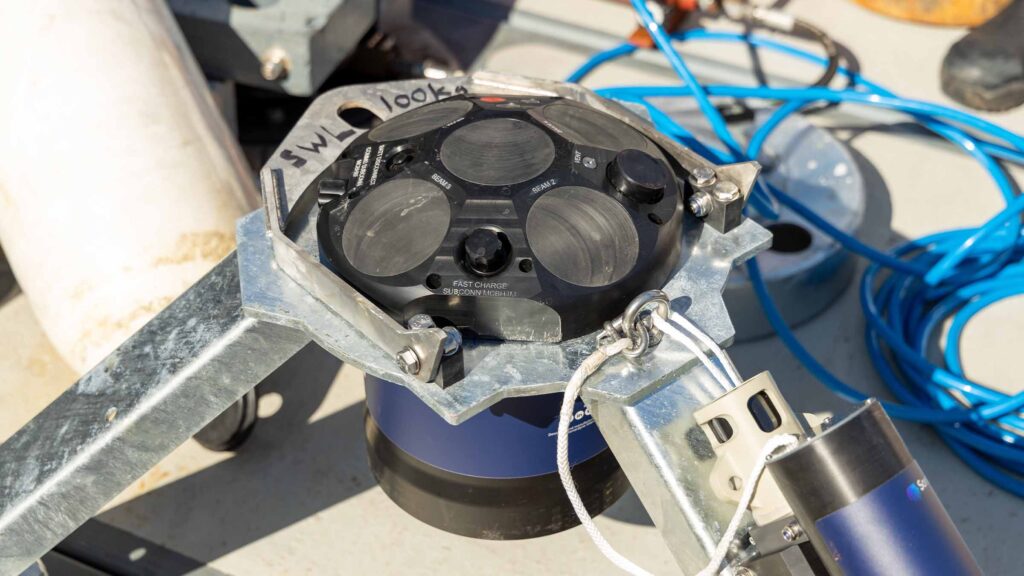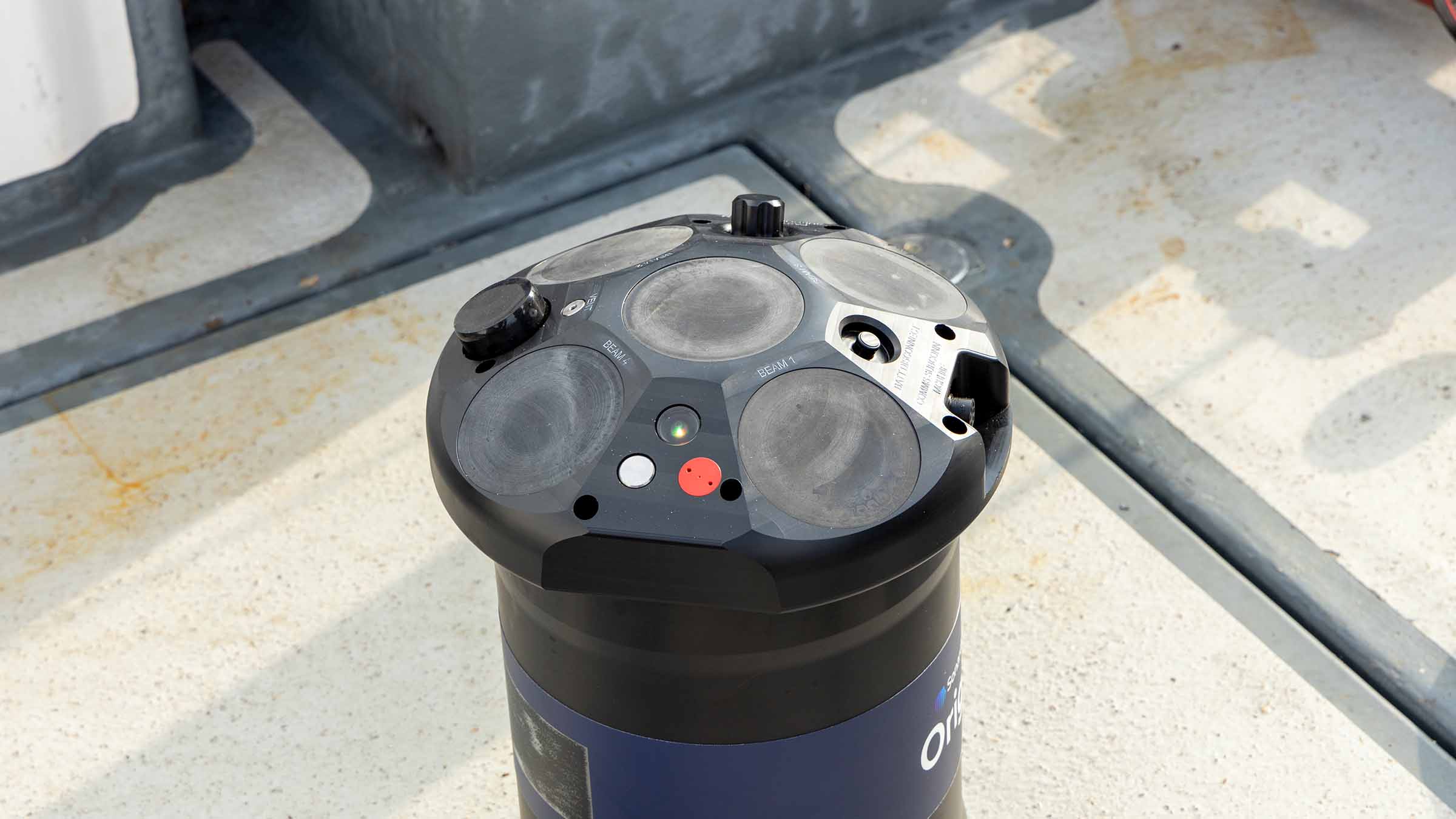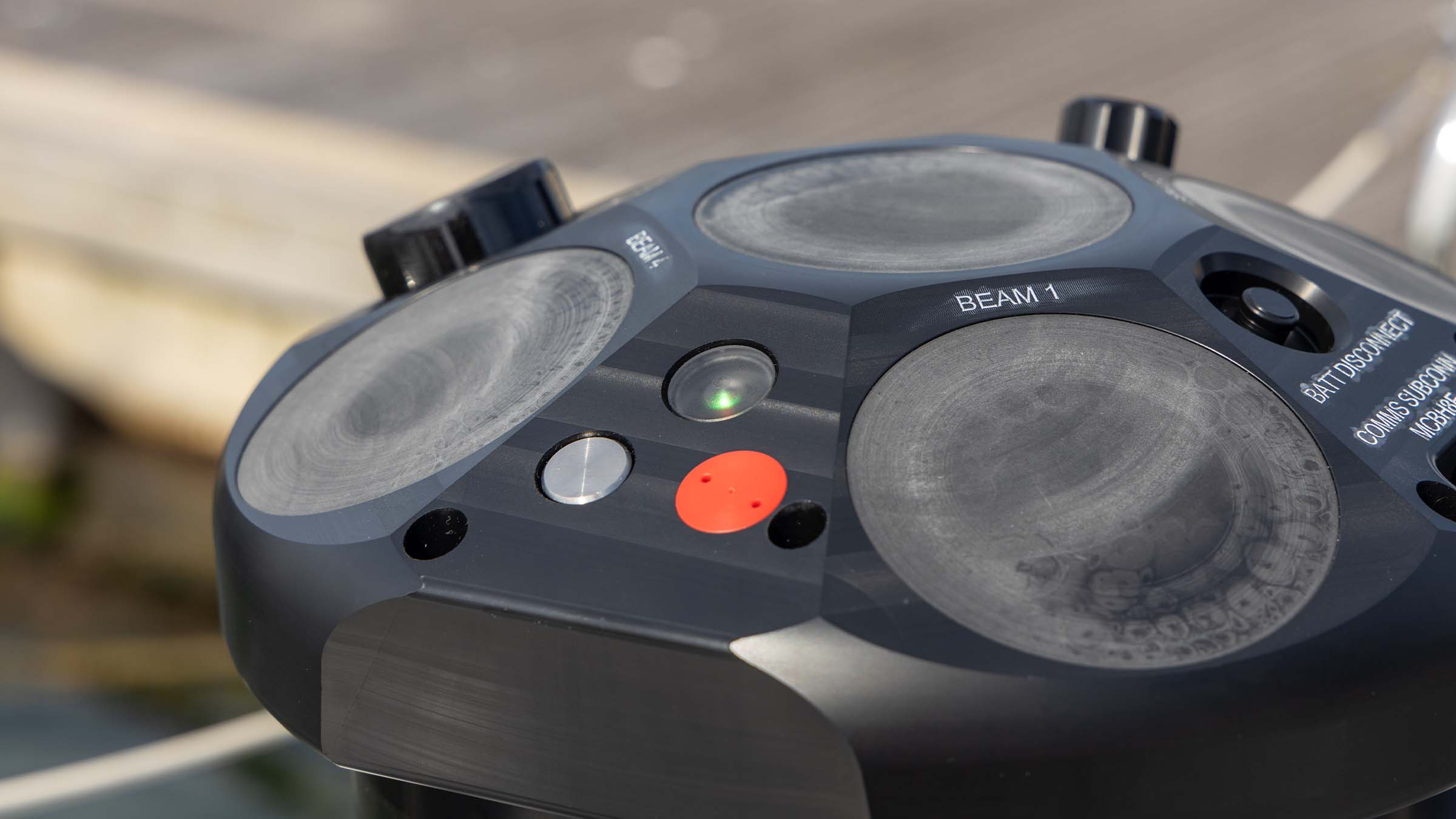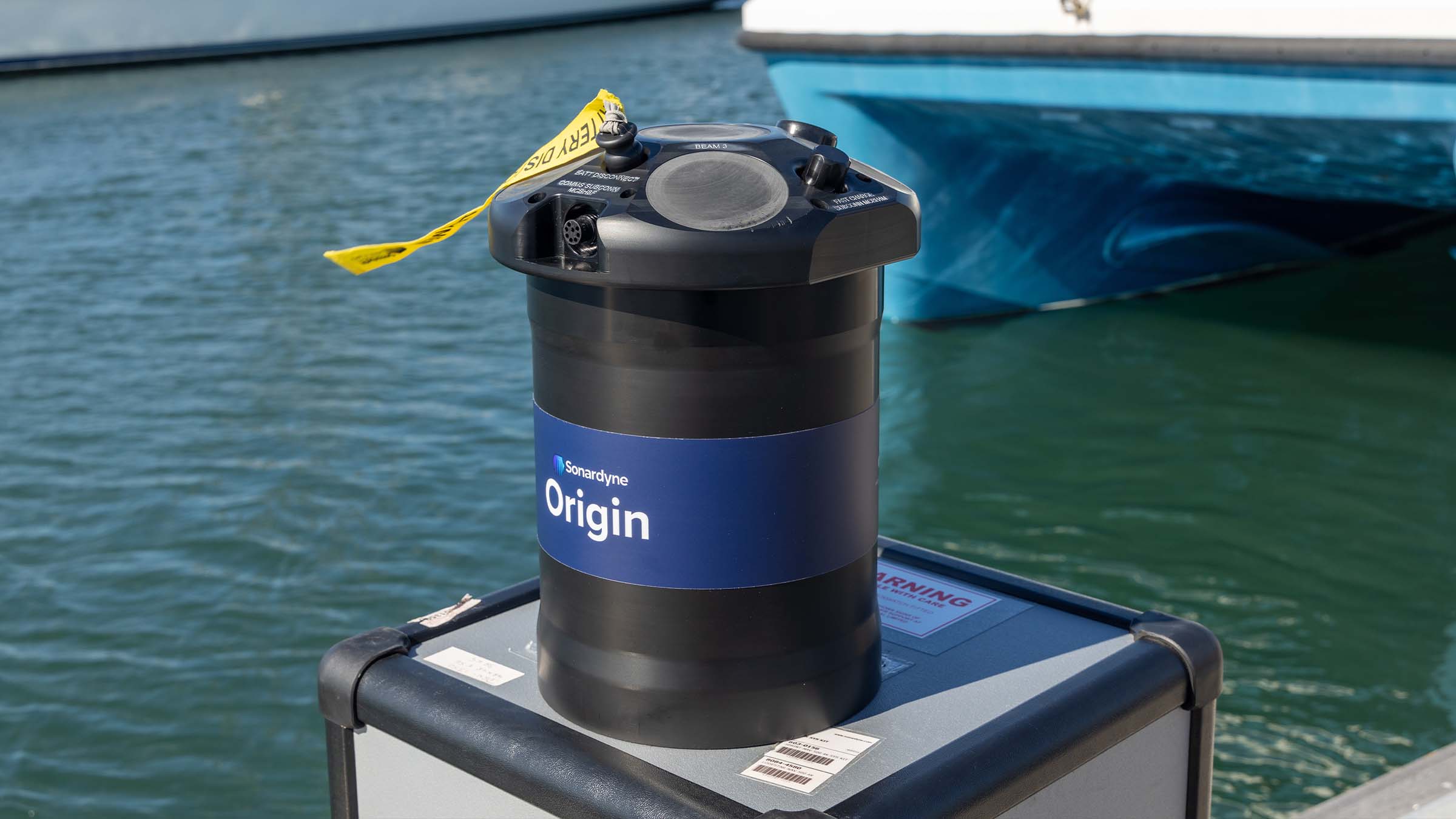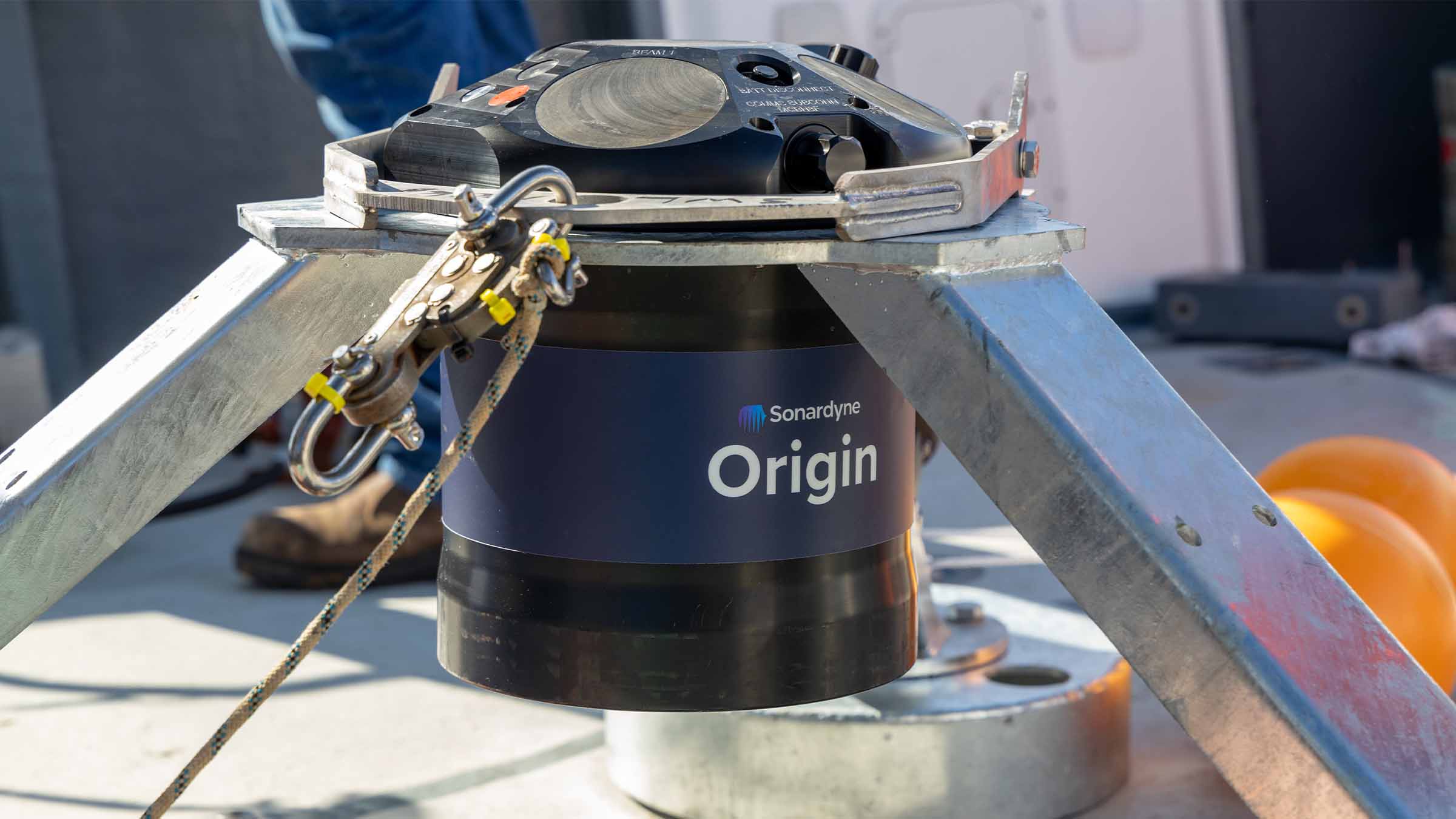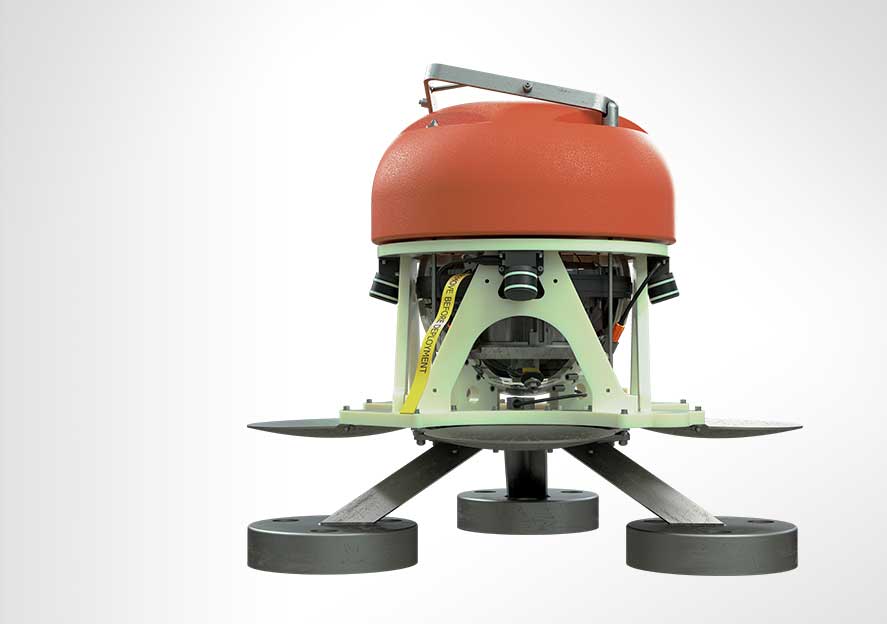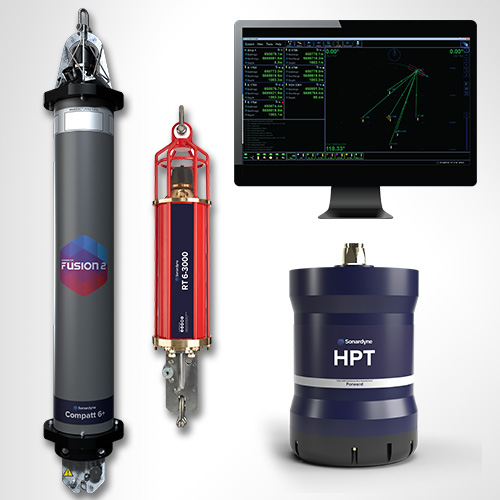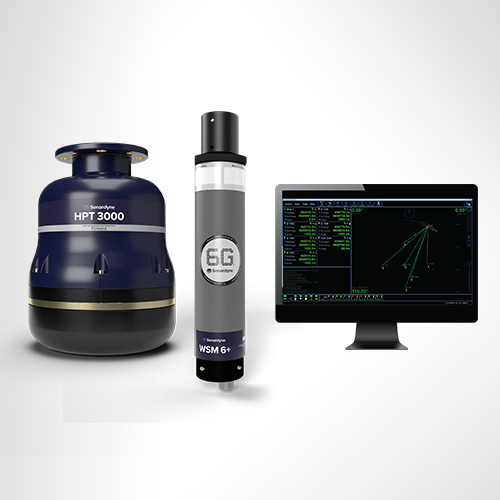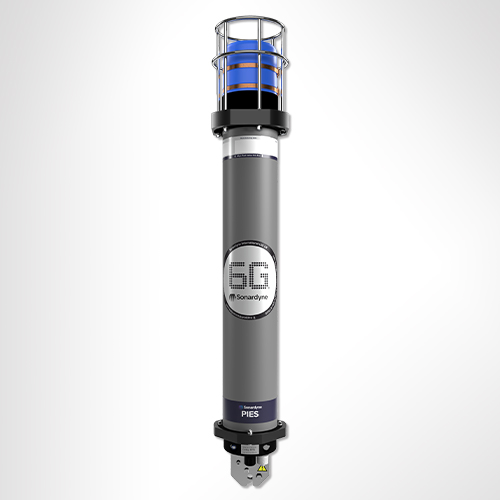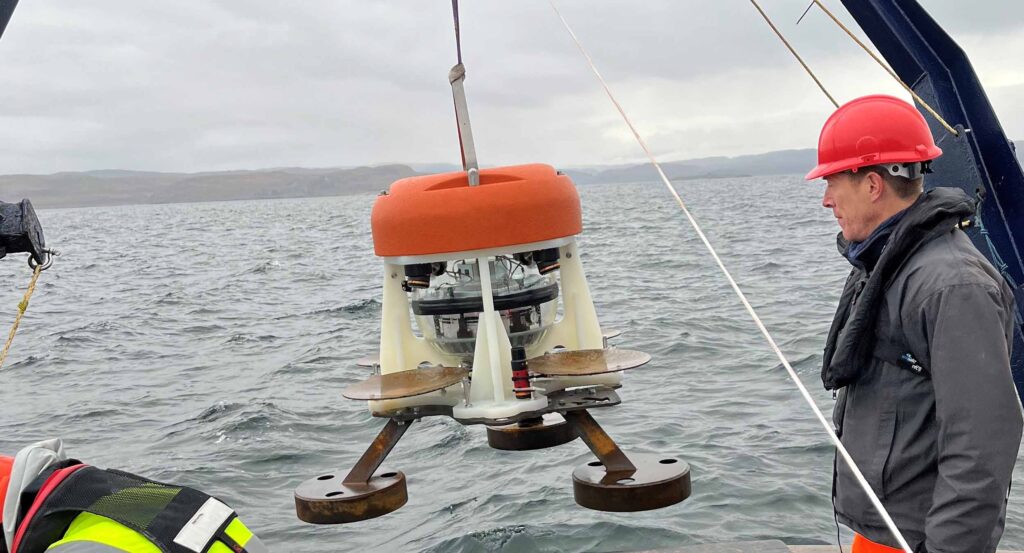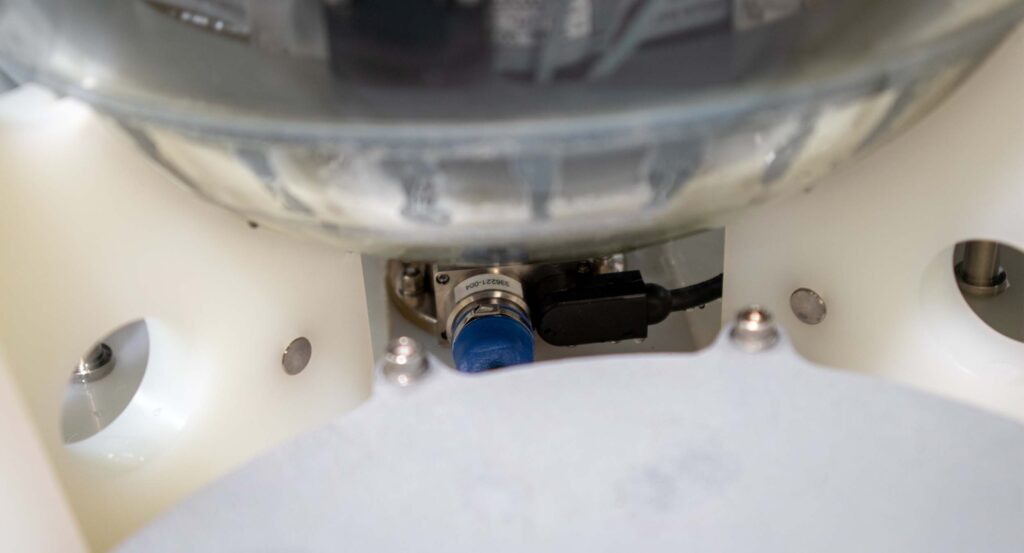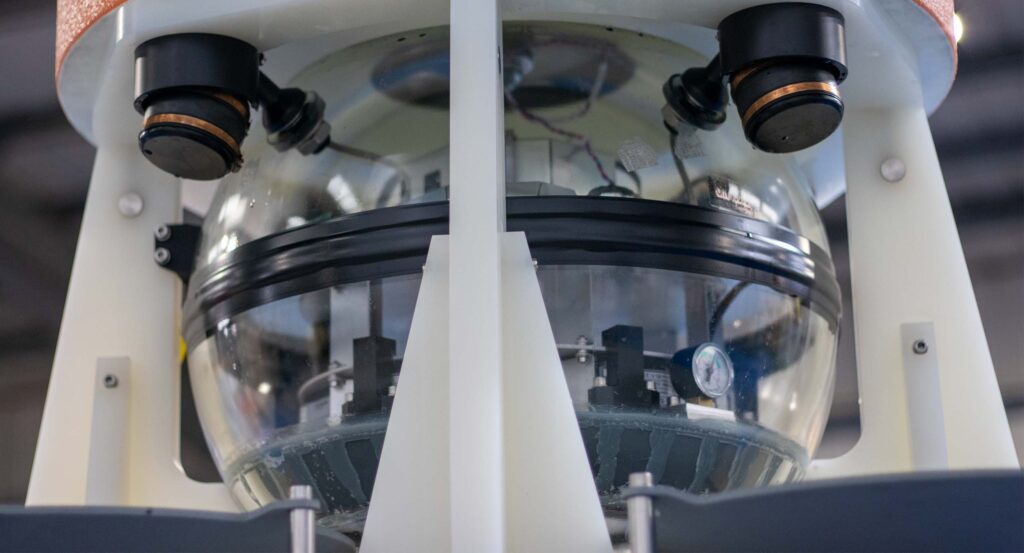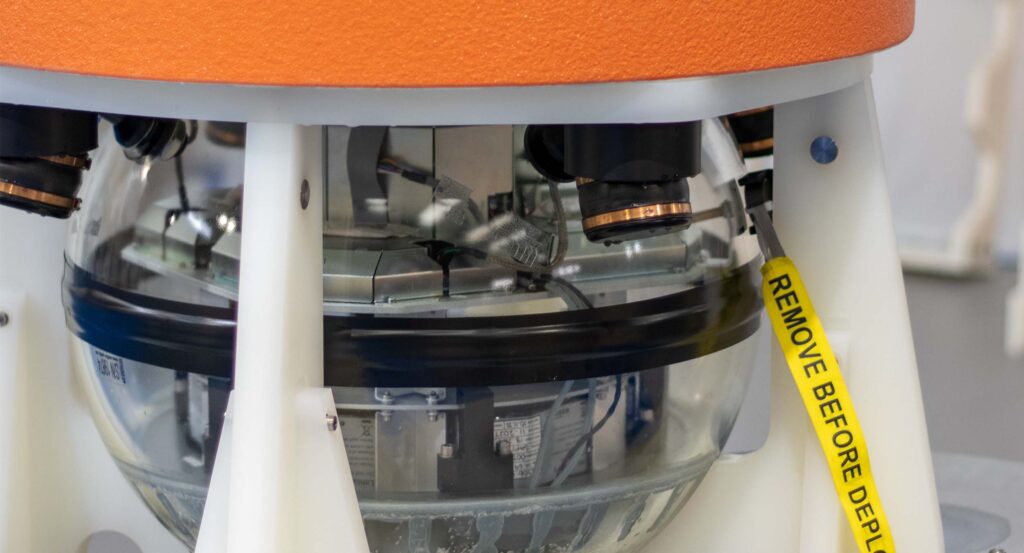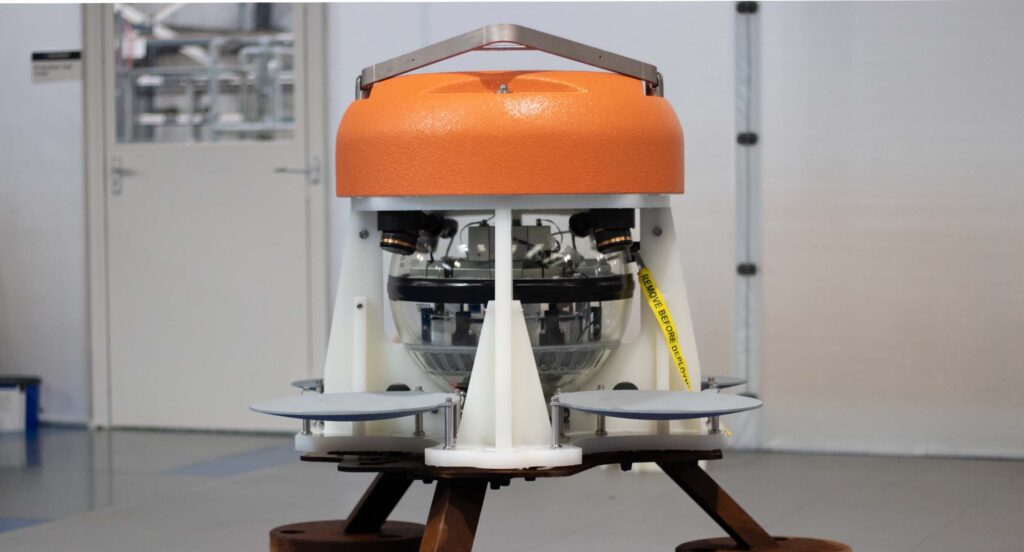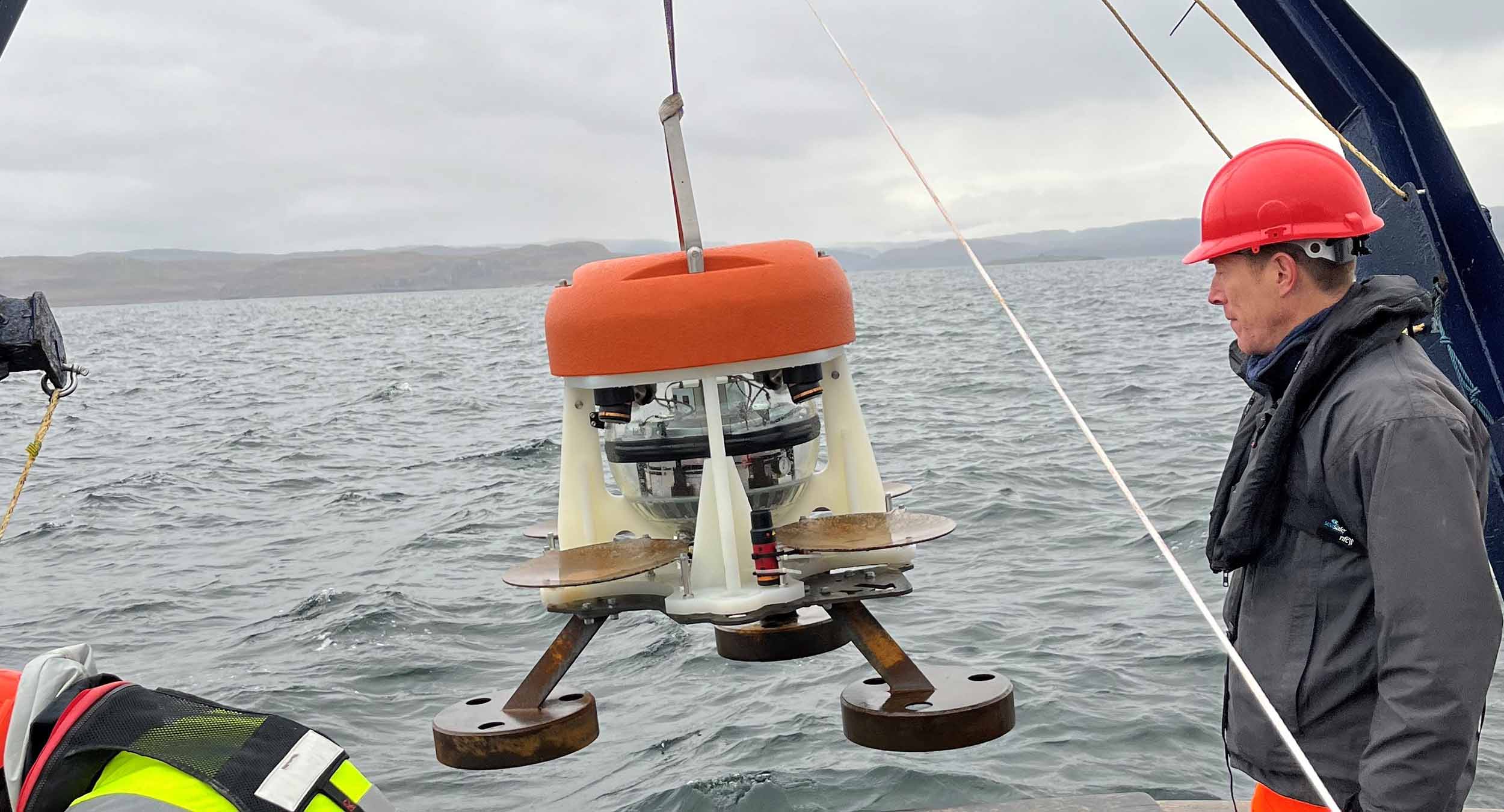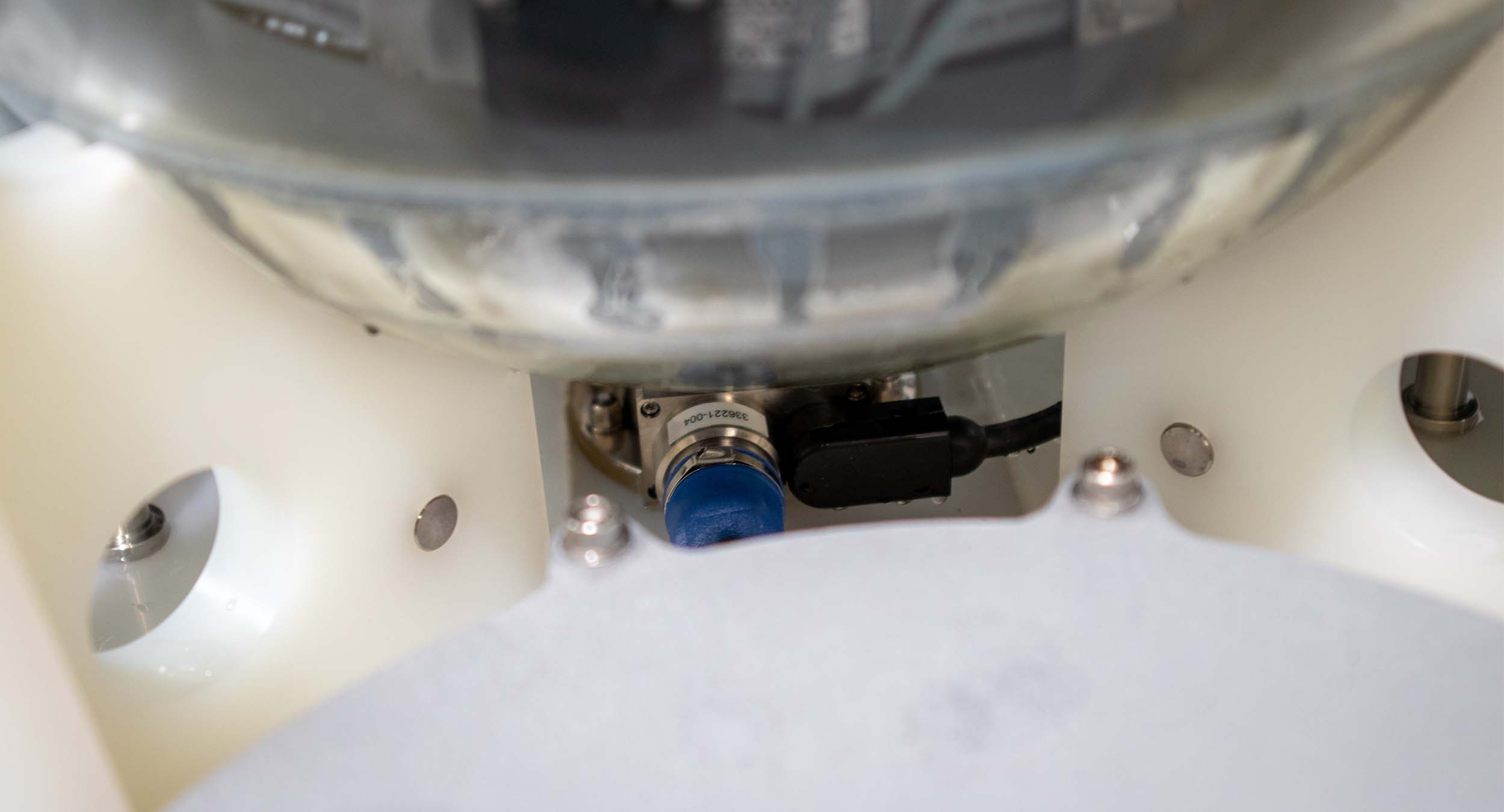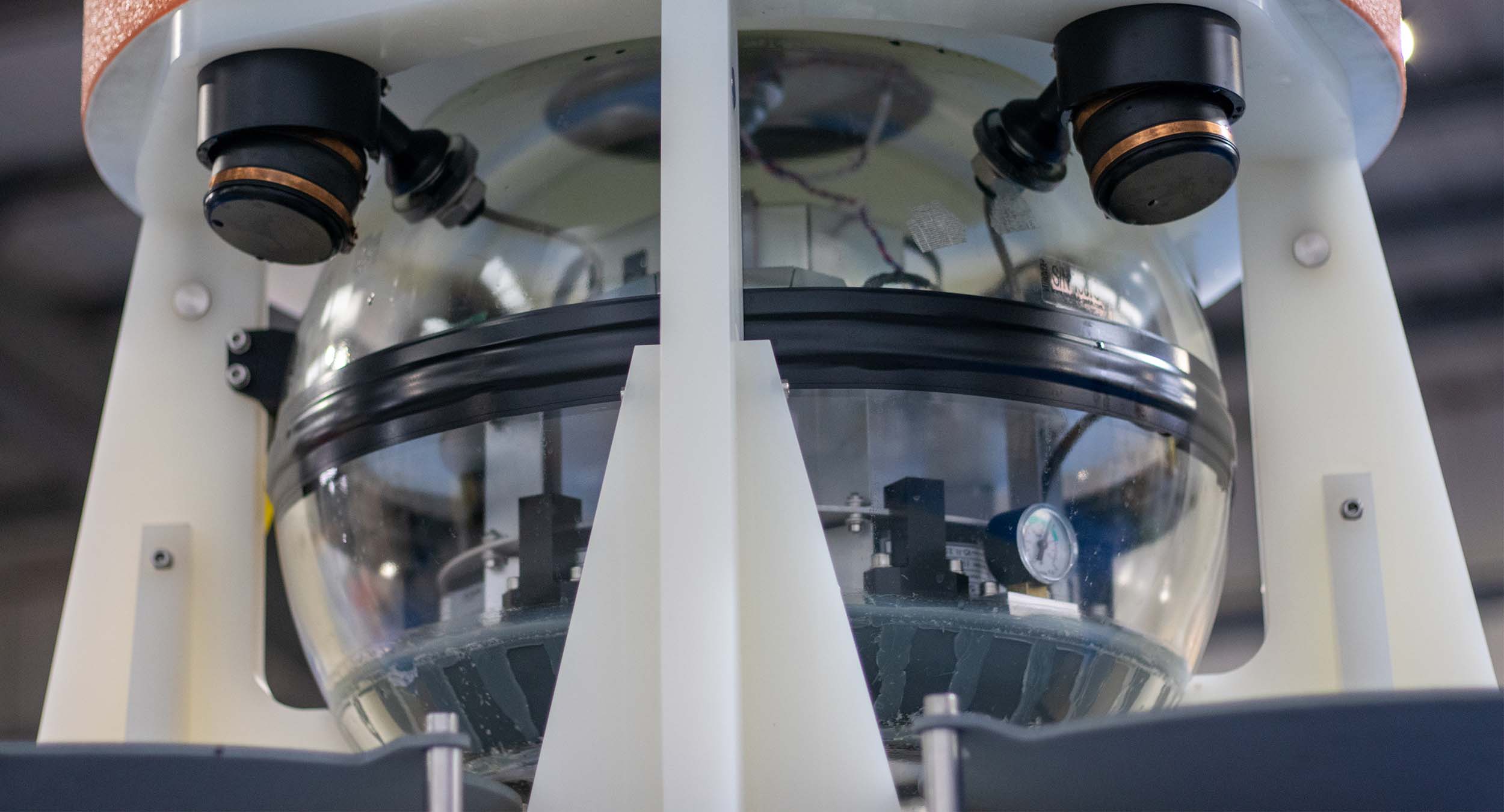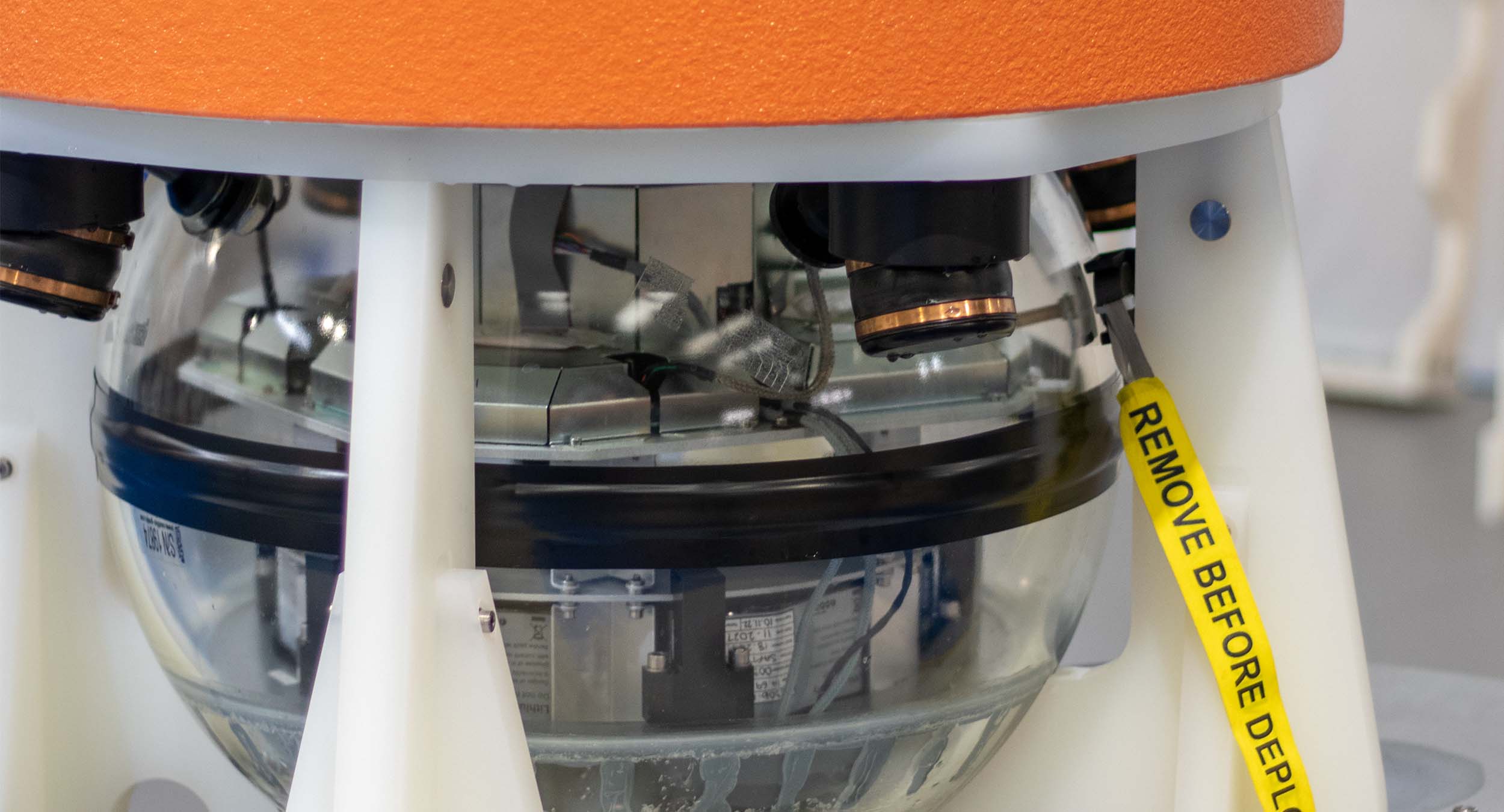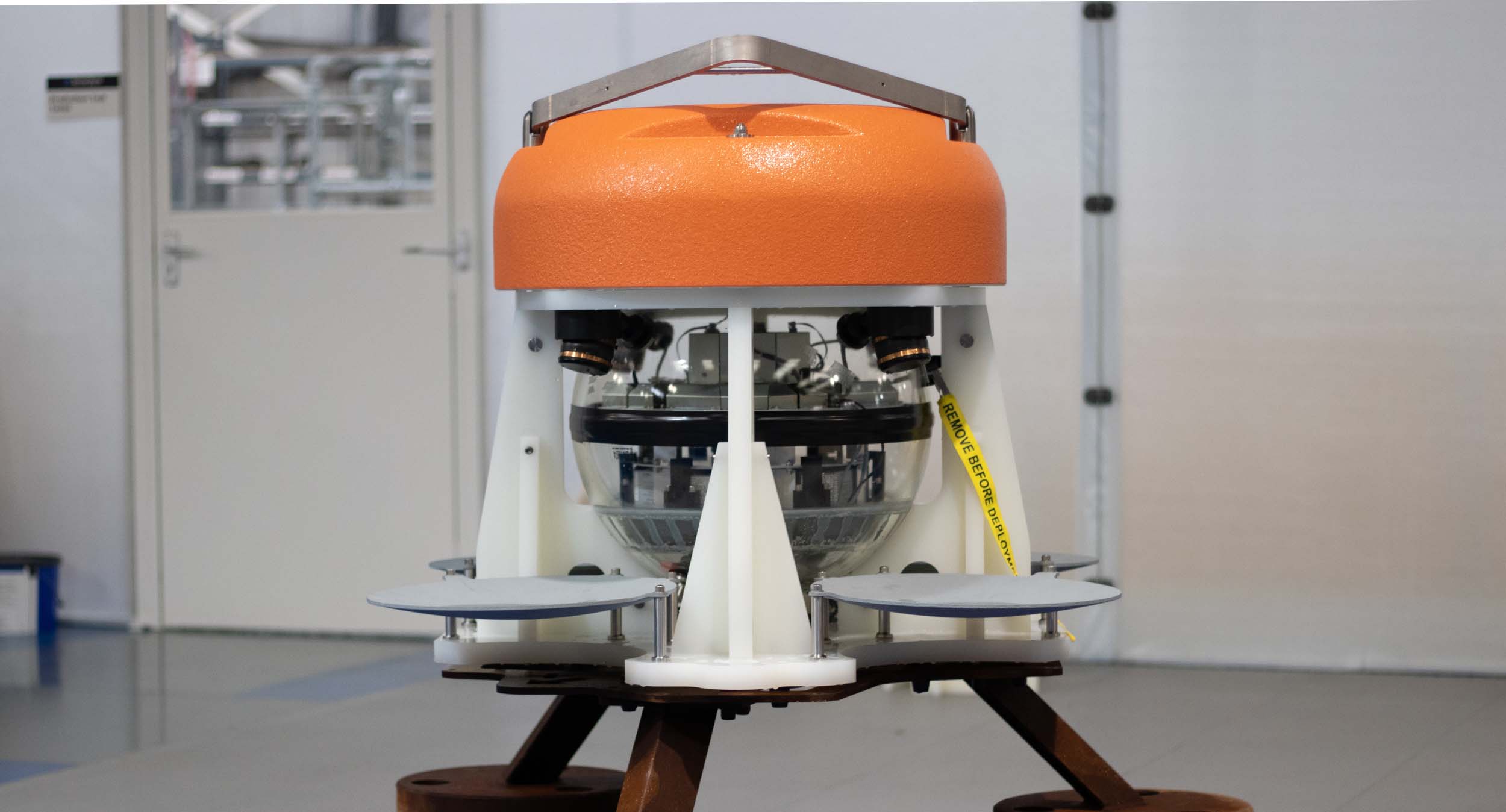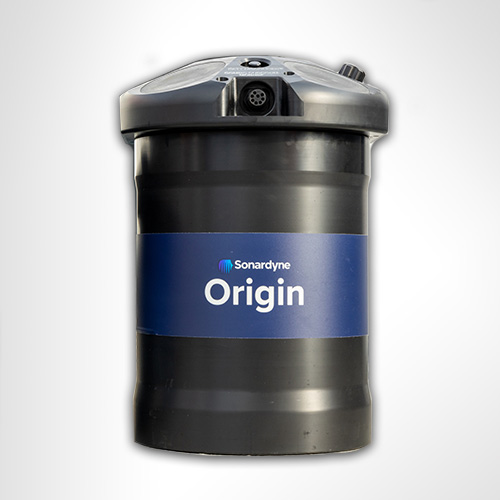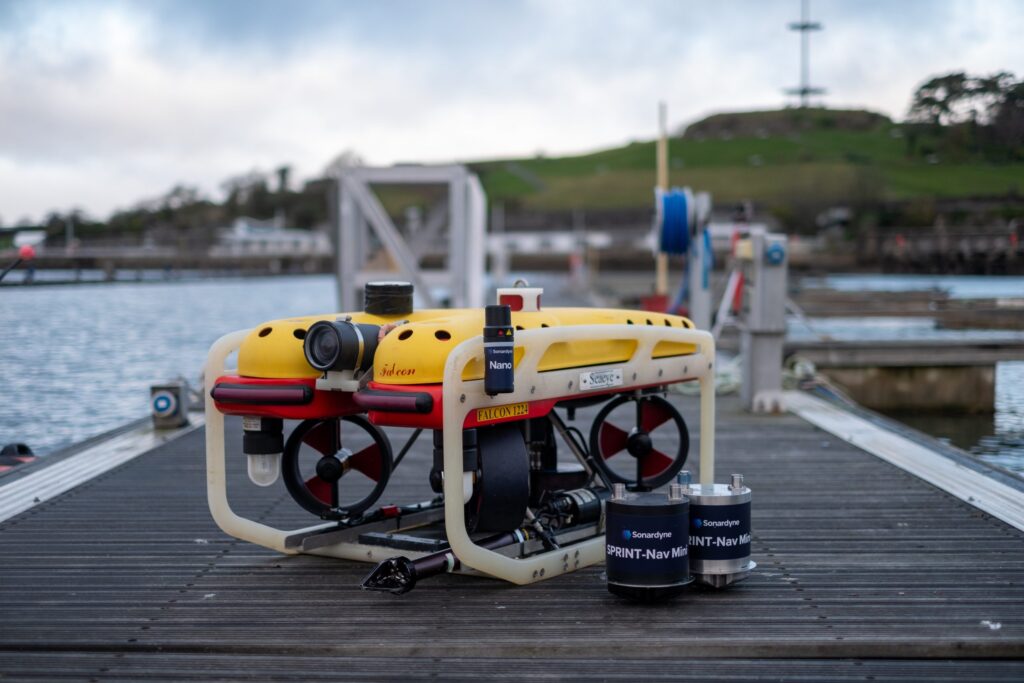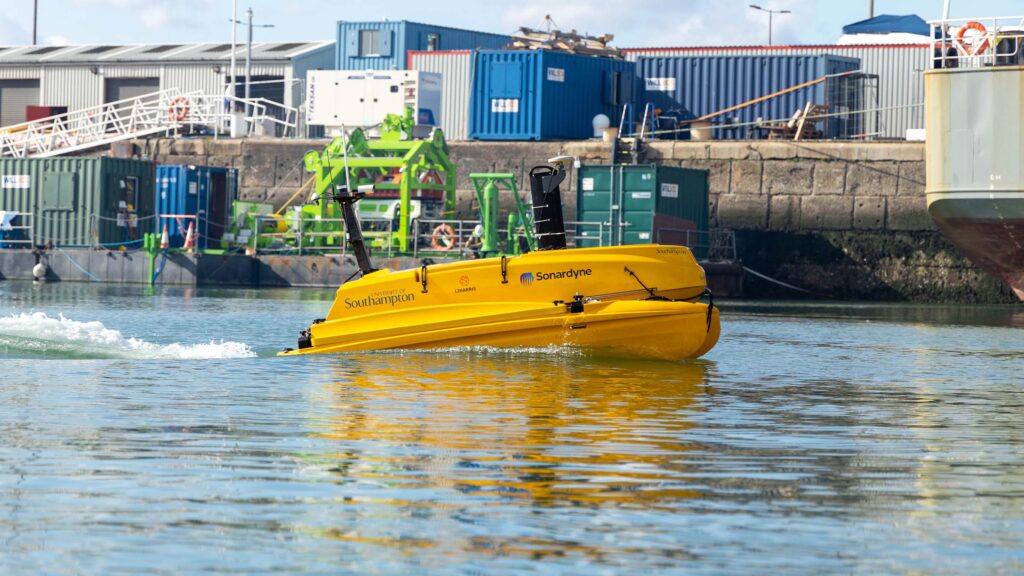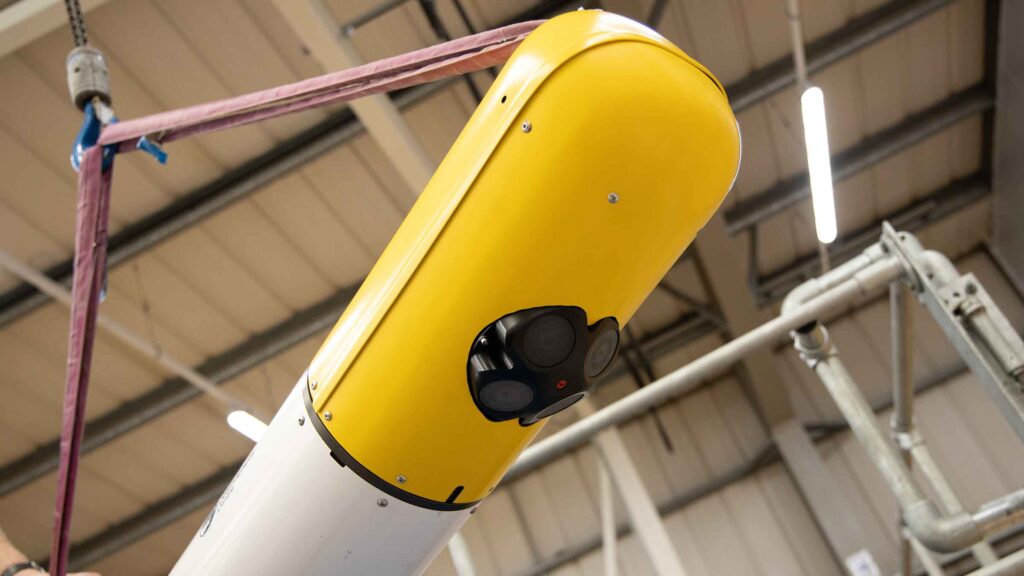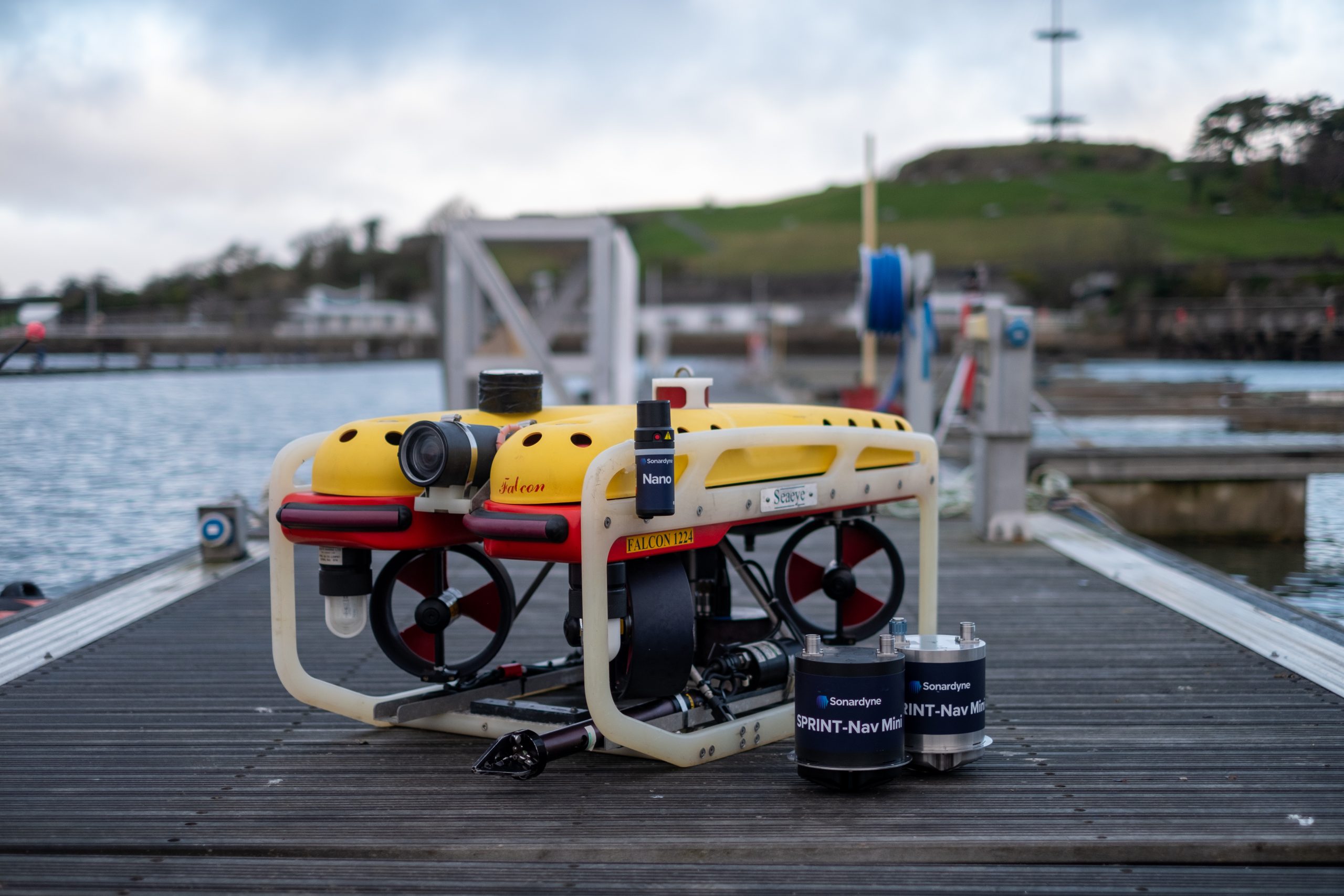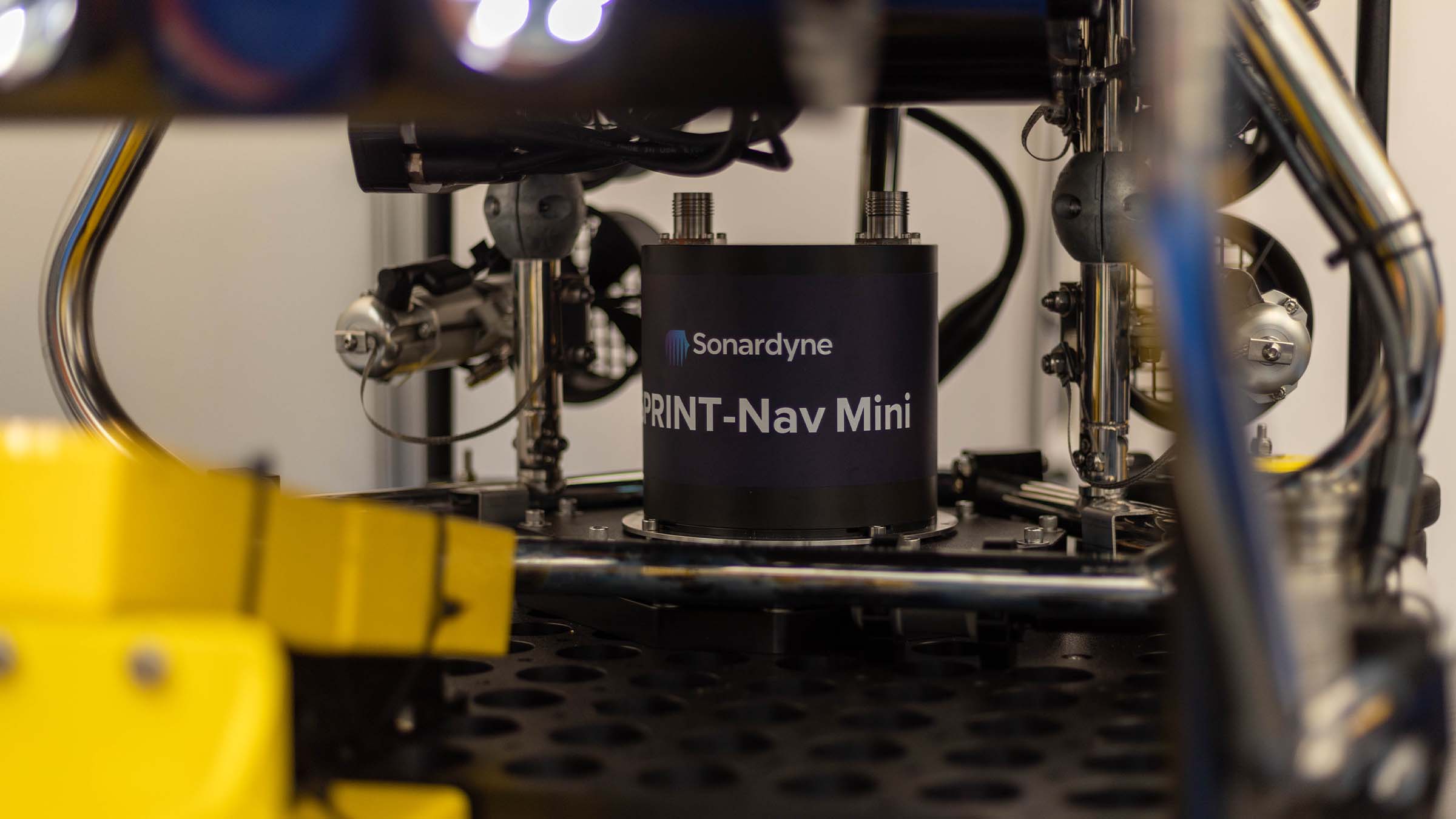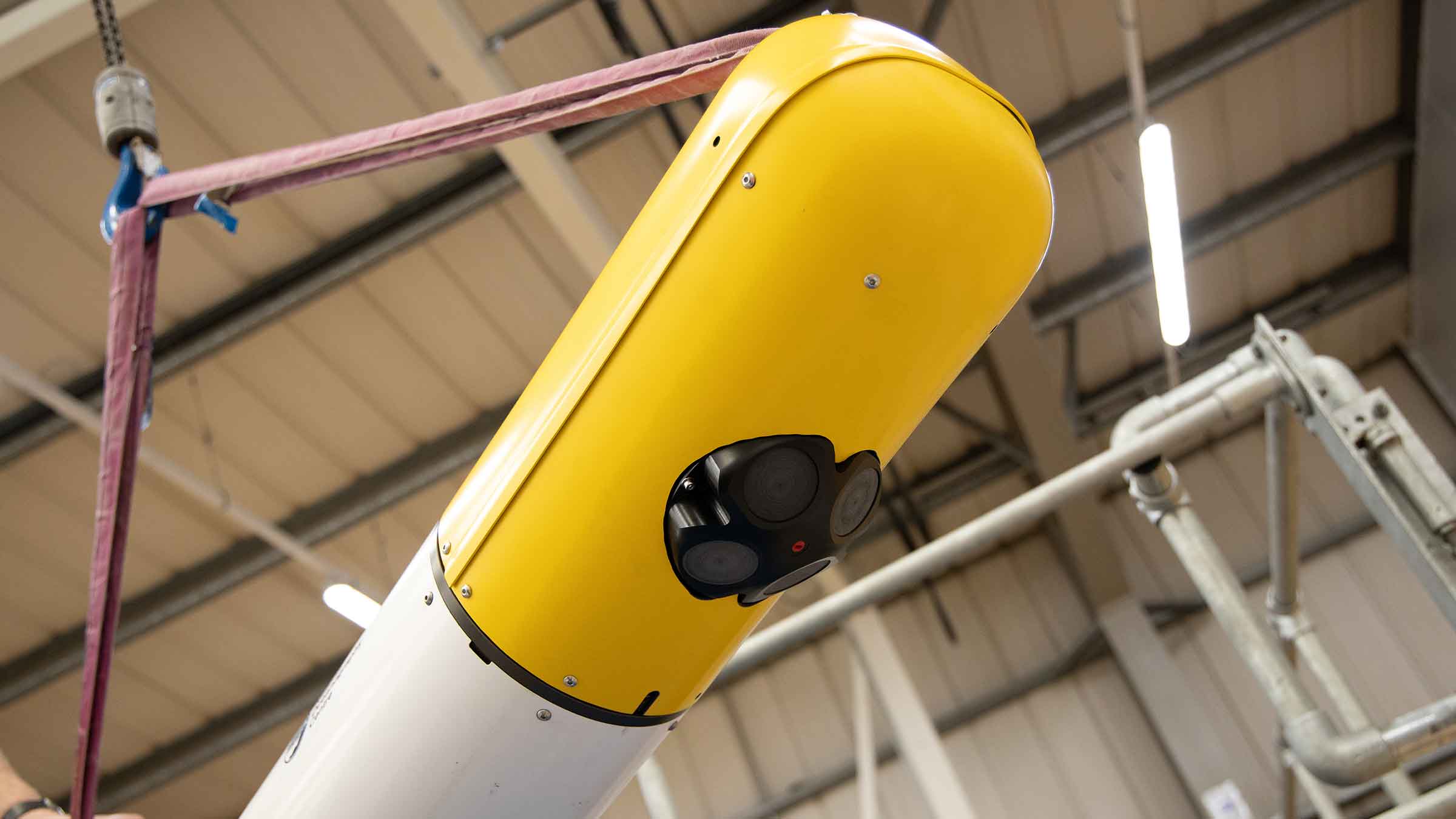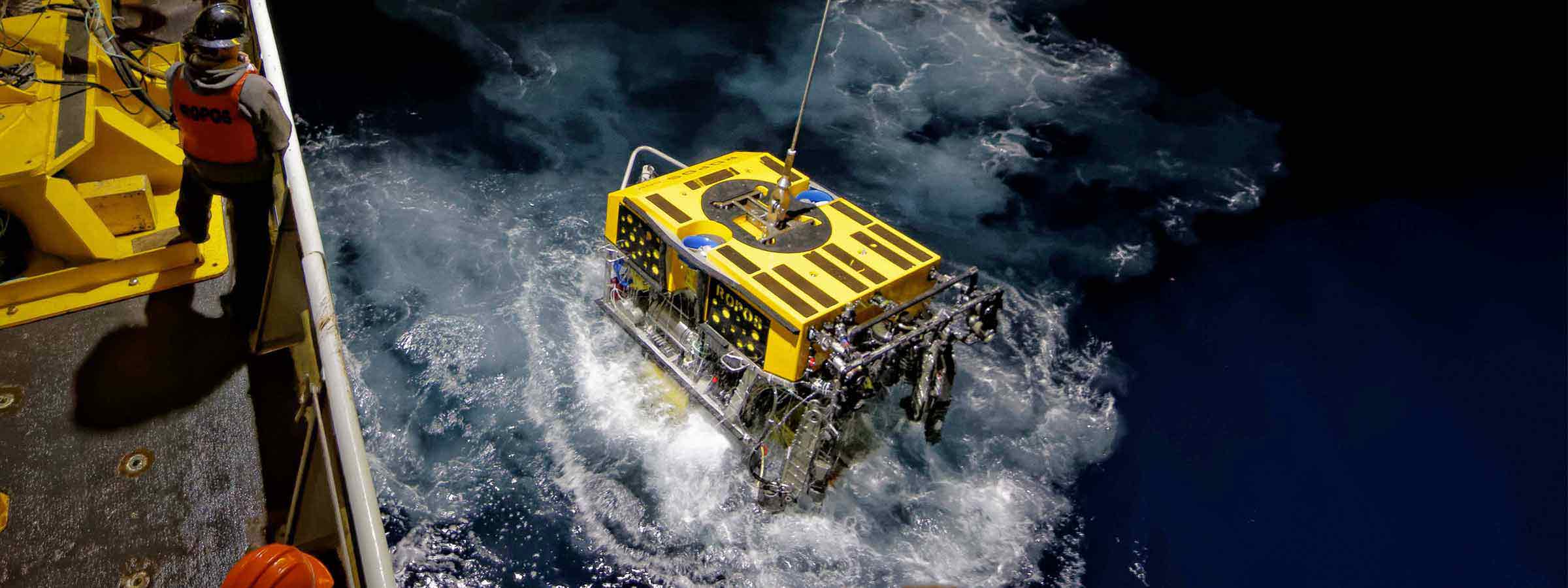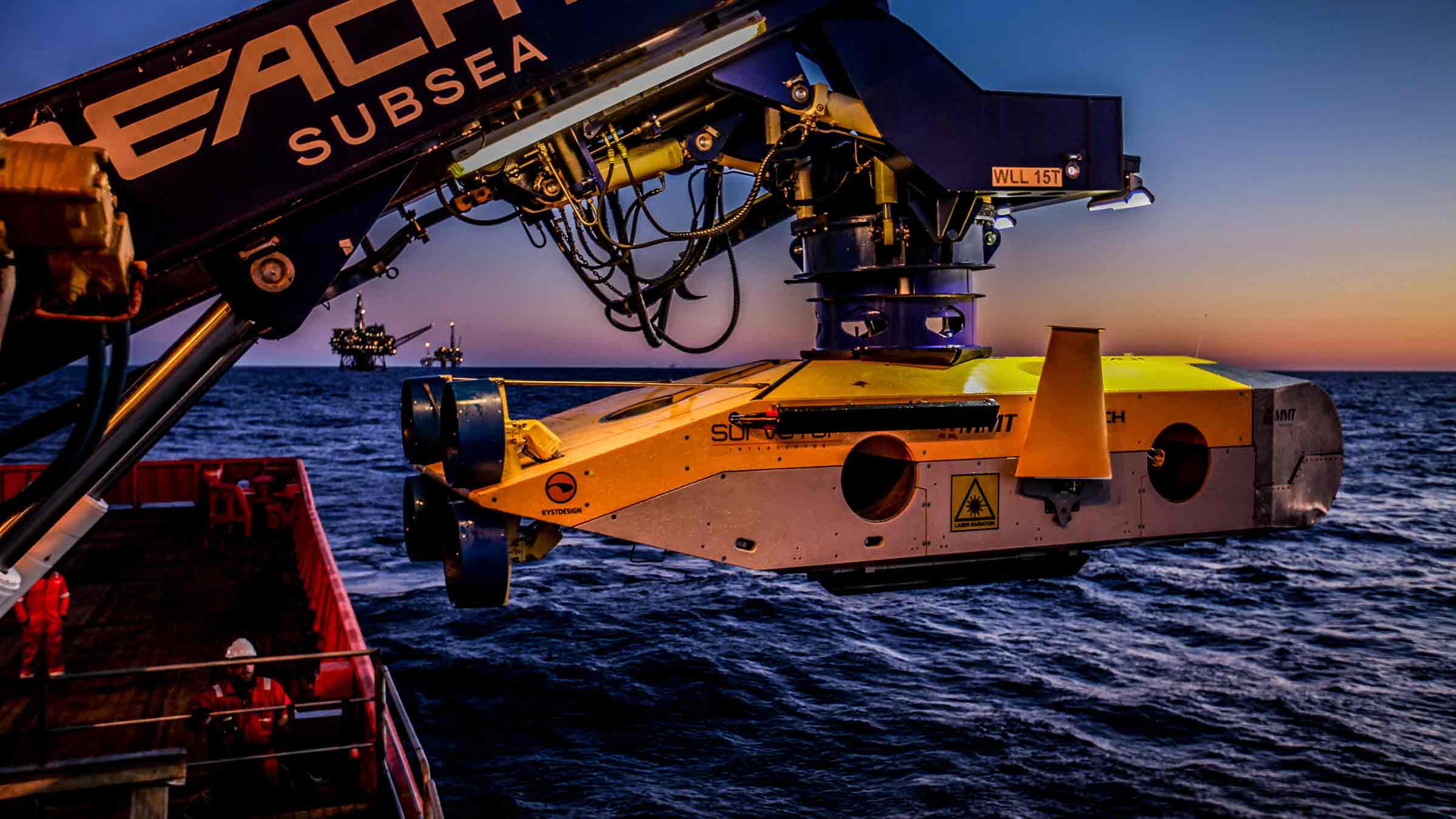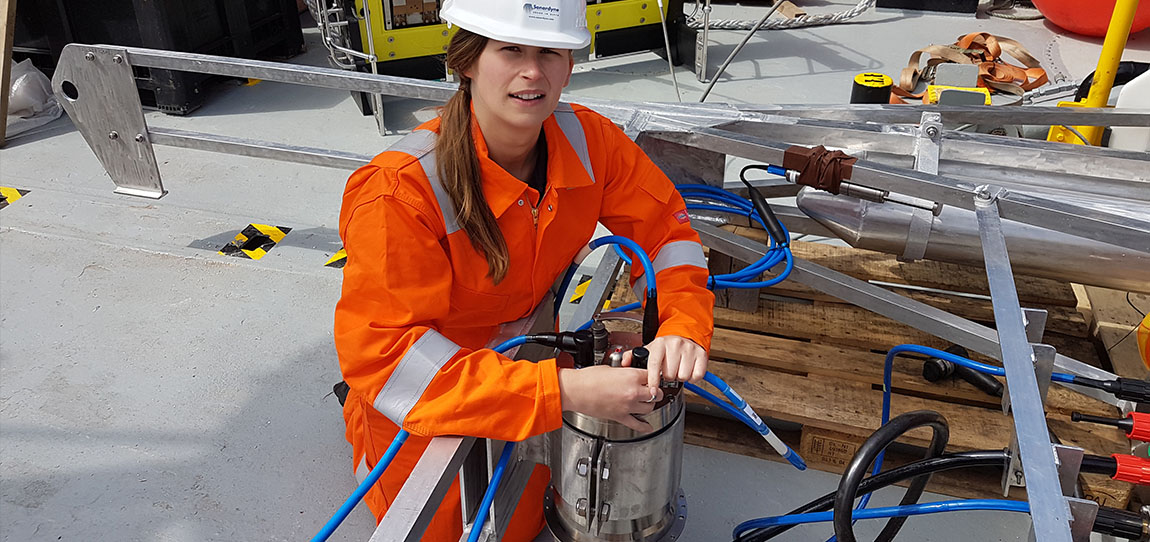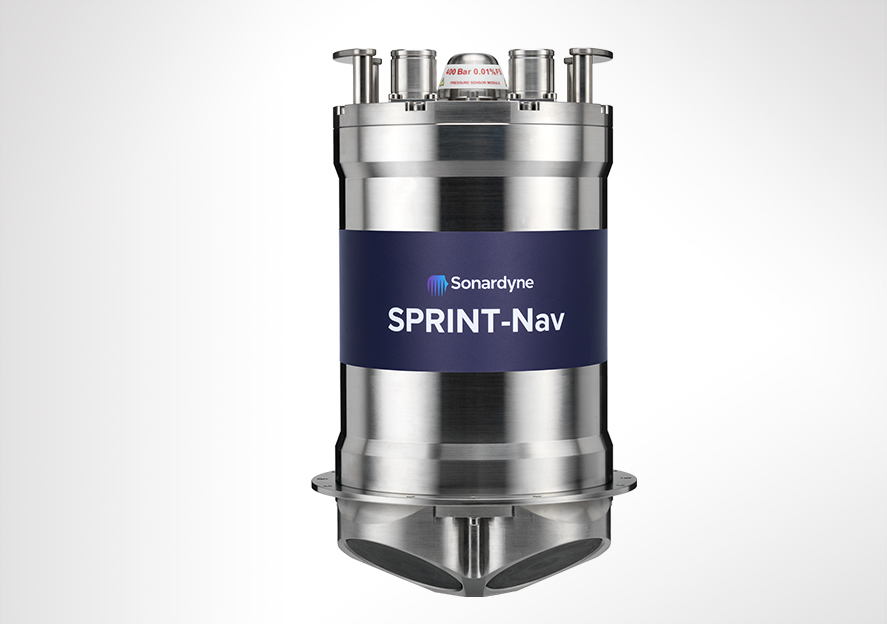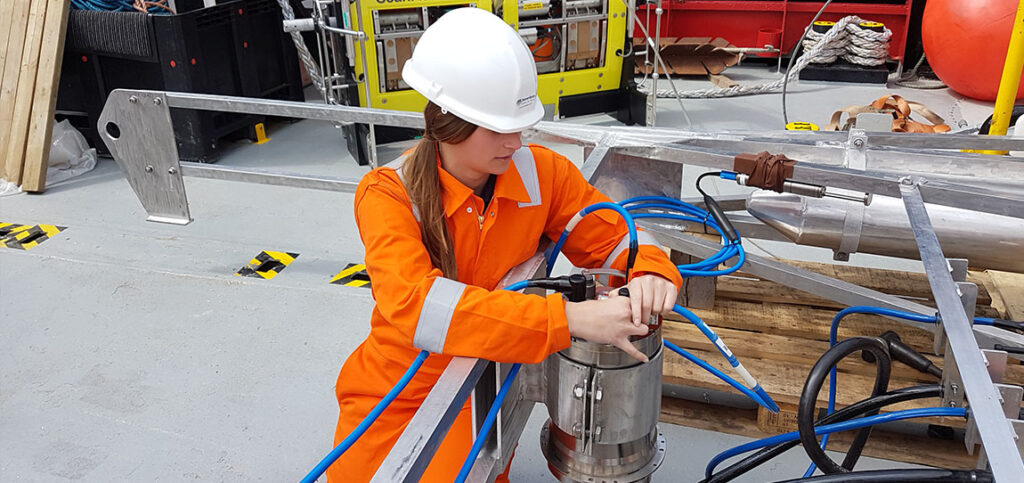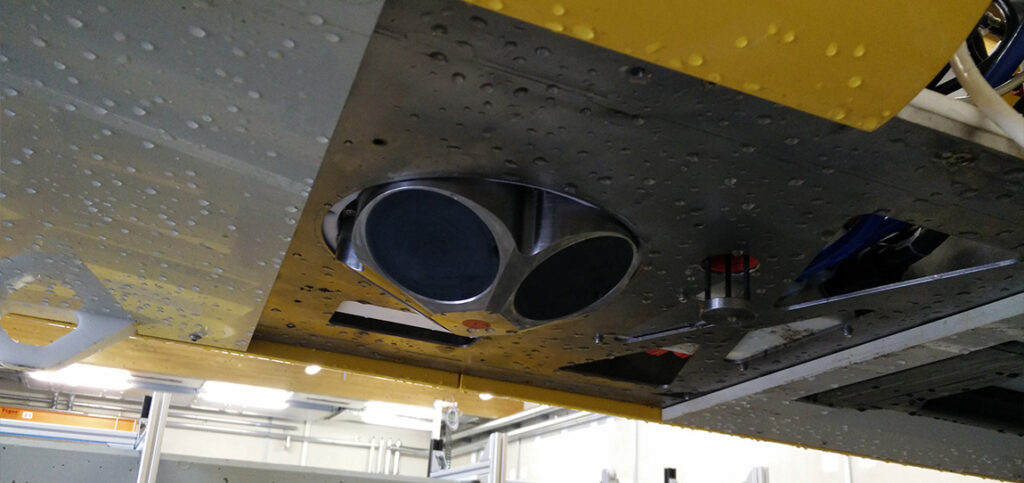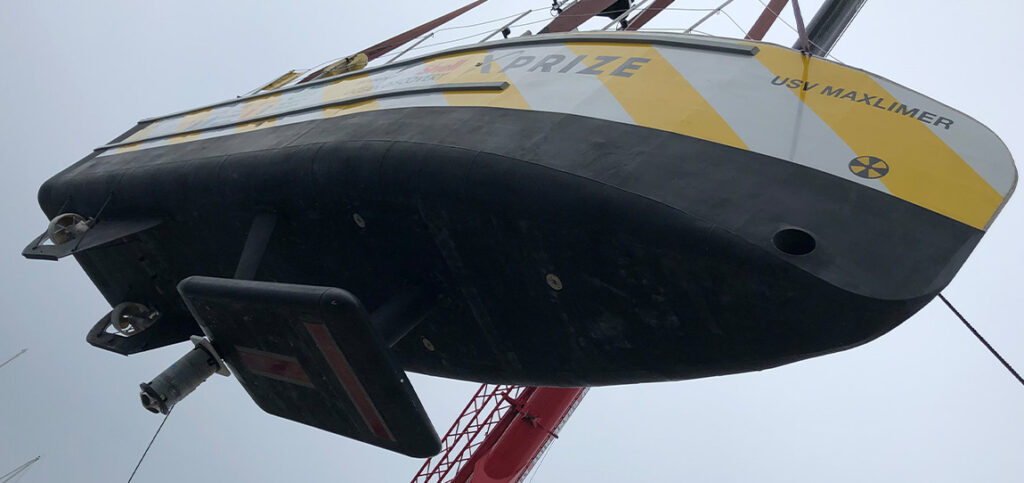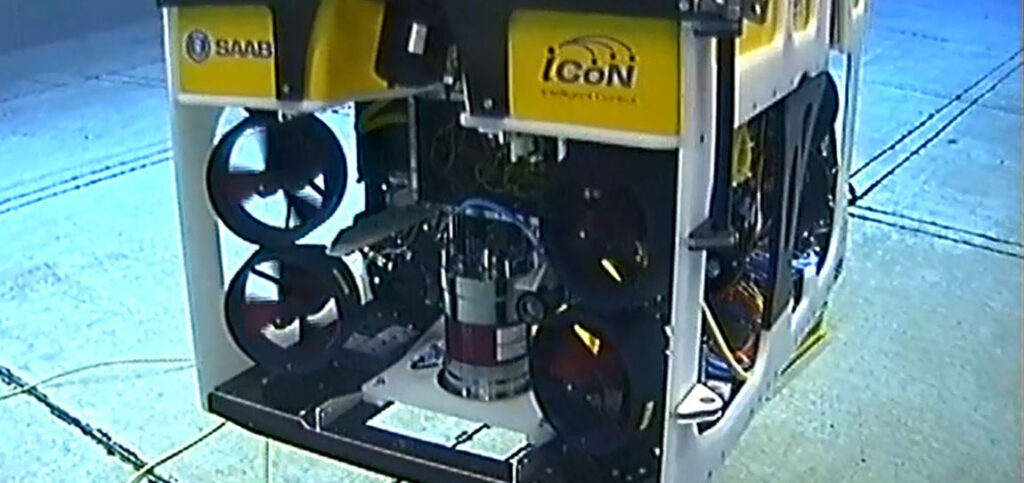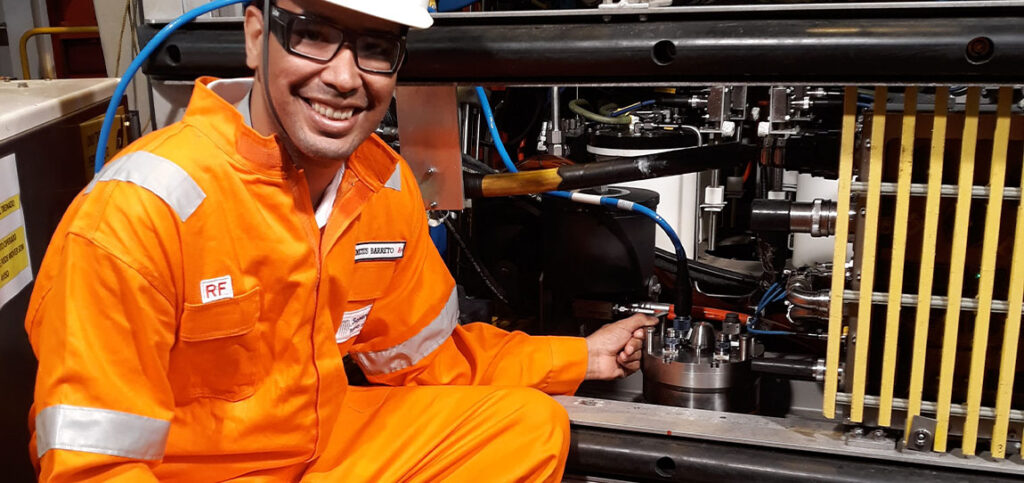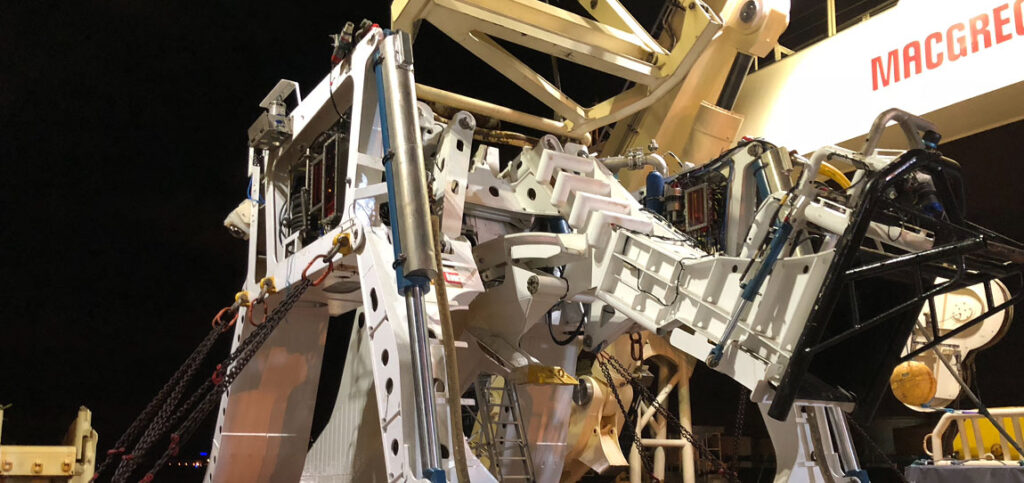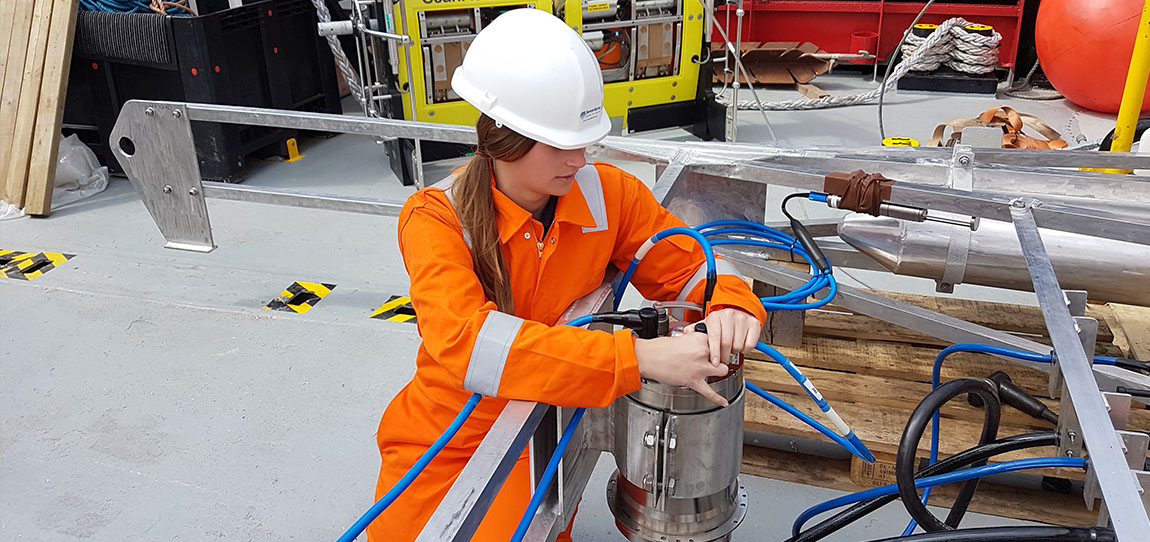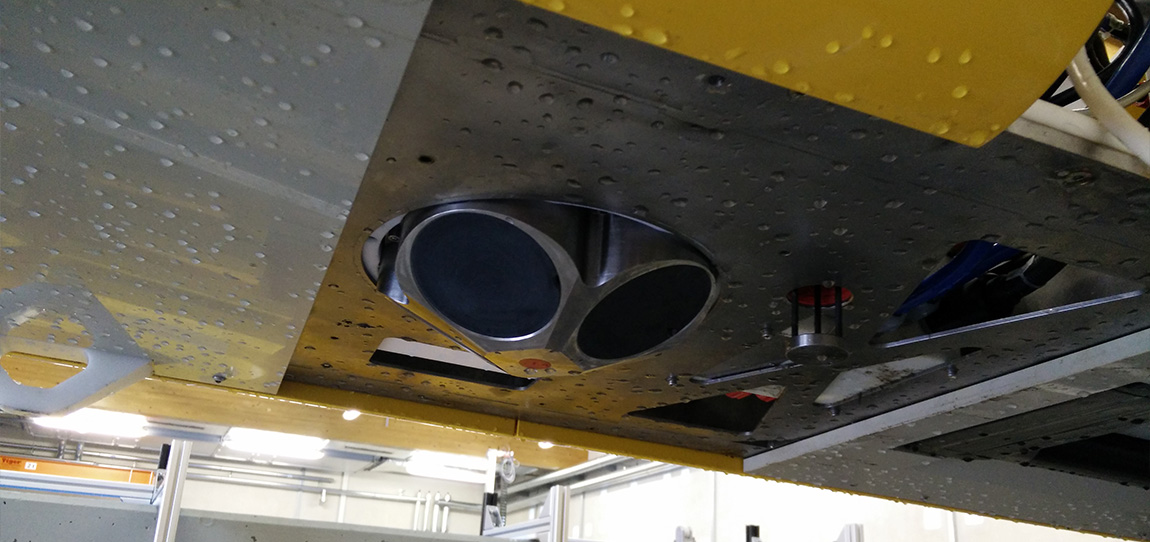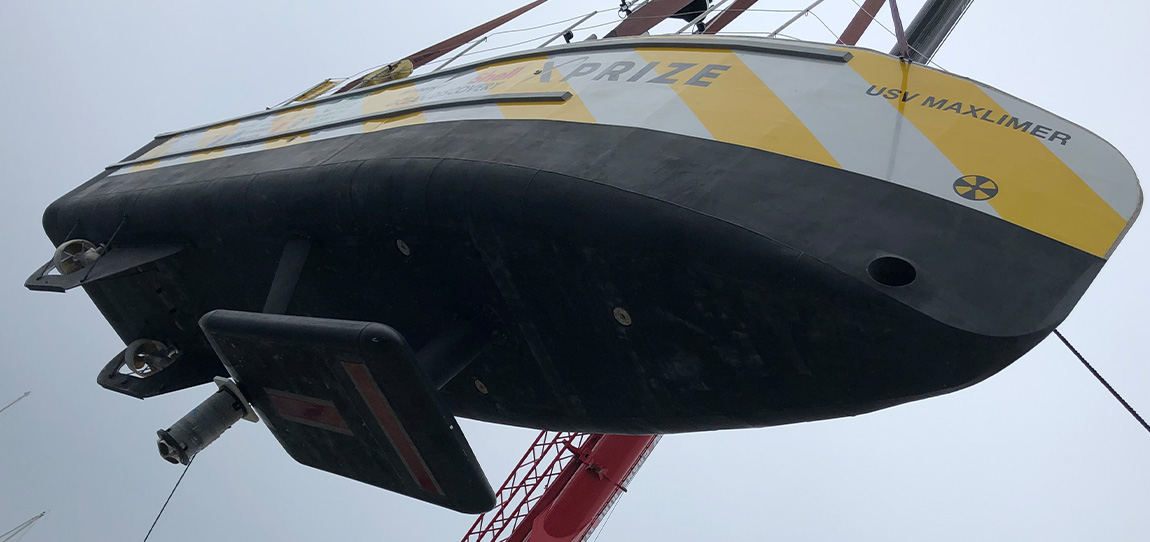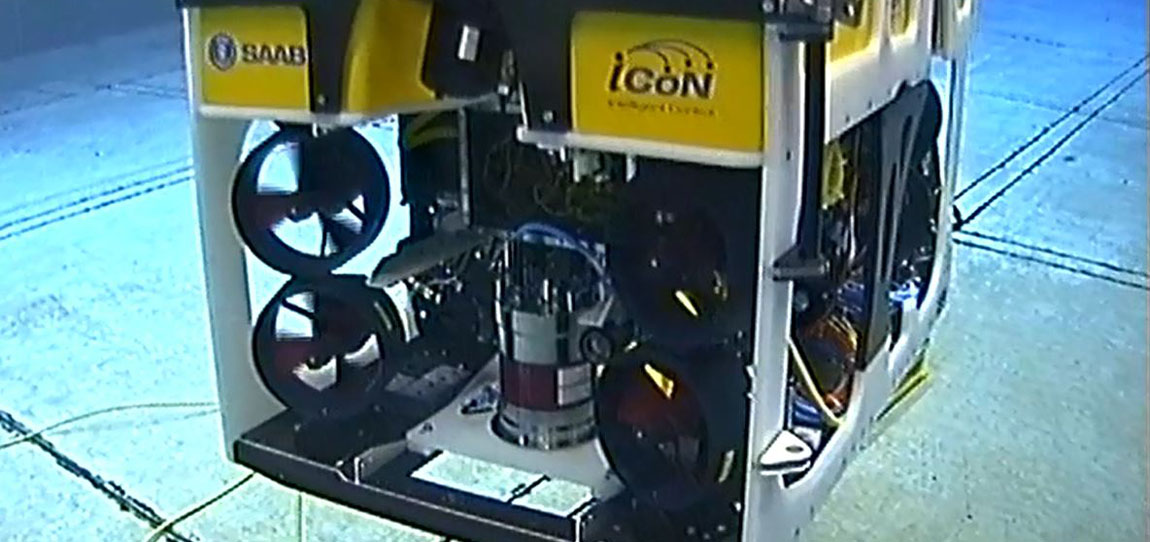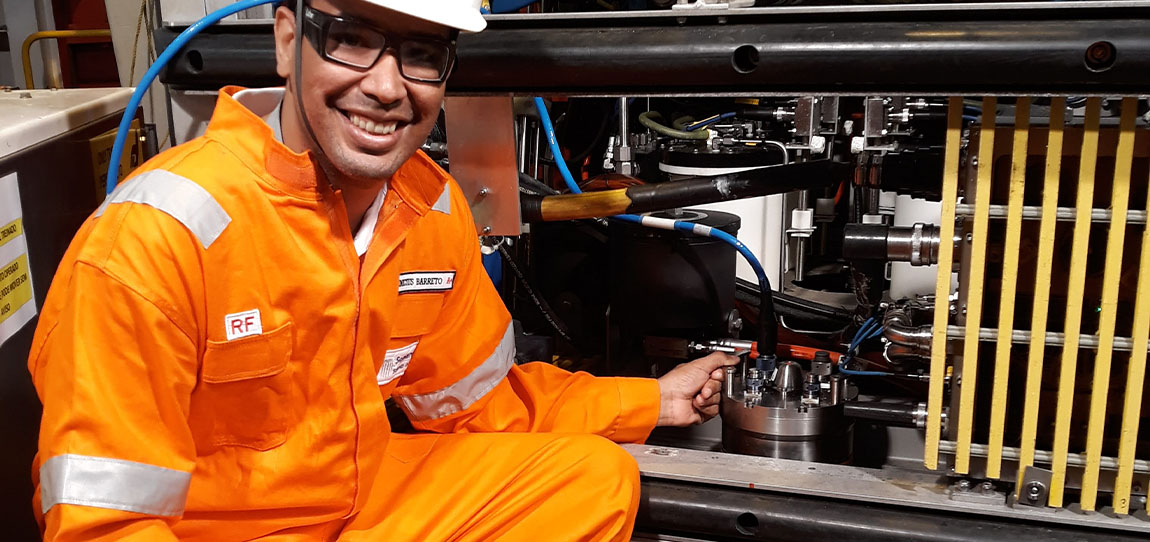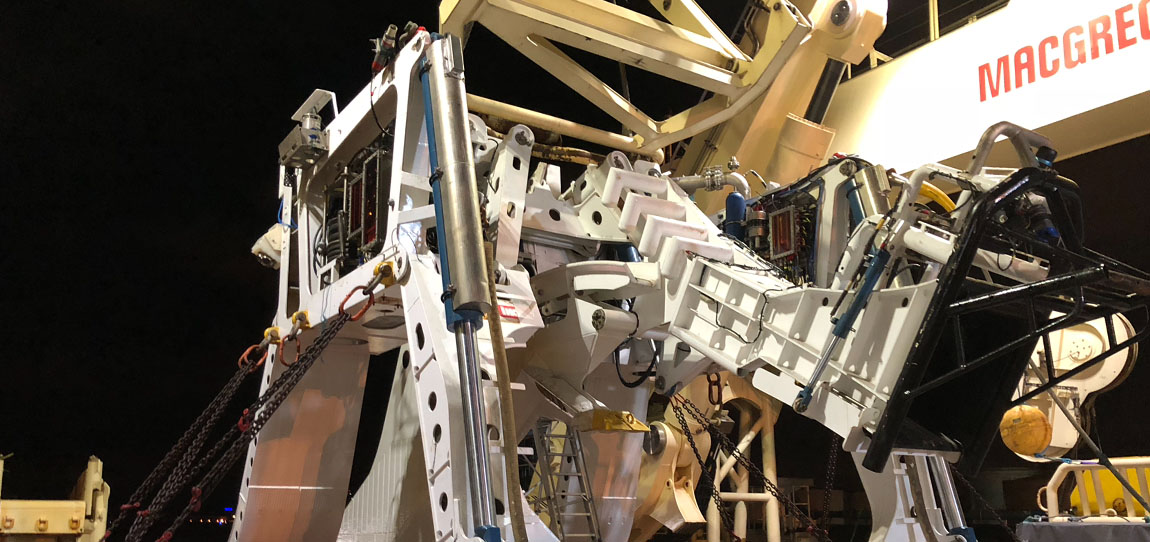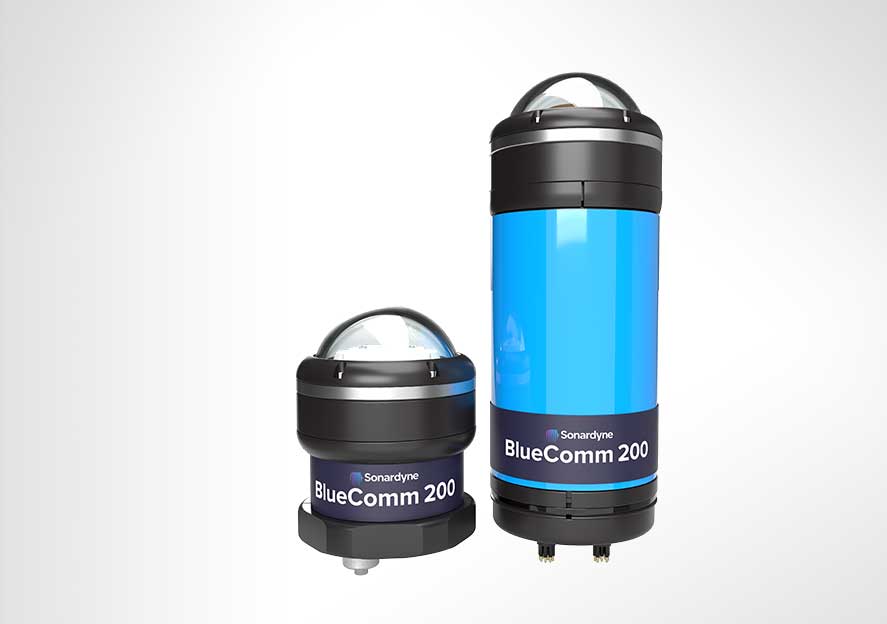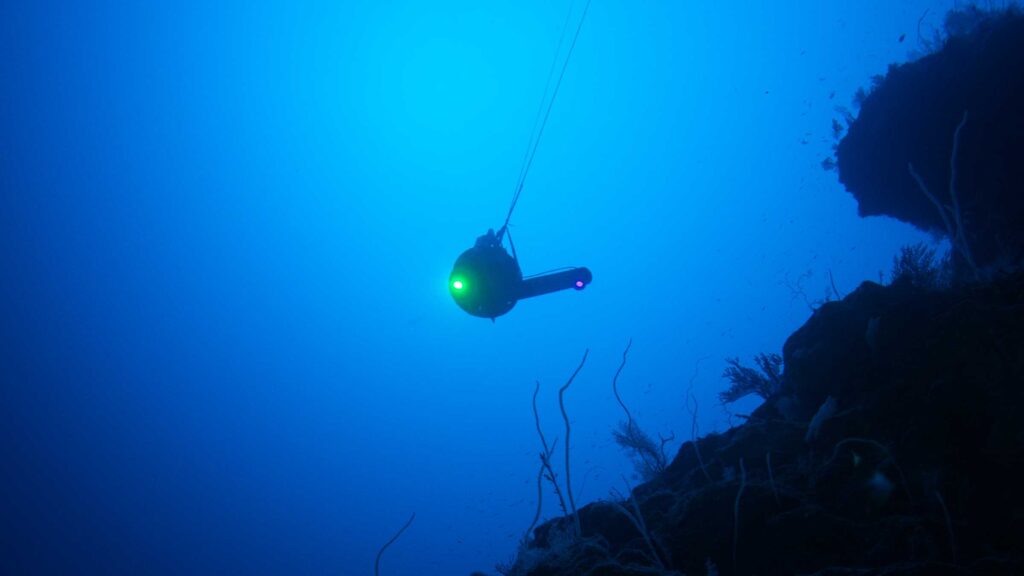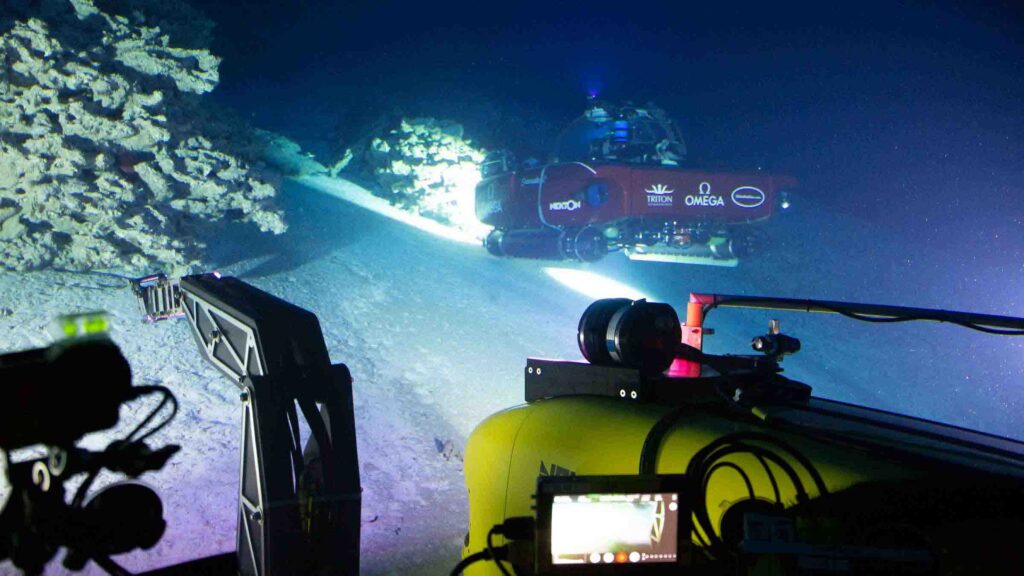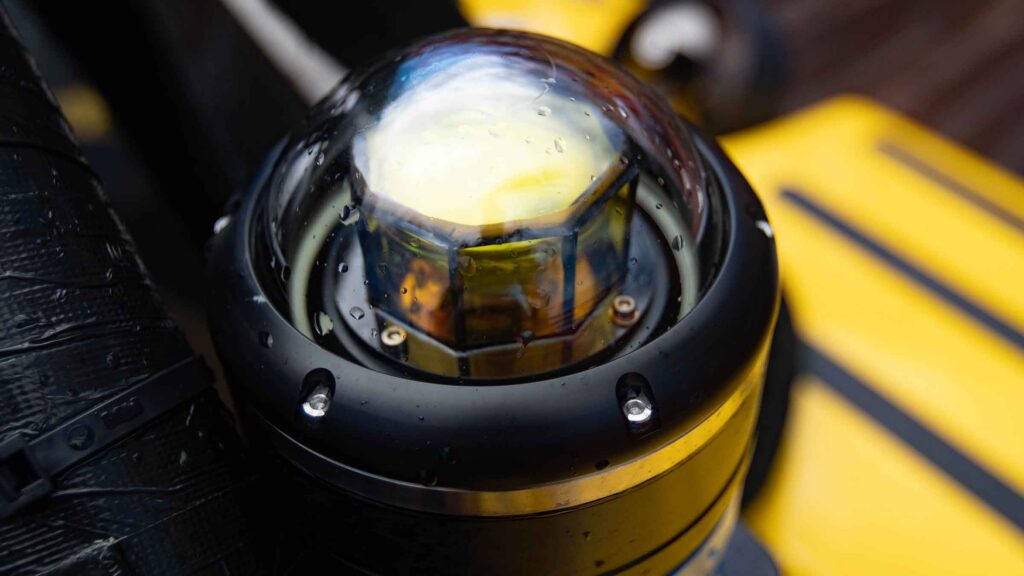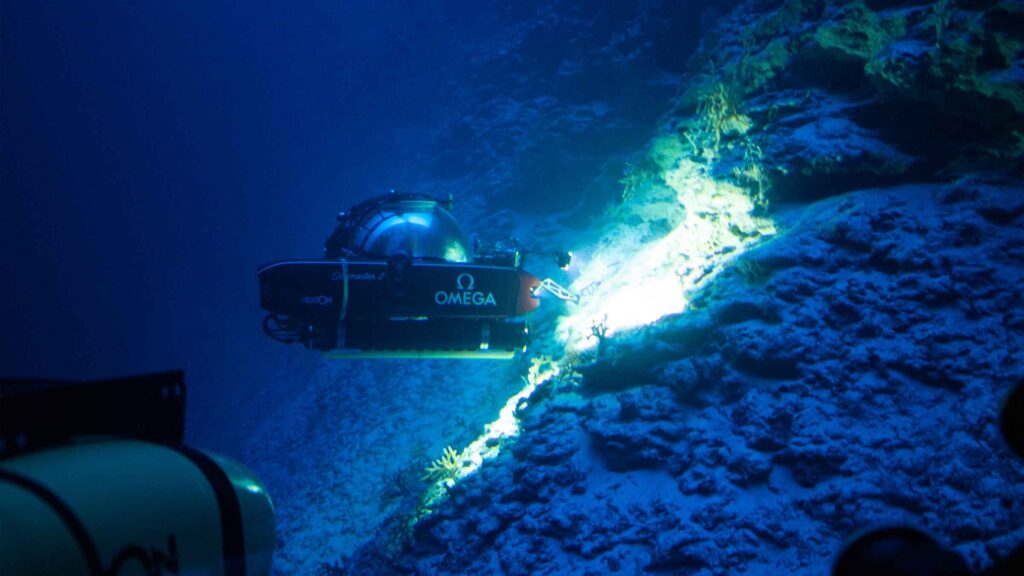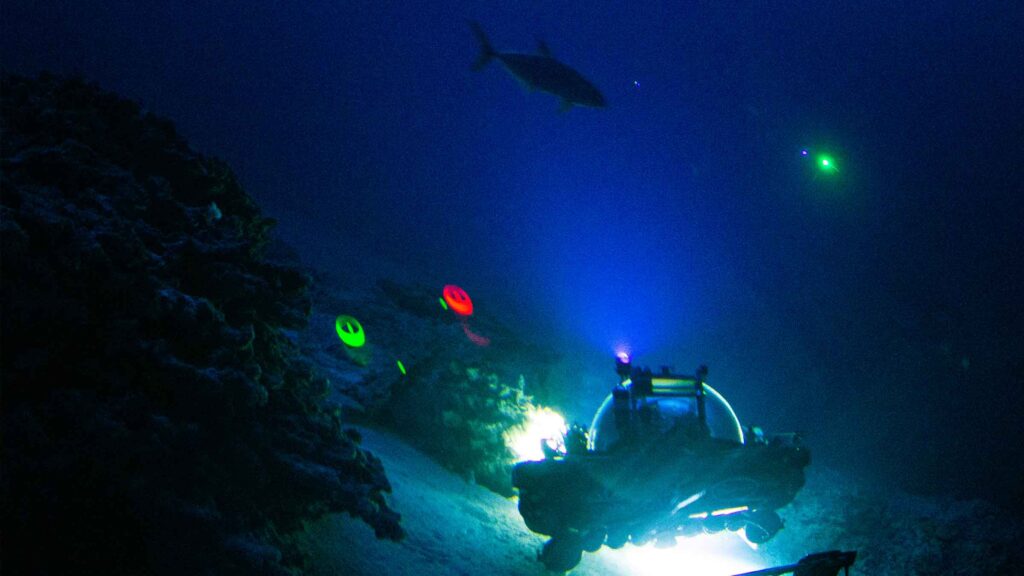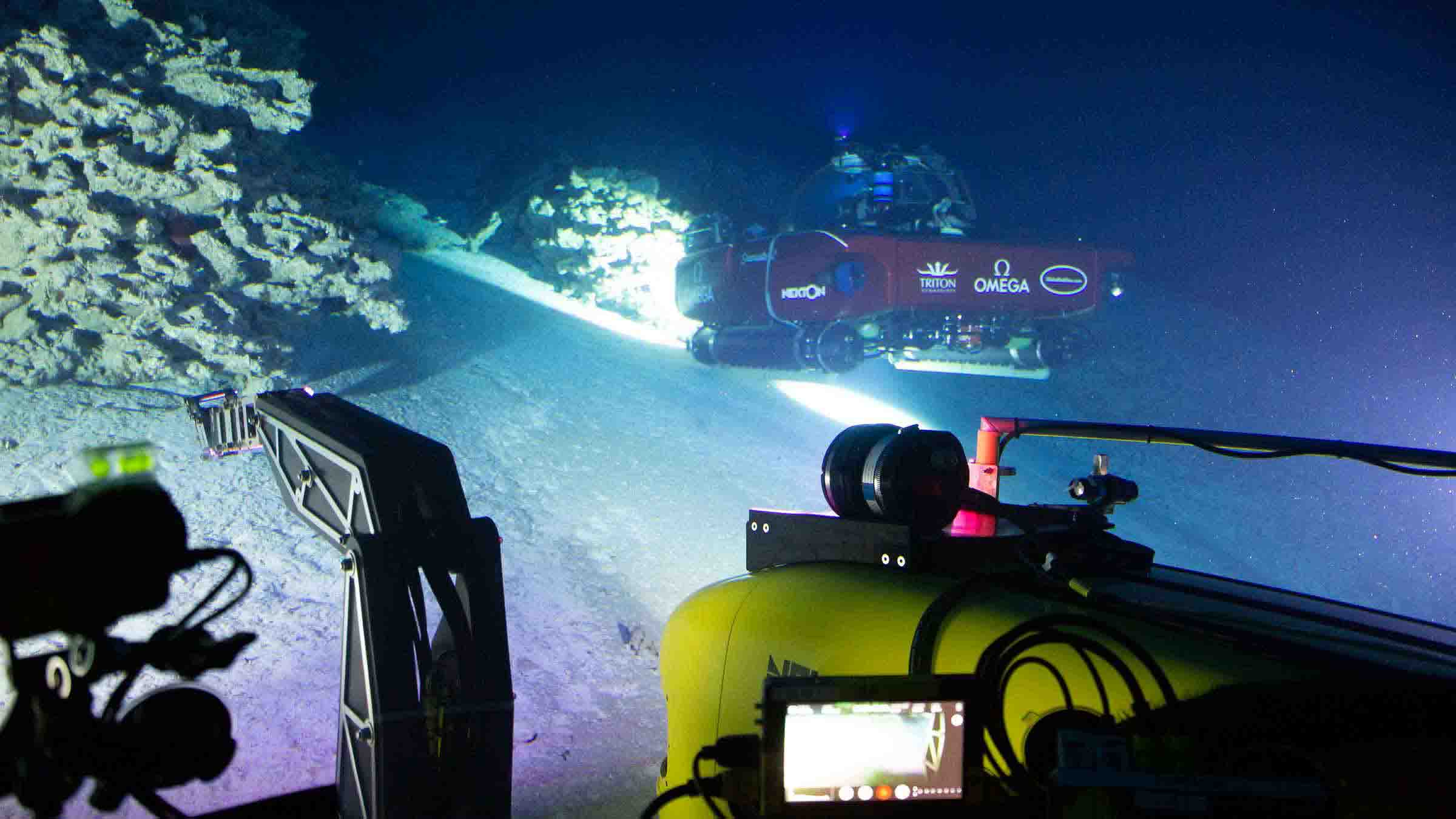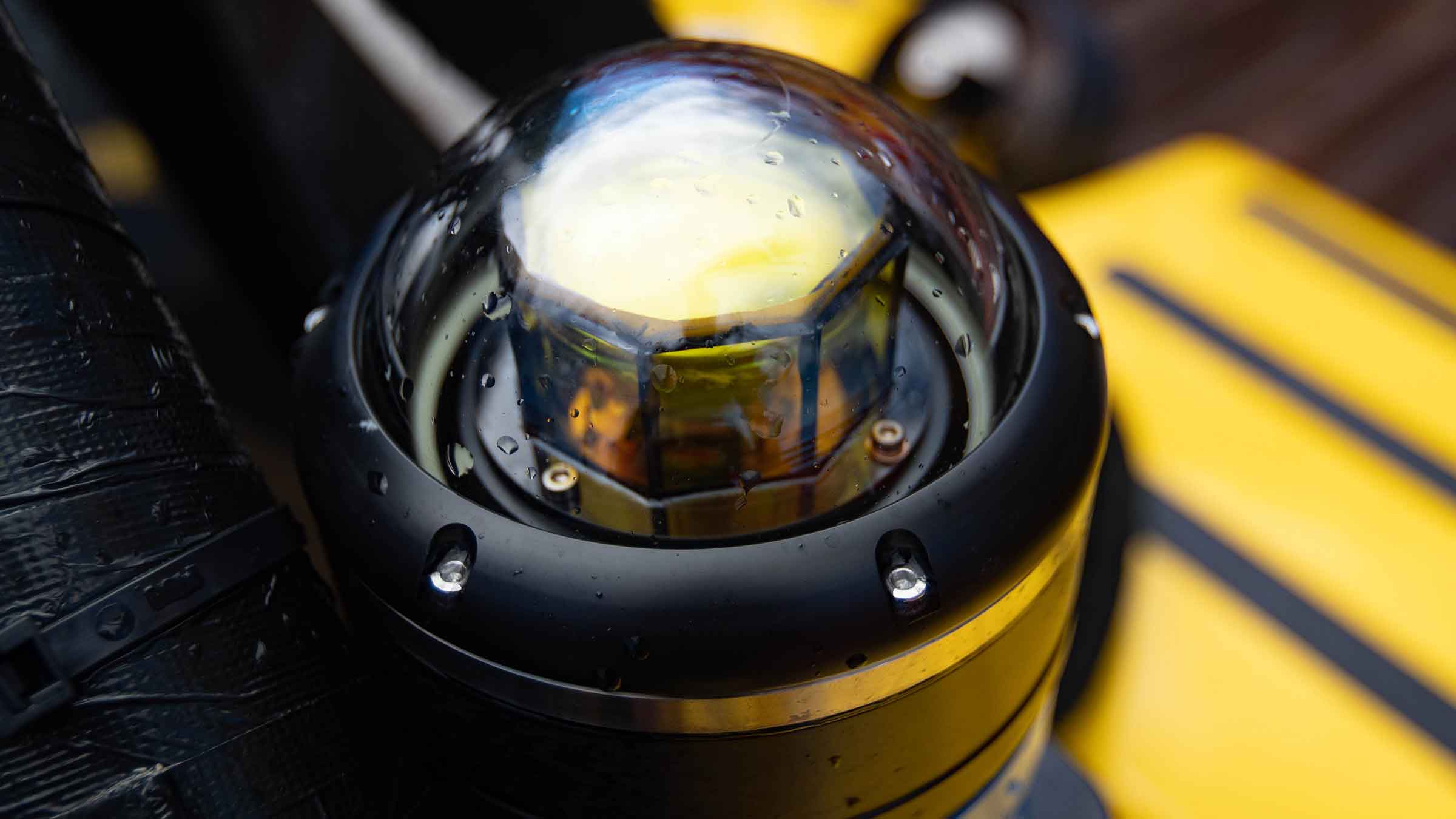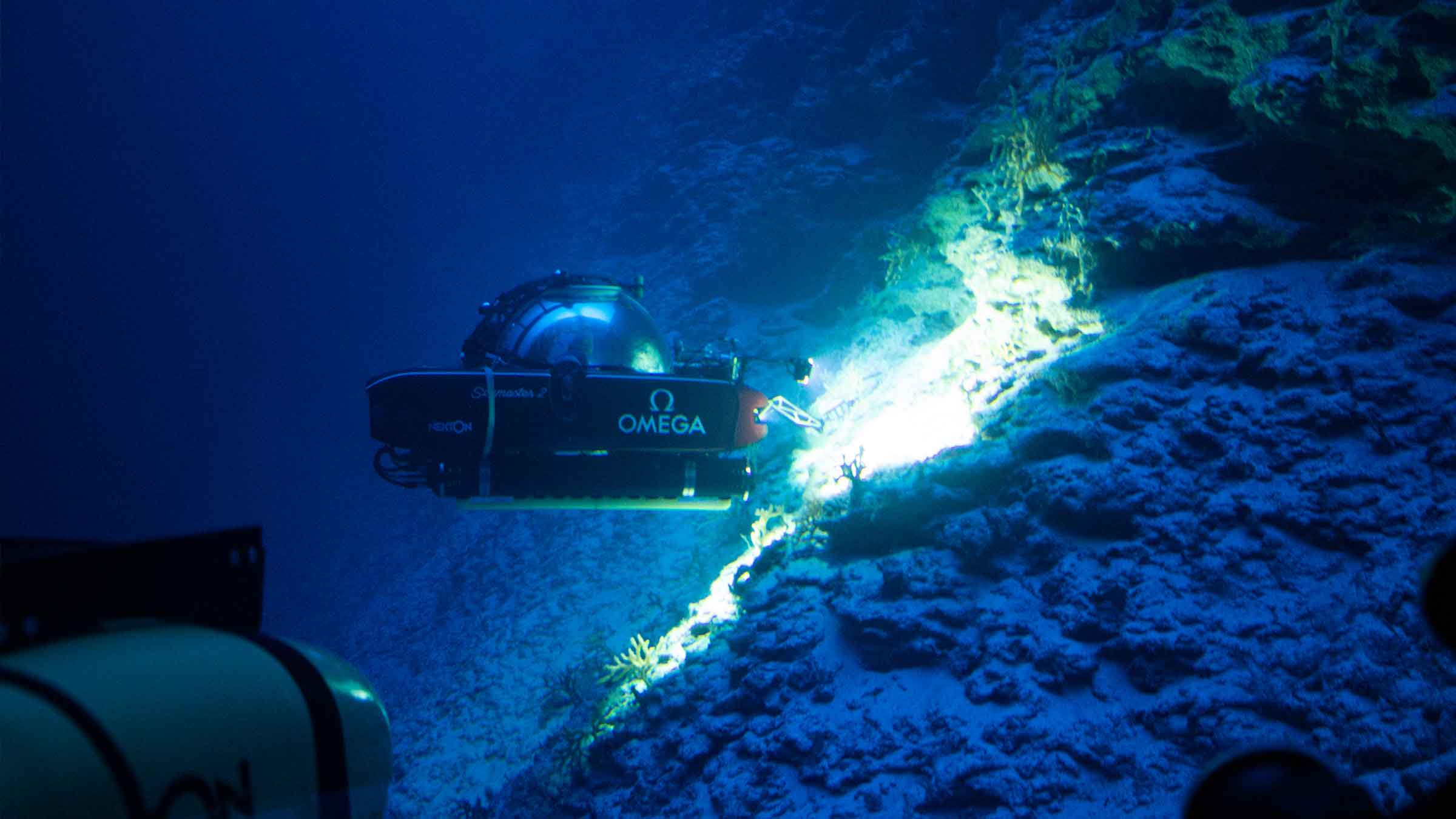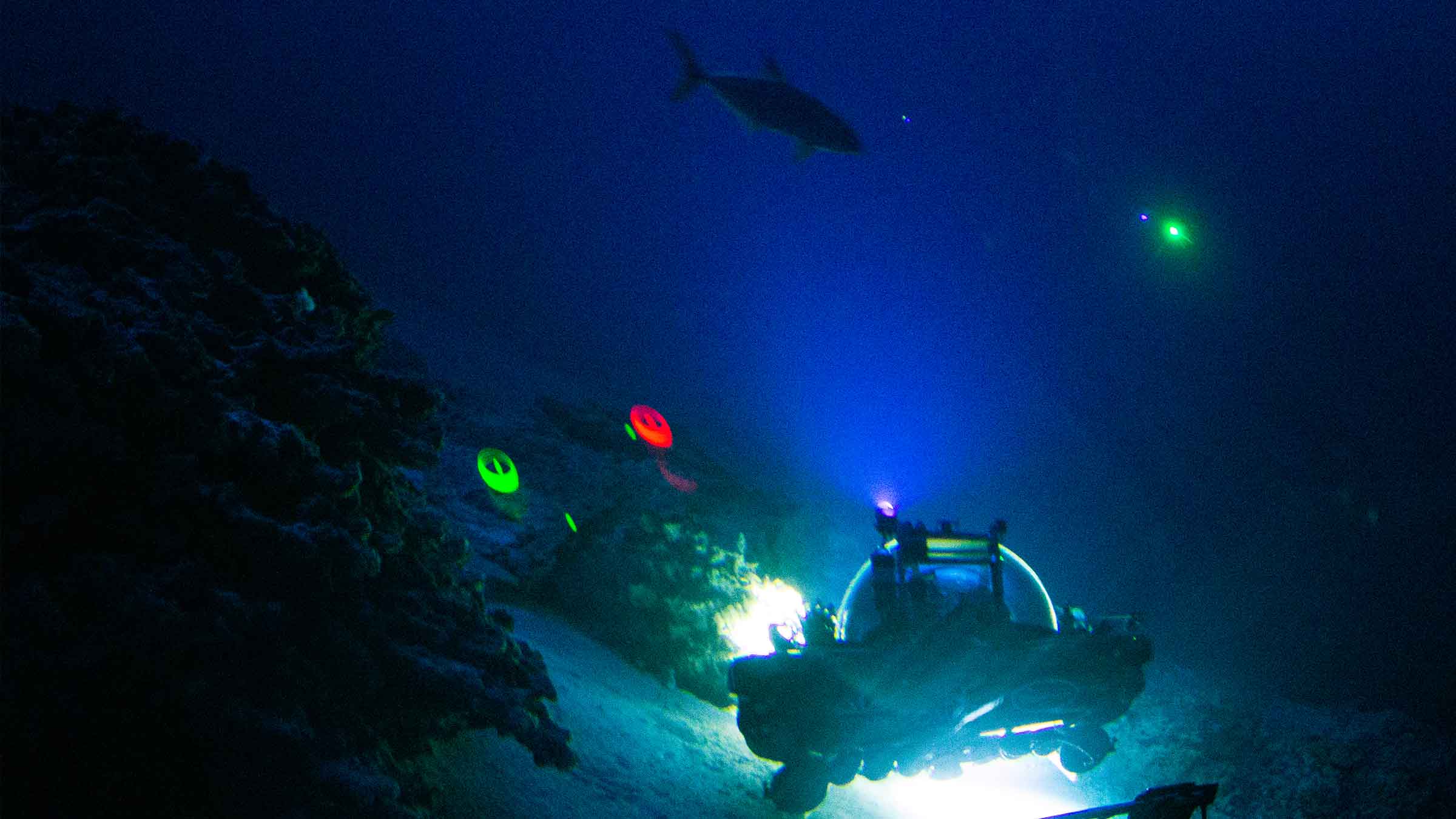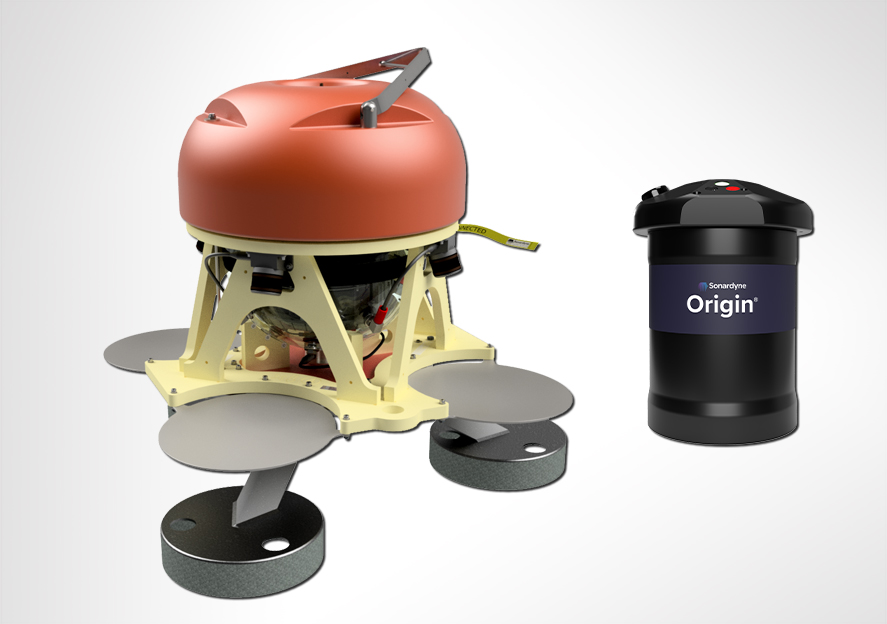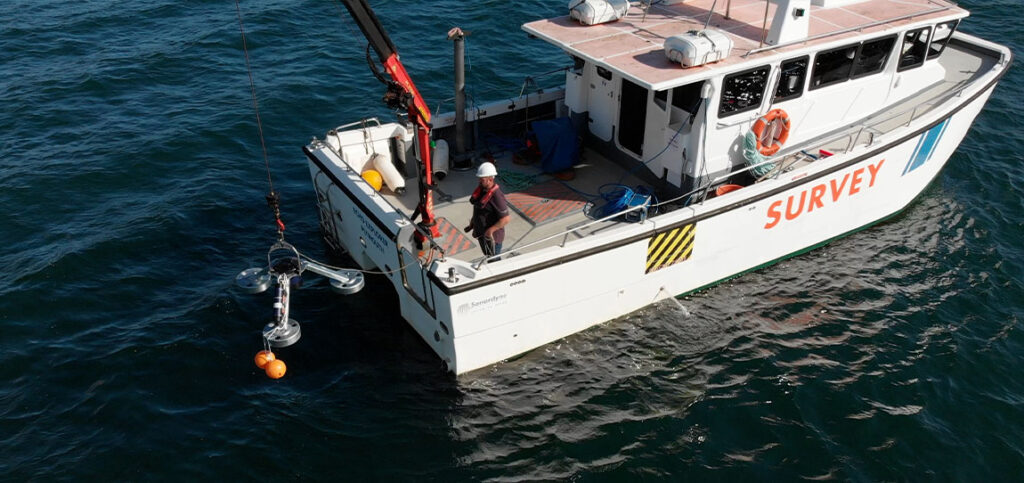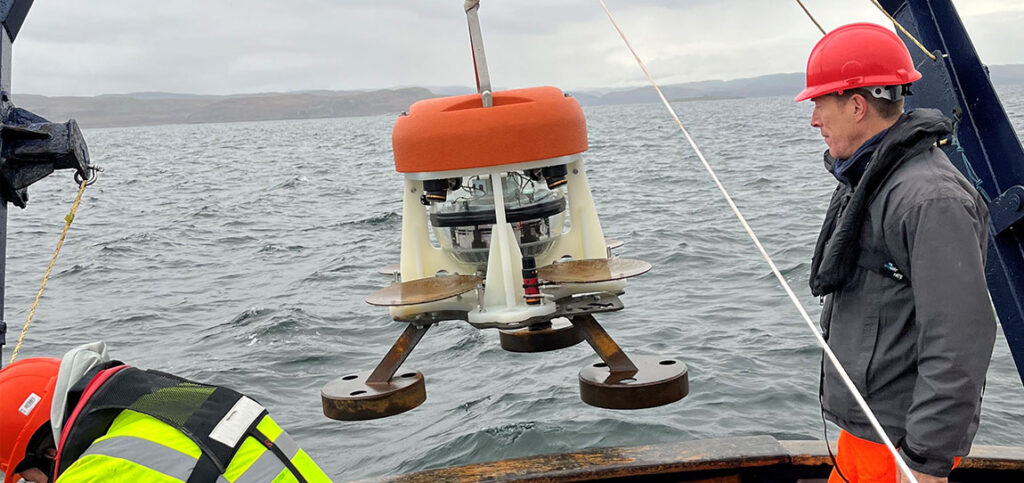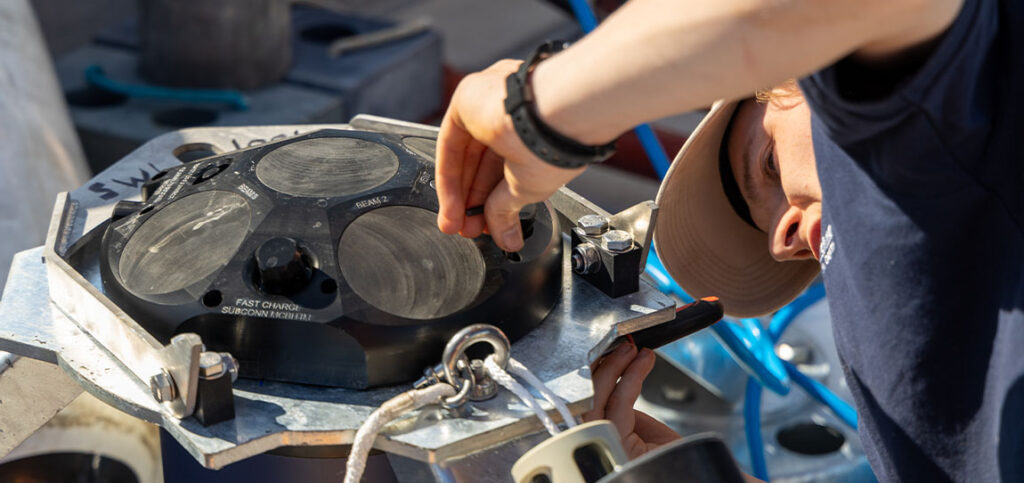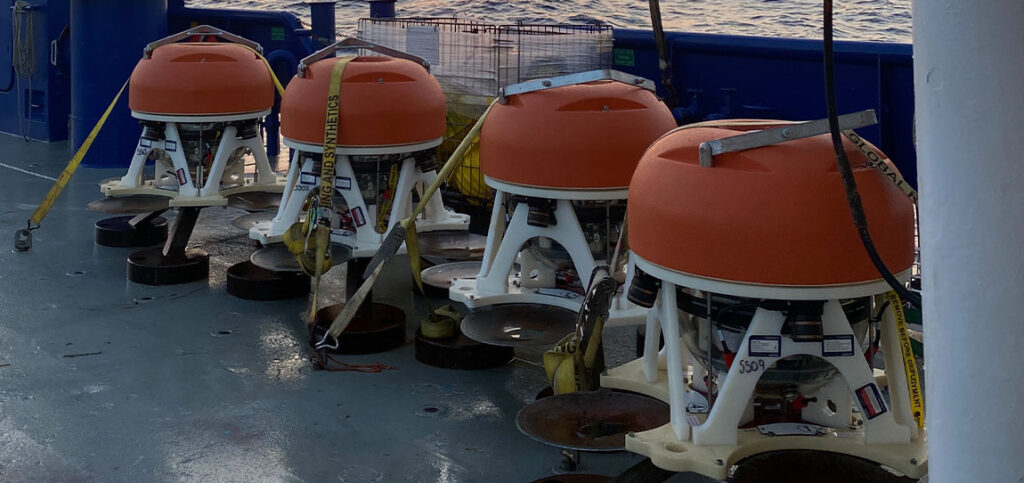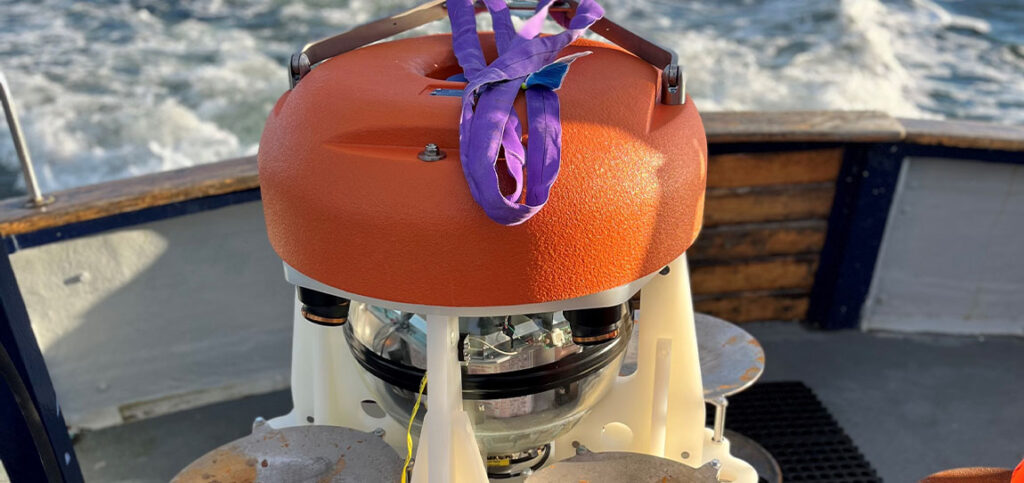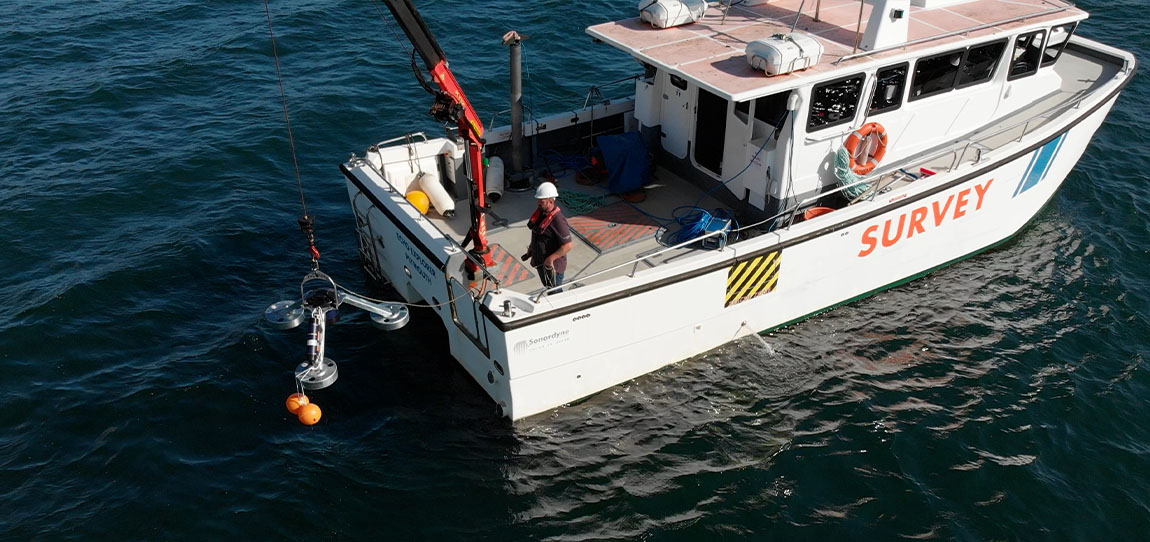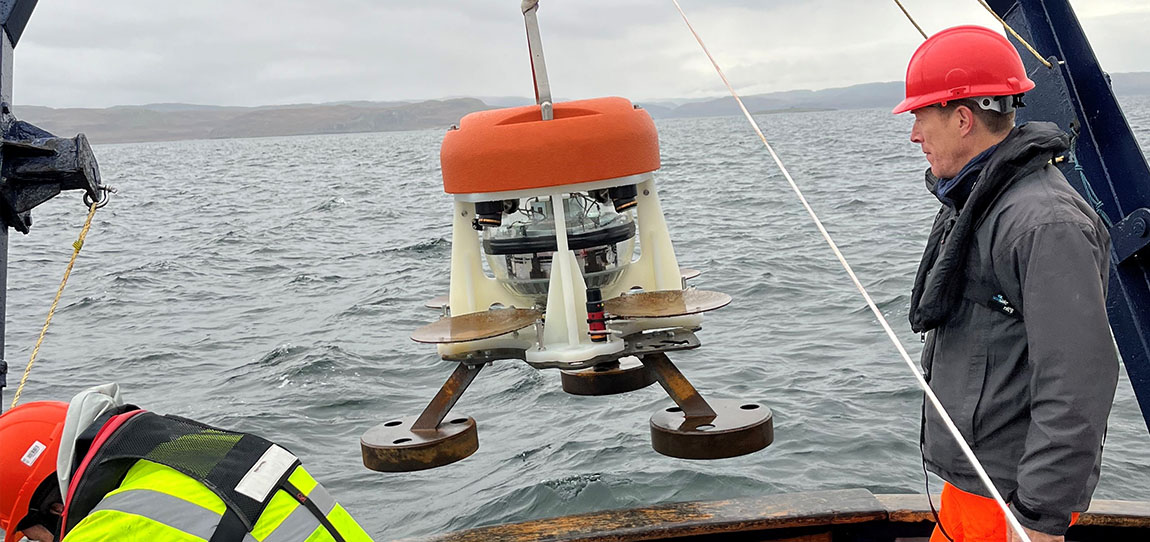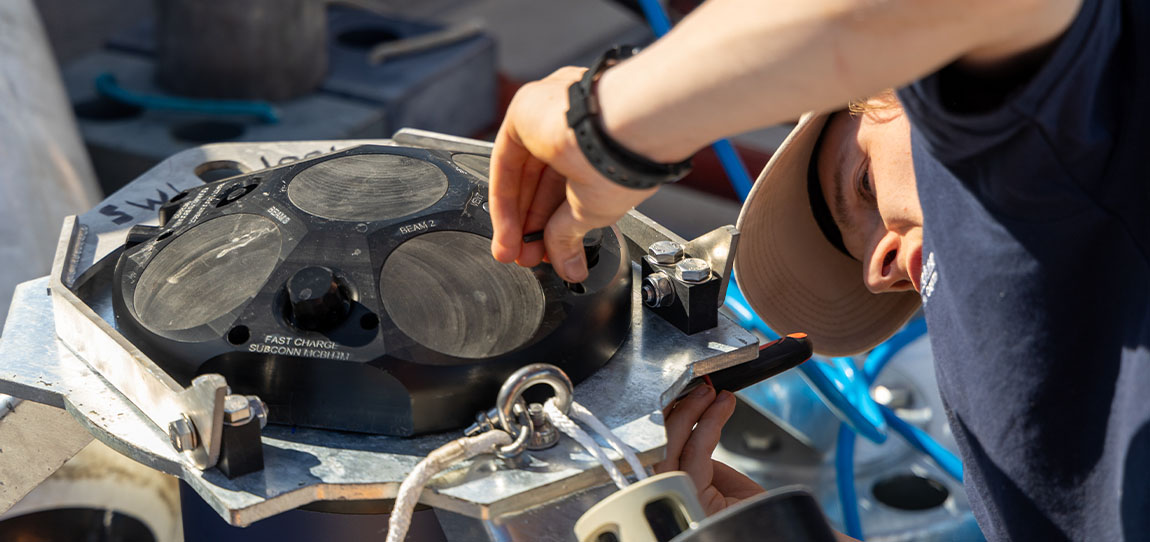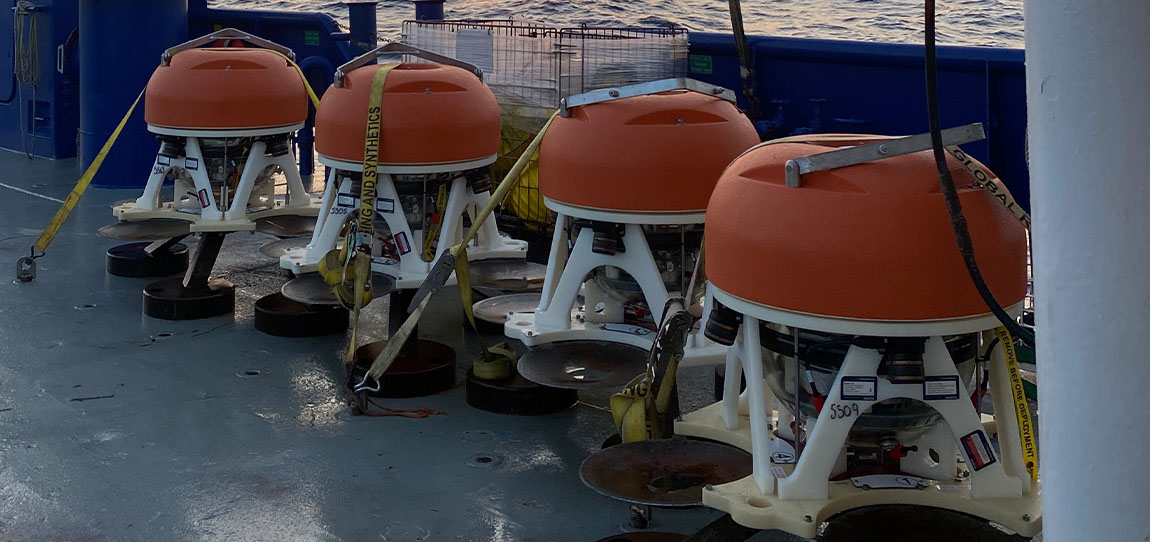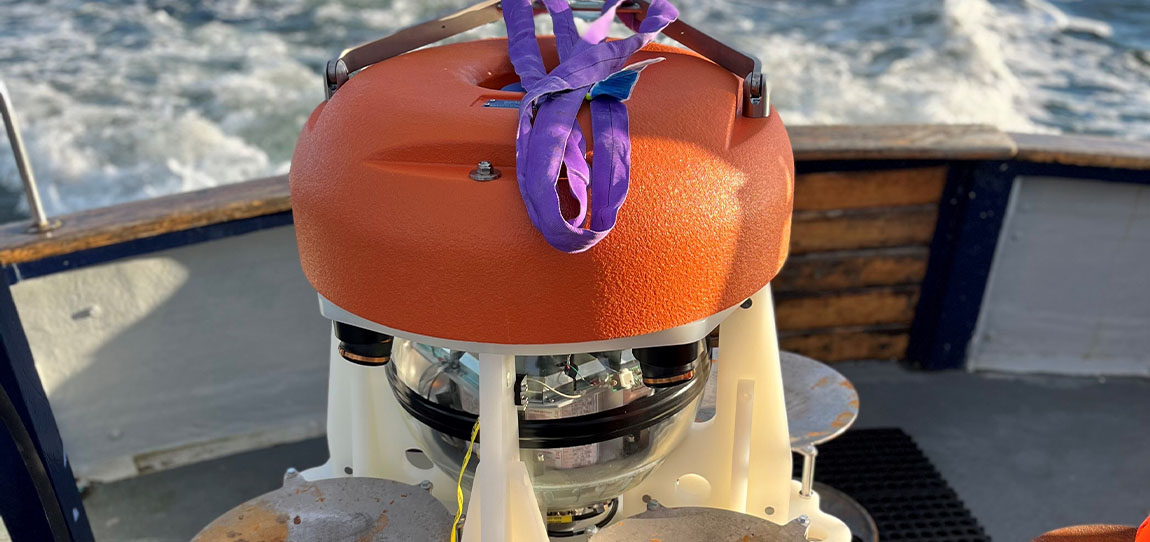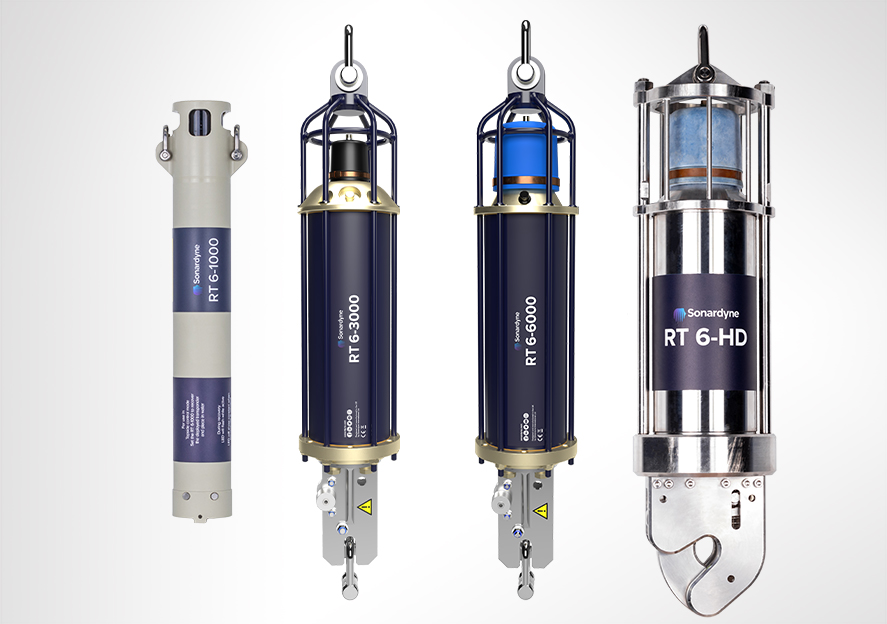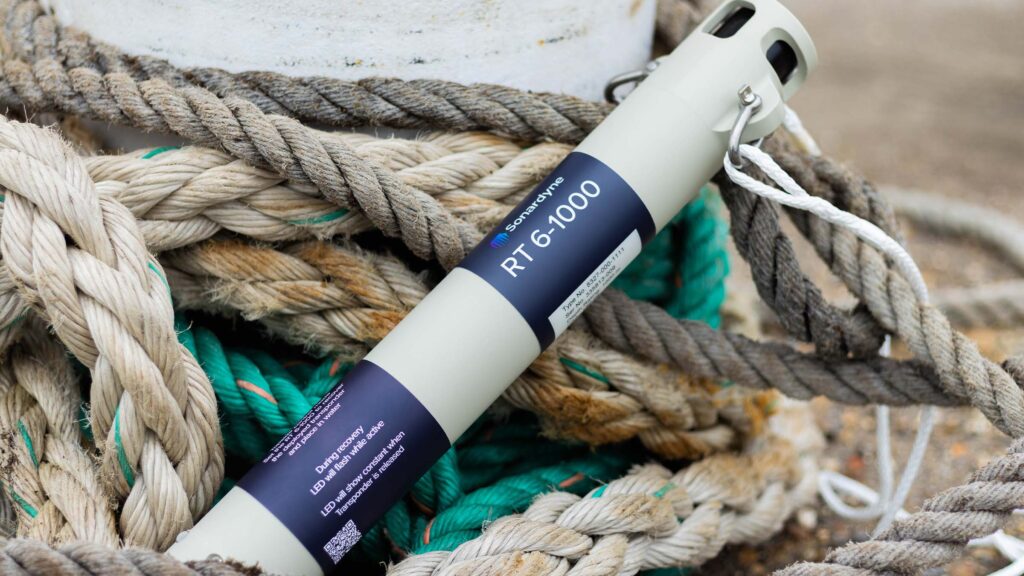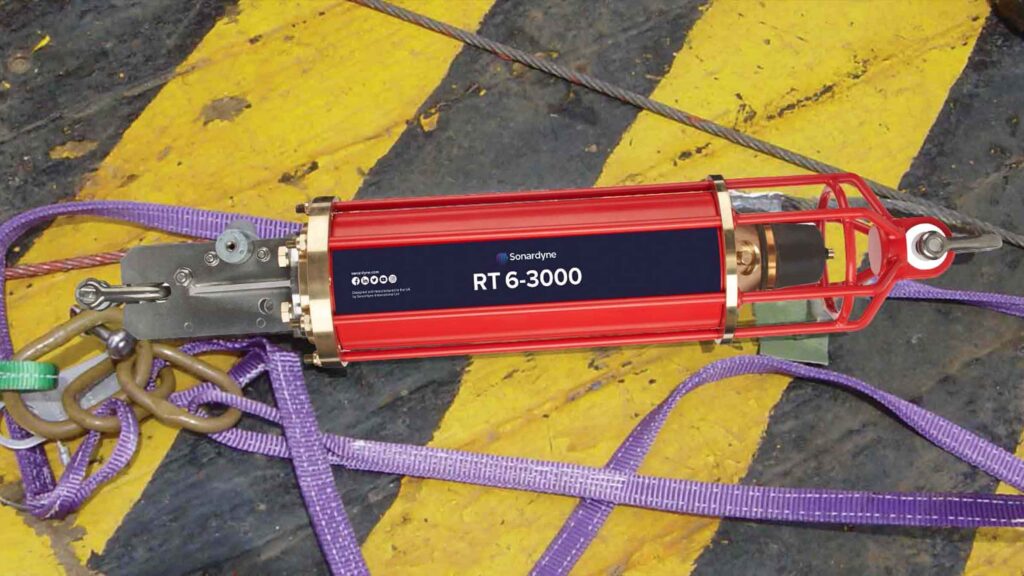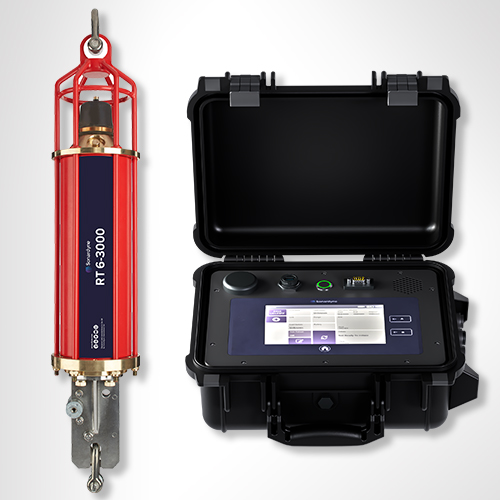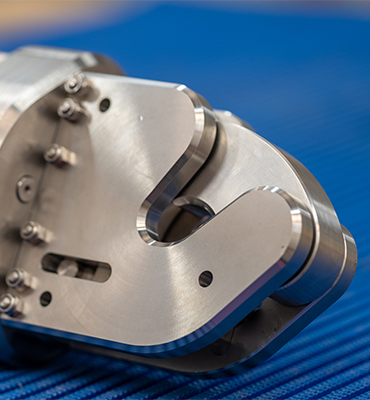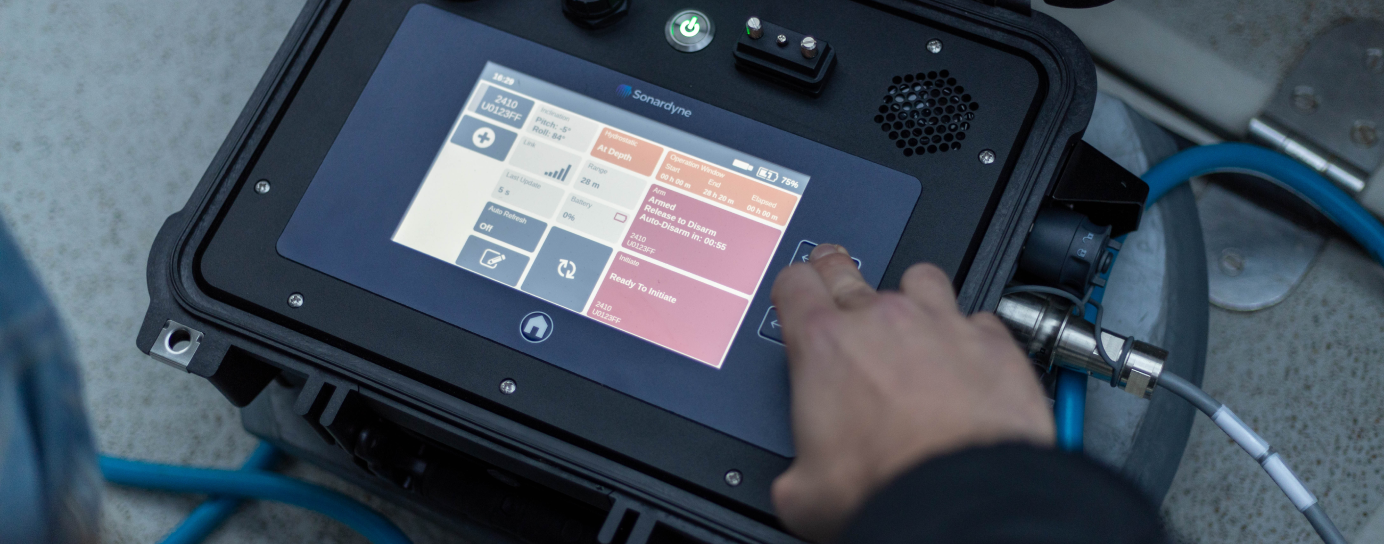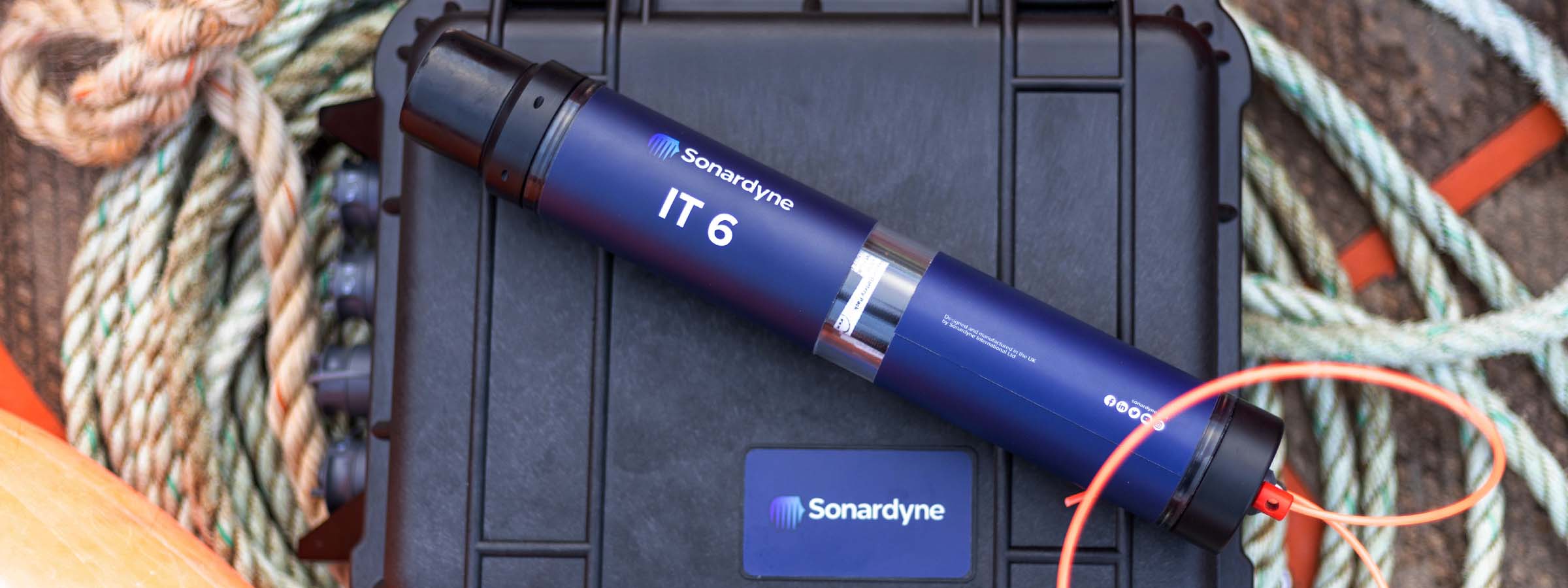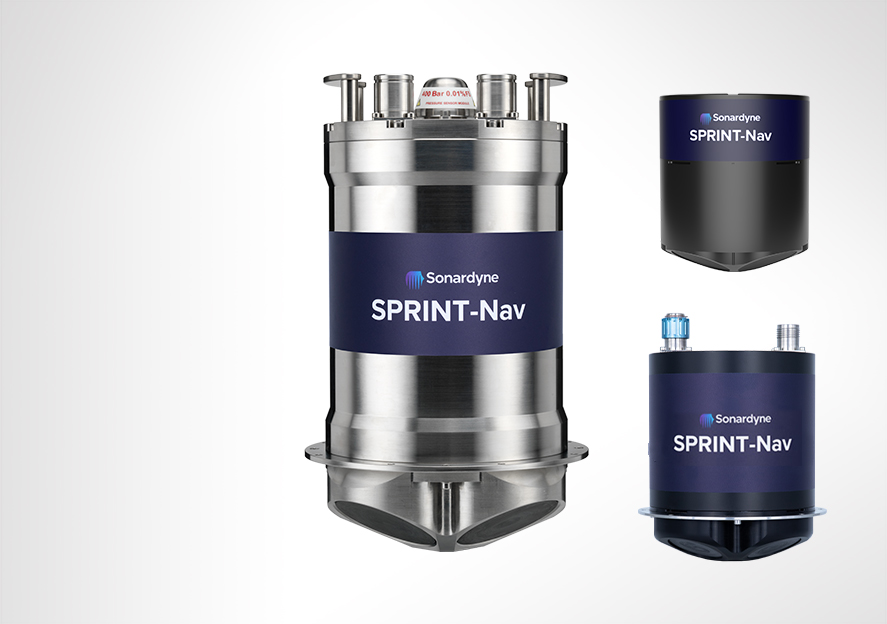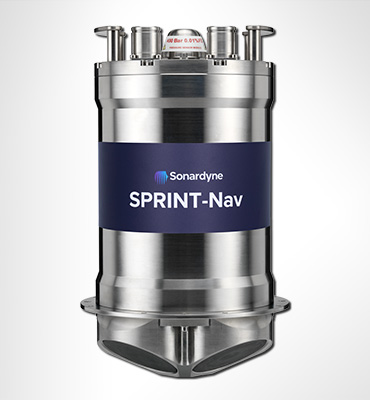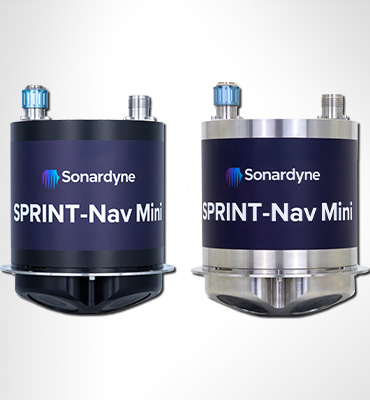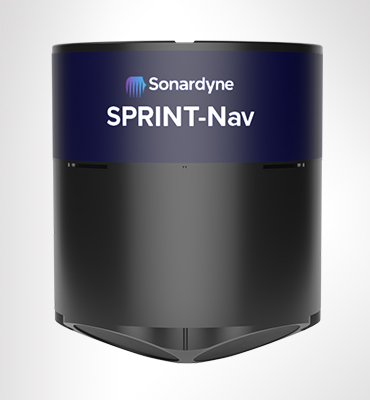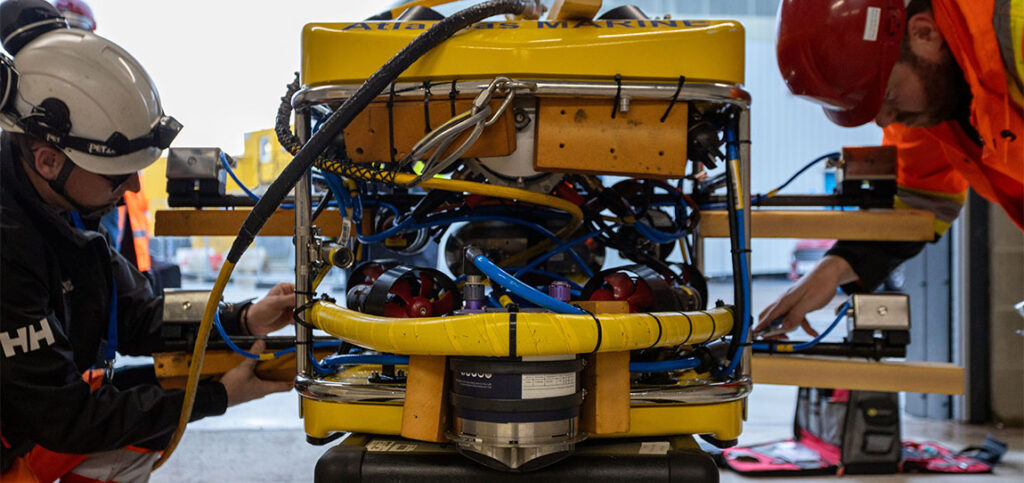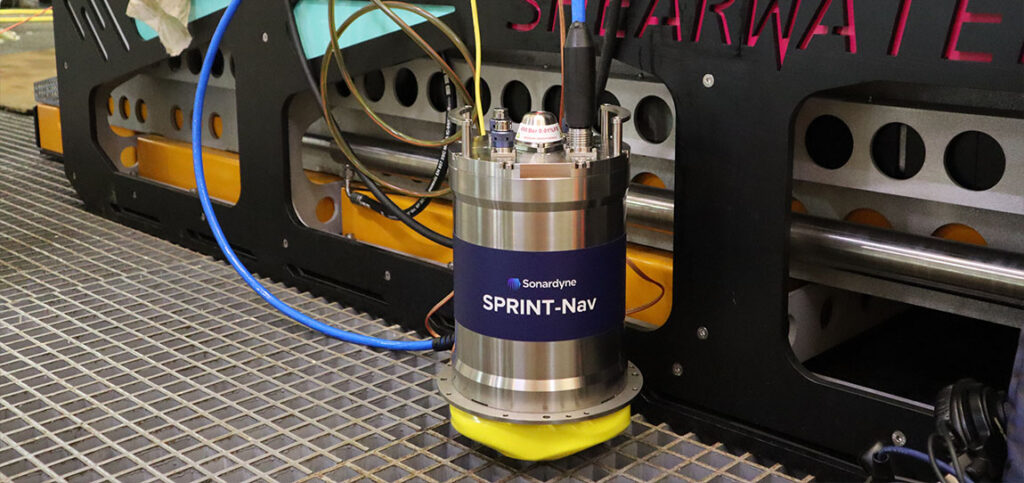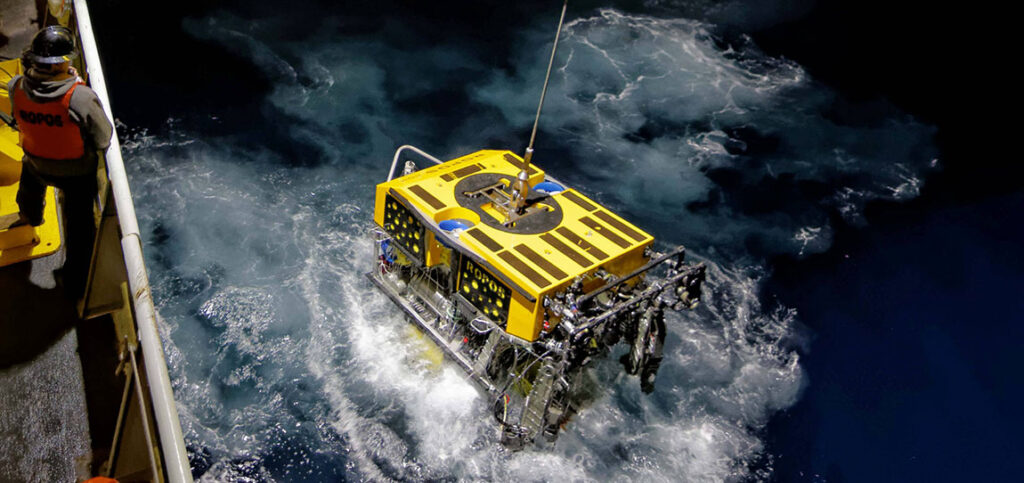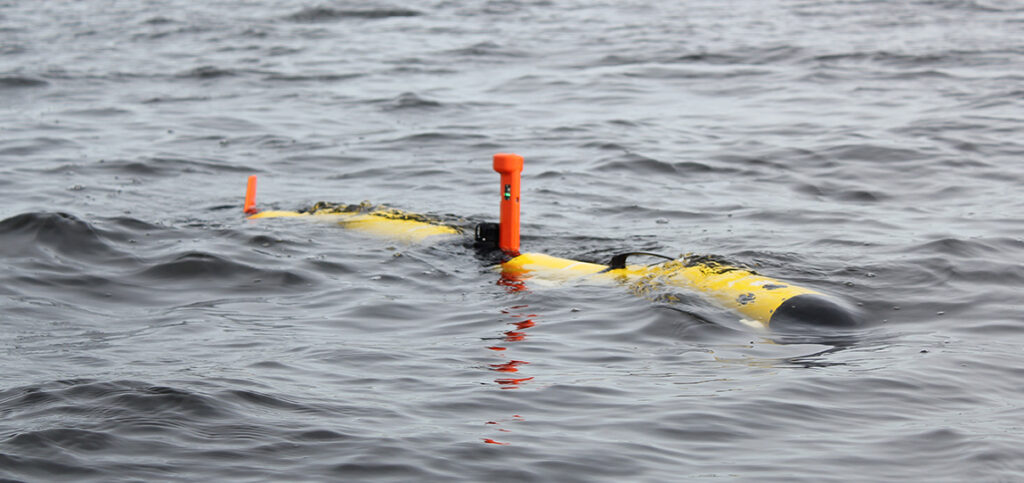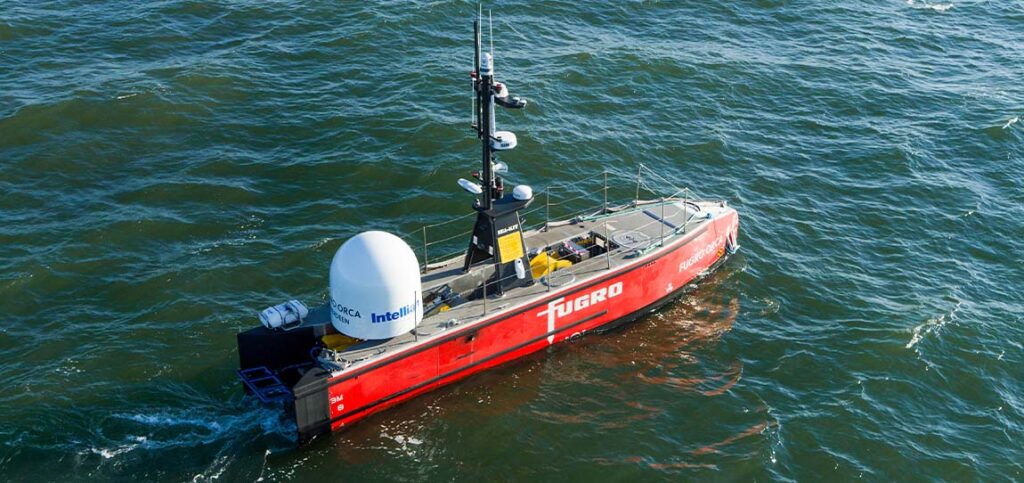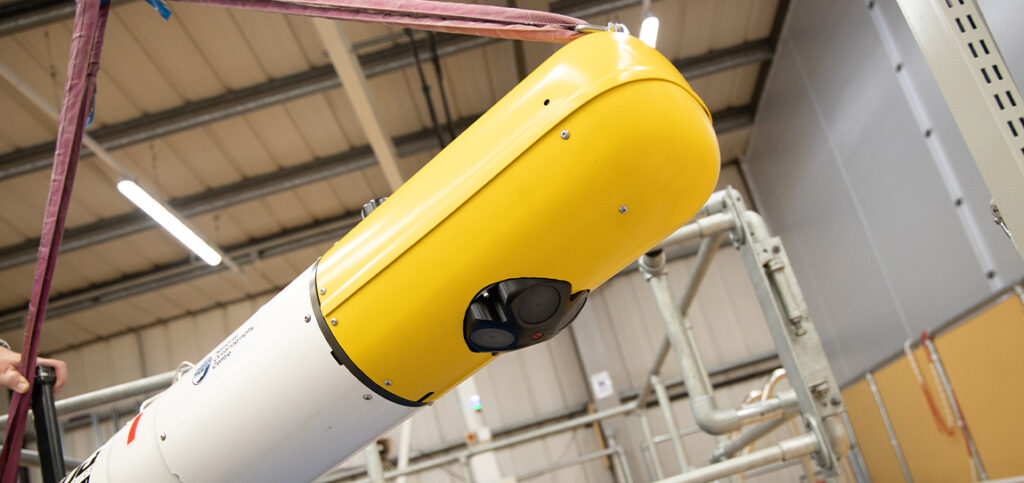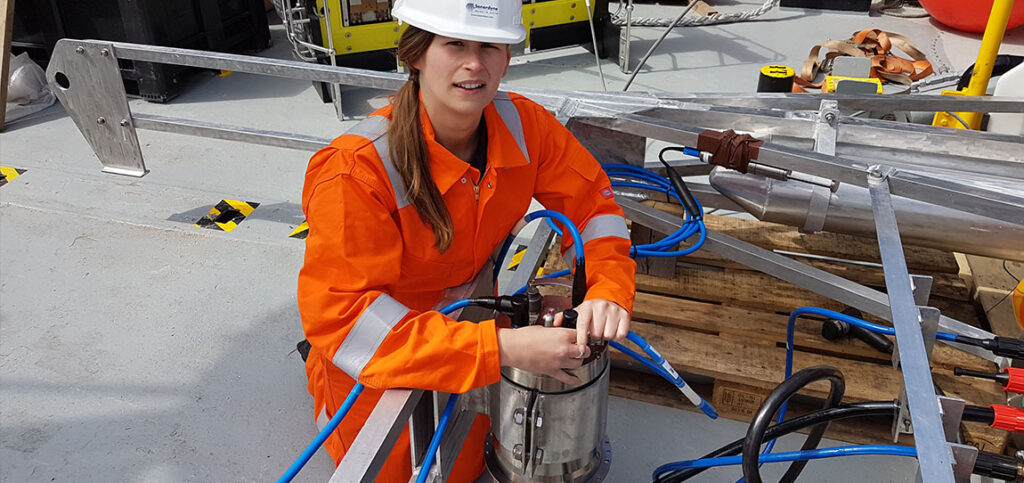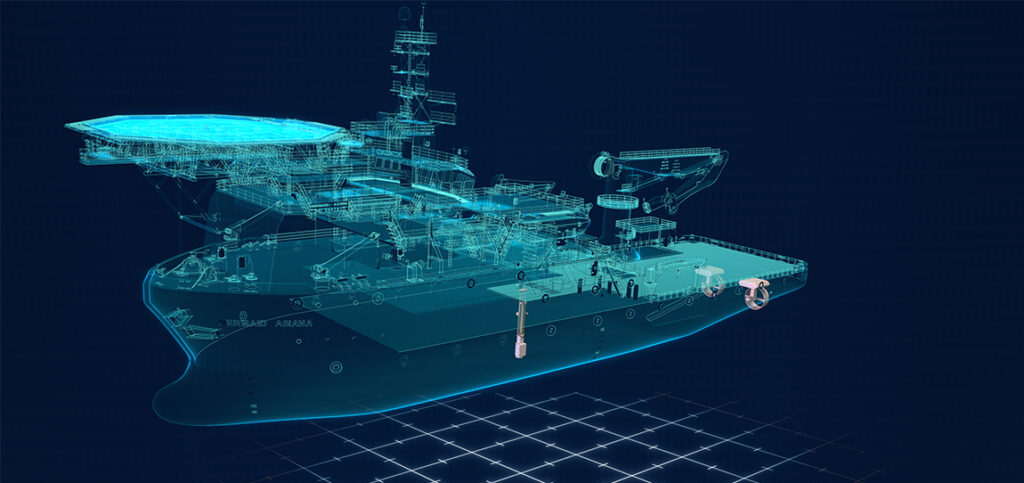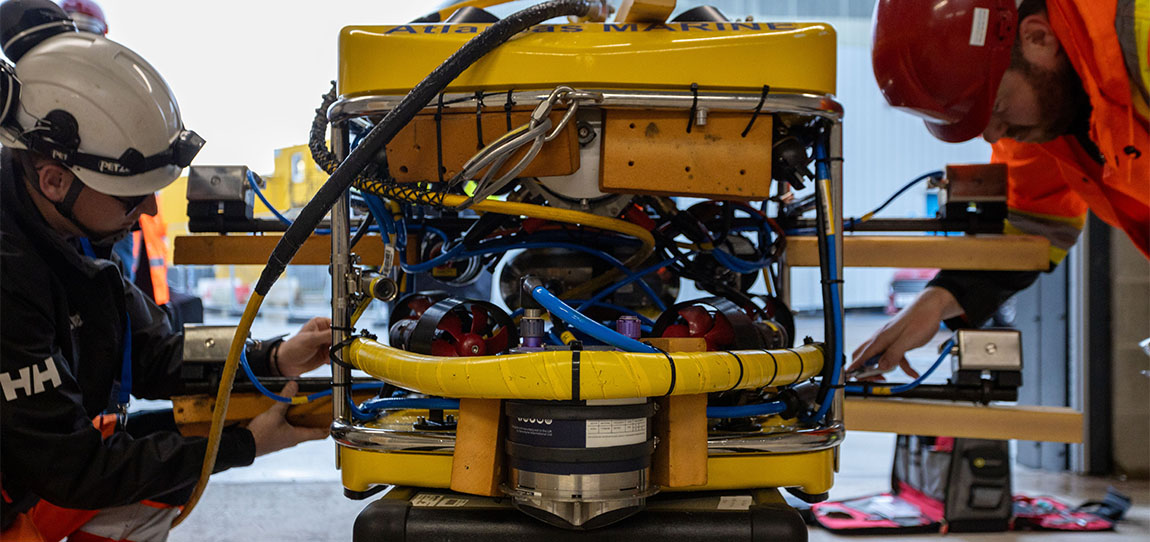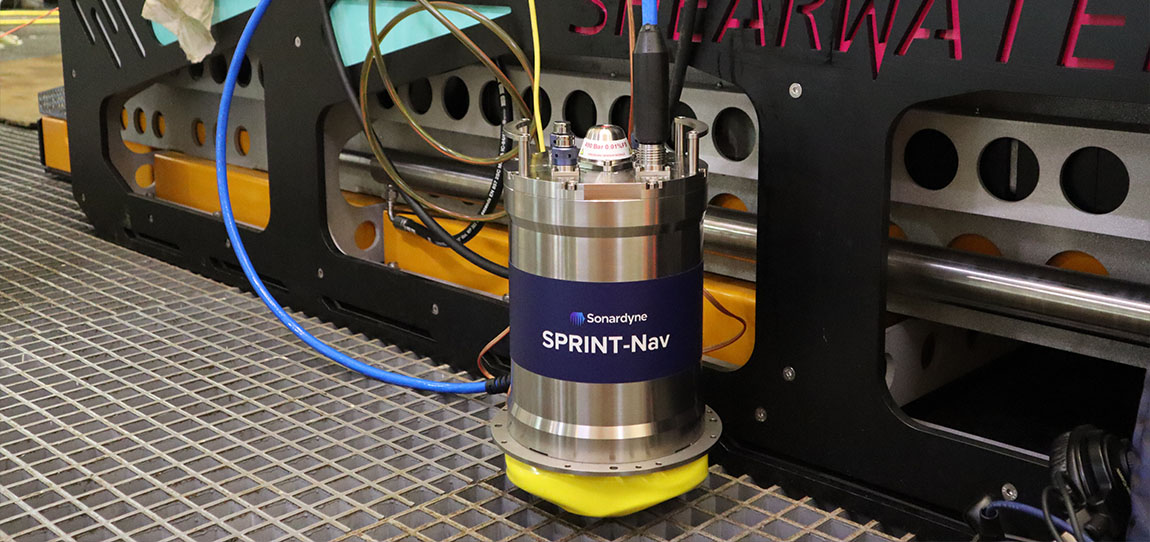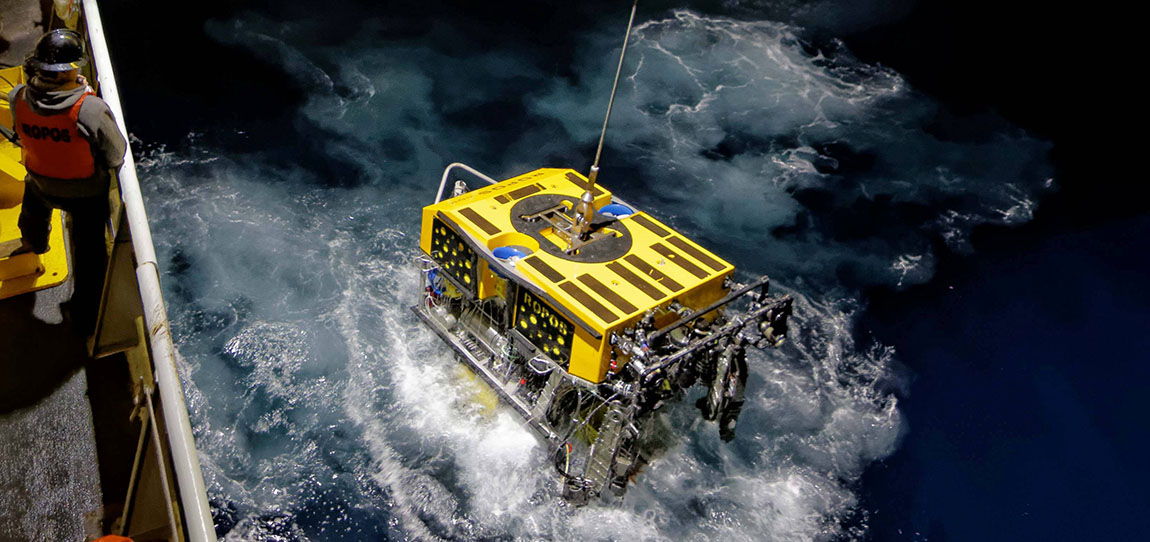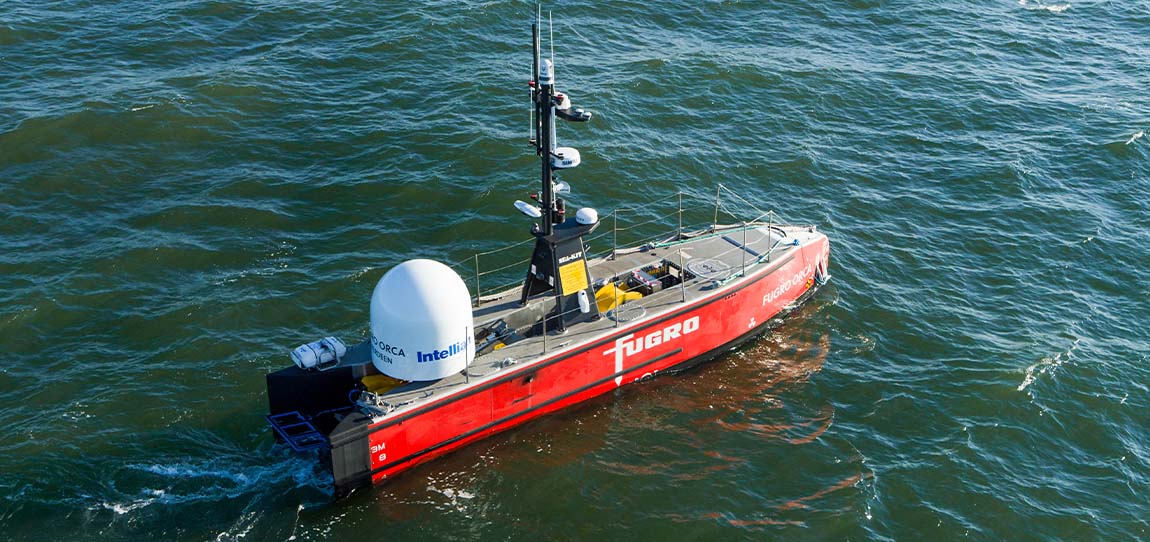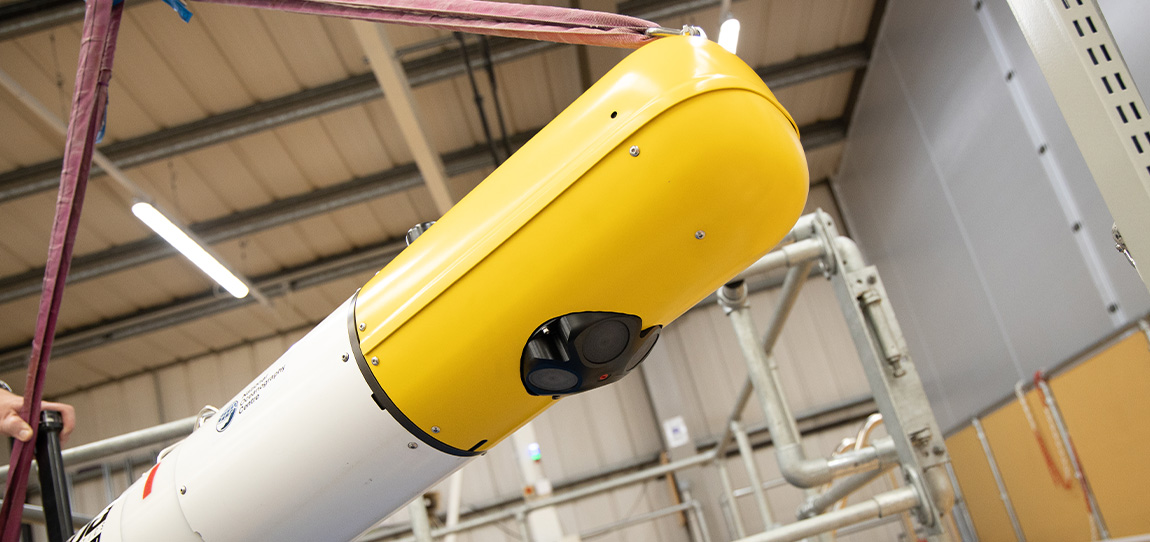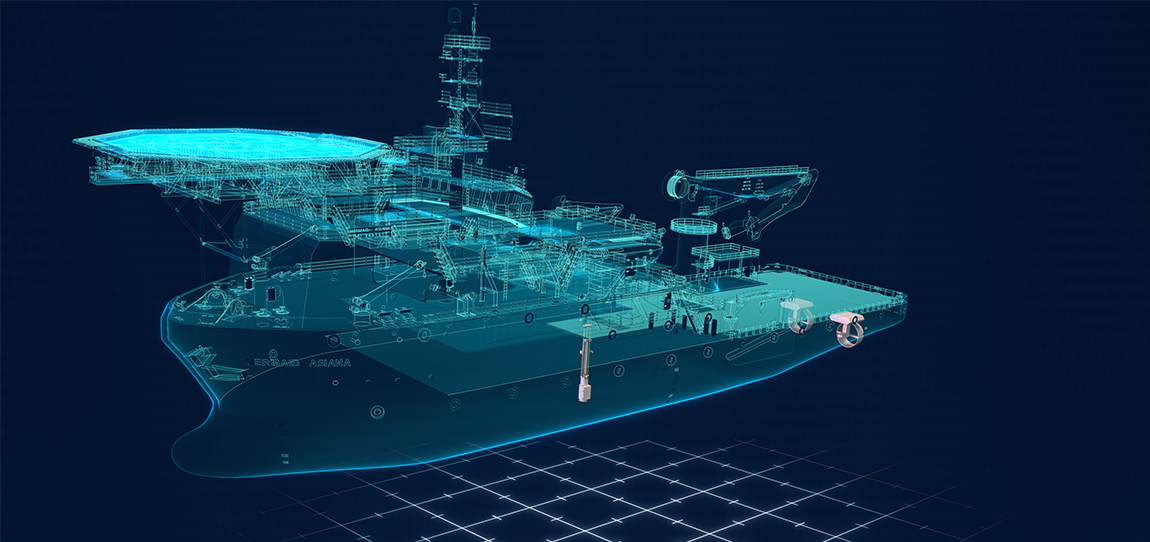Get the SPRINT advantage
SPRINT gives you:
- Robust performance in challenging subsea conditions
- High-precision outputs for enhanced vehicle control
- Instantaneous start-up without lengthy alignment periods
- Seamless integration with your existing equipment
SPRINT optimises acoustic aiding data from USBL, LBL, Doppler Velocity Log (DVL) and pressure sensors, improving position accuracy, precision, reliability, and integrity. It extends the operating limits of your vessel’s USBL and enhances LBL efficiency by enabling sparse seabed transponder arrays. All while reducing operational time and vessel costs.
Choose your SPRINT
- SPRINT 300: Perfect for dual ROV and survey use, standalone ROV guidance, and mid-water station keeping. It’s the most cost-effective subsea INS available, with less than 0.1° Sec Lat Heading accuracy.
- SPRINT 500: Ideal for your demanding multibeam survey operations. Supports tightly integrated sparse LBL range aiding from Sonardyne 6G transponders, with automatic pressure and swell compensation.
- SPRINT 700: Our highest-performance INS system, designed for your most challenging subsea survey tasks. Supports mobile laser mapping and acoustic inertial metrology with tight integration to Sonardyne acoustics.
The technology
Inertial navigation is inherently self-contained and robust with very good short term accuracy, but it can drift over time. Therefore, the SPRINT INS is supported by complementary acoustic positioning to provide long term accuracy and robustness. This significantly reduces operational delays during periods of challenging subsea acoustic conditions such as aeration and noise. The precision and update rate of the output allows greater subsea vehicle control and makes SPRINT suitable for ROV station keeping.
SPRINT shares a hardware platform with our Lodestar AHRS and runs both AHRS and INS algorithms concurrently. This allows instant INS start or restart upon receiving a position update, eliminating the lengthy ‘alignment’ period common in other systems. The system monitors AHRS and INS orientation separately to assess its health. All calculations are performed internally, protecting against communication issues. The system maintains a 15-day backup of navigation and raw data on an onboard SD card, while topside software concurrently logs all data, ensuring data integrity.
DVL and AHRS/INS
Our Syrinx DVL provides tight beam-level aiding to SPRINT, giving superior positioning performance even with partial beam availability. Standalone 3rd generation SPRINT and Syrinx DVL can be joined together for pre-calibrated, interchangeable use, or combined into the compact SPRINT-Nav unit. This integrated solution, optionally including an internal pressure sensor, is suitable for various ROV and survey tasks. The combined unit features depth-rated water blocks for each transducer to protect the internal components and when supplied together typically doesn’t require re-export licensing, simplifying your shipping logistics.
Performance
• Heading accuracy 0.02° (secant latitude)
• 0.01° Pitch/Roll accuracy
• 0.03% Typical survey accuracy
• USBL/LBL aided: 4.5 x precision improvement
• USBL/LBL and DVL aided: 6 to 13 x precision improvement
• INS Aiding supported: USBL, depth, DVL, zero velocity, manual position, LBL (position), GNSS
Design
• Titanium housing construction
• Provides concurrent AHRS and INS capability for dual use
• In field remote performance upgrades: Yes
• Onboard data storage and battery backup to ride through brown outs
• Navigation outputs: position, depth, attitude, velocity, accelerations, rotations
Ownership
• Warranty: 1 year return to Sonardyne service centre
• ITAR Controlled: No
• UK Export Licence: Yes
• What’s in the box: SPRINT, mounting plate, test lead and cable tail, Fusion 2 software
Typical applications
• ROV and towfish positioning
• Hydrographic and multibeam survey
• ROV DP including mid-water station keeping
• Offshore construction; trenching, as-laid, OOS, touchdown monitoring, structure placement
Specifications
| Performance | SPRINT 300 | SPRINT 500 | SPRINT 700 | |
|---|---|---|---|---|
| Heading | 0.05° secant latitude | 0.04° secant latitude | 0.02° secant latitude | |
| INS initialisation | Instantaneous | Instantaneous | Instantaneous | |
| Roll and pitch | 0.01° | 0.01° | 0.01° | |
| INS aiding supported | USBL, Depth, DVL, Zero Velocity, Manual Position, LBL, GNSS | USBL, Depth, DVL, Zero Velocity, Manual Position, LBL, GNSS | USBL, Depth, DVL, Zero Velocity, Manual Position, LBL, GNSS | |
| USBL/LBL aided | 3x precision improvement | 3.5x precision improvement | 4.5x precision improvement | |
| USBL/LBL and DVL aided | 3 to 7 x precision improvement | 4 to 10 x precision improvement | 6 to 13 x precision improvement | |
| LBL/DVL aided | 3 cm confined area, 20 cm wide area (dynamic) | 3 cm confined area, 20 cm wide area (dynamic) | 3 cm confined area, 20 cm wide area (dynamic) | |
| DVL aided | Typical survey | 0.05% | 0.03% | 0.02% |
| Distance from origin | 0.15% | 0.10% | 0.08% | |
| DVL aiding loss/drift | 1.2 m over 1 minute, 5 m over 2 minutes |
0.8 m over 1 minute, 3.2 m over 2 minutes |
<0.5 m over 1 minute, 2 m over 2 minutes |
|
| Station keeping | <1 m over 24 hours (Syrinx DVL) | <1 m over 24 hours (Syrinx DVL) | <1 m over 24 hours (Syrinx DVL) | |
| Power | ||||
| Power requirement | 20–50 V dc, 15 W nominal (35 W maximum) | 20–50 V dc, 15 W nominal (35 W maximum) | 20–50 V dc, 15 W nominal (35 W maximum) | |
| Power pass through | 3x for external aiding sensors (up to 3 A per sensor) | 3x for external aiding sensors (up to 3 A per sensor) | 3x for external aiding sensors (up to 3 A per sensor) | |
| Internal battery backup | Li-ion/5 minutes | Li-ion/5 minutes | Li-ion/5 minutes | |
| Data/Comms | ||||
| Data storage | 8 GB internal memory | 8 GB internal memory | 8 GB internal memory | |
| Serial ports/protocol | 4x RS232 or RS485 | 4x RS232 or RS485 | 4x RS232 or RS485 | |
| Other ports | Ethernet, 4x Triggers | Ethernet, 4x Triggers | Ethernet, 4x Triggers | |
| Output rate | Up to 100 Hz | Up to 100 Hz | Up to 100 Hz | |
| Mechanical | ||||
| Connector options | 4x Seacon/Seanet 1x Seacon/Seanet |
4x Seacon/Seanet 1x Seacon/Seanet |
4x Seacon/Seanet 1x Seacon/Seanet |
|
| Mechanical construction | Titanium | Titanium | Titanium | |
| Dimensions (diameter x height) |
4,000 m (Seacon) | 205 x 260 mm | 205 x 260 mm | 205 x 260 mm |
| 6,000 m (Seacon) | 205 x 280 mm | 205 x 280 mm | 205 x 280 mm | |
| 4,000 m (Seanet) | 205 x 250 mm | 205 x 250 mm | 205 x 250 mm | |
| Weight in air/water | 4,000 m | 18.5/11.5 kg | 18.5/11.5 kg | 18.5/11.5 kg |
| 6,000 m | 22/14 kg | 22/14 kg | 22/14 kg | |
| Environmental | ||||
| Depth rating | 4,000/6,000 m | 4,000/6,000 m | 4,000/6,000 m | |
| Operating temperature | -20 to +55°C | -20 to +55°C | -20 to +55°C | |
| Storage temperature | -20 to +60°C | -20 to +60°C | -20 to +60°C | |
| Shock rating | 22 g, 11 ms half sine | 22 g, 11 ms half sine | 22 g, 11 ms half sine |
Frequently asked questions
How to mount and extract an ISO image
SPRINT, SPRINT-Nav, Lodestar and Lodestar-Nav troubleshooting
How to calculate the heading accuracy of a SPRINT
How to use Fusion 2 LBL and INS dongles
Can I power my subsea instruments with Lodestar or SPRINT?
How do I mate and calibrate a SPRINT or Lodestar to my Syrinx DVL?
How sparse is a sparse LBL array?
What cables do I need for my SPRINT?
How do I mate and calibrate a DVL to my SPRINT?
What software and firmware is compatible with SPRINT and Fusion 2 Systems?
What’s the difference between FOG and RLG?
What does Vehicle and IMU frame of reference mean?
ROV operational procedure for SPRINT-Nav
Can I input an external depth sensor into SPRINT or SPRINT-Nav?
How to plan my sparse LBL array (guidance note)
How do I calibrate my sparse LBL array?
How do I set up SPRINT-Nav in Fusion 2?
How to interface Ranger 2 into a 3rd party survey system
STP files
Software and firmware
Software and control hardware
Top tips
Datasheets
Manuals and quick start guides
Designed and manufactured entirely in the UK, Syrinx is a class leading DVL for surface and subsea vehicles, available in two frequencies: 600 kHz or 400 kHz for higher altitude tracking up to 230 m. Syrinx variants combine high resolution and high altitude tracking, in single, easy to install navigation instruments. Its adaptive bottom lock technology provides consistency and reliability over challenging and changing topography, working at an altitude higher than 85% of the world’s subsea infrastructure. This reduces the amount of time a vehicle must dive on free inertial.
If your mission requires water profiling, Syrinx’s highly capable ADCP mode enables both navigation and profiling without the need for separate instrument, saving you cost and payload.
When tightly integrated with Sonardyne’s SPRINT INS, unmatched DVL-aided navigation can be achieved. This allows for enhanced performance through optimisation of beam-level data passed between Syrinx and SPRINT to aid velocity prediction and outlier rejection, with positioning able to continue even if one or two DVL beams are unavailable. For the ultimate integration Syrinx and SPRINT are also available as a single combined unit with integral pressure sensor. SPRINT-Nav is one of the smallest inertial DVL instruments available on the market suitable for almost any ROV and survey task.
Why Syrinx?
- Unmatched Versatility: Use Syrinx as a DVL, ADCP, or both simultaneously. You decide how to harness its power.
- Deep-Water Performance: Maintain solid bottom lock up to 230 m, with 4,000 m depth rating as standard.
- Adaptive Technology: Our smart bottom lock ensures reliable navigation across varied seabed types.
- Dual-Frequency Options: Choose between 400 kHz for extended range or 600 kHz for high resolution.
- Seamless Integration: Syrinx works harmoniously with our SPRINT INS for unparalleled navigation accuracy.
- Efficiency: Combine navigation and water profiling in one instrument, saving you space and resources.
- Reliability: Individually replaceable transducers to minimise downtime.
- Adaptability: Available in 4,000 m, 6,000 m and OEM versions to suit your specific needs.
- User-Friendly: Web-based System Manager for easy configuration and control.
- Compatibility: Fits existing mounting arrangements and supports various data formats for smooth integration.
Dive deep, control smart
Syrinx runs an embedded system manager using a web browser, eliminating the need to install dedicated PC software. This allows configuration and testing of Syrinx prior to deployment, control during subsea operations and visualisation of the navigation data.
The hardware and vehicle interfacing are easy to install, set up and use. It’s compatible with DVL/ADCP mounting arrangements from other vendors so you shouldn’t need to modify your subsea vehicles to upgrade to Syrinx. PD0, PD3, PD4, PD6, PD13 telegrams are supported for integration to third party navigation systems.
A 4,000 m rated titanium housing is supplied as standard to meet the requirements of work-class ROVs. 6,000 m and OEM (no housing) versions are also available.
Syrinx’s transducers have been designed, built and tested in-house to provide maximum performance, and can be individually replaced, reducing ownership costs and repair time. The entire array is water blocked meaning that should damage occur to the transducer array, the unit’s electronics are isolated from water ingress.
Echo Observer for Syrinx (EOS)
EOS is a software application for Syrinx and SPRINT-Nav systems which allows ADCP data to be viewed, quality controlled, logged and then exported. This standalone application is compatible with Windows 7 or 10 and requires only modest processing resources.
EOS provides an intuitive interface to Syrinx, allowing the device to be configured over Serial port or Ethernet with a quick setup procedure for ADCP measurements. You can immediately view the profile data and make any necessary adjustments before committing to a long-term deployment.
Once initial data inspection has been completed, EOS provides the link to the onward data processing chain: Industry-standard PD0 data can be exported as comma-separated variable (CSV) files, ideal for importing into Excel or Matlab for analysis and post-processing. The exported PD0 data can be tailored to match your analysis needs, such as specific portions of the water column, or a favoured frame of reference.
Specific sections of the PD0 data can be omitted in CSV export if they are not relevant to your analysis, reducing file size and therefore processing time. Echo Observer for Syrinx is included with the ADCP functionality upgrade for both Syrinx and SPRINT-Nav.
Experience the Syrinx DVL advantage
Whether you’re navigating an AUV through complex underwater terrain or precisely positioning an ROV for critical operations, Syrinx provides the accuracy and reliability you need. Our adaptive technology keeps you on track over challenging topography, reducing reliance on inertial navigation.
Ready to transform your underwater operations? Let’s collaborate to integrate Syrinx into your systems and unlock new possibilities in subsea exploration and work. Connect with our team today!
Performance
• 0.4 /230 m min/max altitude
• 0.4–120 m ADCP profile range
• >10 m/s velocity range (DVL)
• 0.01cm/s velocity resolution (DVL)
• Up to ±8.4 m/s ±0.4% of measured value (ADCP along-beam)
Design
• Titanium housing as standard; OEM option
• Replaceable transducers; water block array
• Onboard web UI for setup and configuration.
• Dedicated software for ADCP features
• Max 204 mm x 225 mm, 8.2 kg weight in water (6,000 m version)
Ownership
• Warranty: 1 year return to Sonardyne service centre
• ITAR Controlled: No
• UK Export Licence: Required
• What’s in the box: Syrinx DVL/ADCP and QuickStart guide, EOS software (optional)
Acosutic
• 400 or 600 kHz frequency
• 4-beam array @ 30 degree angles
• Up to 25 kHz DVL ping rate
• Up to 4 Hz ADCP ping rate (optional mode)
Specifications
| Feature | 8275-4531/6531 600 kHz | 8275-4561 400 kHz | |
|---|---|---|---|
| Operating Frequency | 600 kHz | 400 kHz | |
| Bottom Velocity – Single Ping Precision (Standard Deviation @ 1 m/s) | ±0.22 cm/s | ±0.28 cm/s | |
| Long Term Accuracy | ±0.12% ±0.1 cm/s | ±0.22% ±0.1 cm/s | |
| Minimum/Maximum Altitude | 0.4/175 m | 0.4/230 m | |
| Velocity Range | >10 m/s | >10 m/s | |
| Velocity Resolution | 0.01 cm/s | 0.01 cm/s | |
| Data Output Rate | 25 Hz maximum | 25 Hz maximum | |
| Water Reference Velocity | Accuracy | ±0.2% ±0.1 cm/s | ±0.2% ±0.1 cm/s |
| Layer Size | Selectable | Selectable | |
| Minimum/Maximum Range | 0.4/80 m | 0.4/120 m | |
| ADCP | Profiling Range | 0.4–80 m | 0.4–120 m |
| Velocity Range & RMS (Along Beam) | Up to ±5.6 m/s ±0.4% of measured value | Up to ±8.4 m/s ±0.4% of measured value | |
| Maximum Number of Cells | 255 | 255 | |
| Maximum Ping Rate – ADCP | 4 Hz | 4 Hz | |
| Maximum Ping Rate – DVL + ADCP | 2.5 Hz | 2.5 Hz | |
| Beam Width | ±1.0° | ±1.3° | |
| Beam Angle | 30° | 30° | |
| Transmit Source Level (dB re 1 µPa @ 1 m) | 217 dB (maximum) | 217 dB (maximum) | |
| Sensors | Temperature | -5 to 40°C | -5 to 40°C |
| Pitch/Roll (Optional) | ±0.5° | ±0.5° | |
| Pressure (Optional) | ±0.1% full scale | ±0.1% full scale | |
| Configuration (Array) | 4-beam array @ 30° beam angles | 4-beam array @ 30° beam angles | |
| Communication and Logging | Communications | Dual RS232, multi-port Ethernet (TCP & UDP) | Dual RS232, multi-port Ethernet (TCP & UDP) |
| Trigger Inputs | 3–12 V rising or falling edge configurable | 3–12 V rising or falling edge configurable | |
| Internal Logging | 32 GB internal memory | 32 GB internal memory | |
| Output Telegrams | Sonardyne proprietary, PD0, PD3, PD4, PD6, PD13, SDDBT Simultaneous telegram output |
Sonardyne proprietary, PD0, PD3, PD4, PD6, PD13, SDDBT Simultaneous telegram output |
|
| Voltage (dc Input) | 24 V (±10%) | 24 V (±10%) | |
| Average Power (Typical) | 10 W nominal | 10 W nominal | |
| Depth Rating | 4,000 or 6,000 m array | 4,000 or 6,000 m array | |
| Operating Temperature | -5 to 55°C | -5 to 55°C | |
| Storage Temperature | -20 to 55°C | -20 to 55°C | |
| Mechanical Construction | Titanium | Titanium | |
| Connector Type | Subconn | Subconn | |
| Dimensions (Height x Diameter) | 4000 m | 189 x 225 mm | 189 x 225 mm |
| 6000 m | 204 x 225 mm | n/a | |
| Weight in Air/Water | 4000 m | 12.0/9.1 kg | 11.3/8.5 kg |
| 6000 m | 14.4/10.9 kg | n/a |
Frequently asked questions
What is PD0?
What is a DVL and how does it work?
How do I mate and calibrate a DVL to my Lodestar?
How do I mate and calibrate a SPRINT or Lodestar to my Syrinx DVL?
What interference might I get between Syrinx DVL and the other acoustic equipment on my vehicle?
What is the maximum seabed slope that I can still bottom track?
How to correct for speed of sound
Can I externally trigger Syrinx DVL?
What is the maximum rate that I can ping?
What are the maximum and minimum velocities that Syrinx DVL can detect?
What are the maximum and minimum altitudes that Syrinx DVL will operate?
How do I mate and calibrate a DVL to my SPRINT?
How do I install a firmware update to Syrinx DVL?
How to download files from Syrinx DVL
DVL mounting considerations for ROVs and AUVs
What DVL messages are supported?
SPRINT-Nav Maintenance Schedule
STP files
Software and firmware
Top tips
Manuals and quick start guides
Technical bulletin
Make time-critical decisions with near real-time data delivery
Analyse the structure of your velocity and backscatter intensity data in far finer detail than previously possible with our proprietary formats delivering up to ten times greater spatial resolution. Origin 600 delivers conventional PD0 data as standard, whilst logging the higher resolution data to further enhance your results. All data is recorded to the onboard storage unit with 1 TB capacity.
Reduce your risks and device retrieval costs with power-efficient electronics and a rechargeable internal battery which allows deployments of up to three months on a single charge. A dual battery option allows you to operate longer or more energy demanding deployments. External power can be supplied by PoE, allowing you to program and download data without a separate power supply.
Monitor waves, mean currents and turbulence using Origin 600’s five-beam configuration and sampling frequency of up to 4 Hz on all beams. Your Origin’s built-in acoustic modem enables you to remotely access the unit while it’s deployed using an accompanying topside modem (sold separately) and the Origin Topside PC software. This allows you to check battery and storage, inspect and upload data, reconfigure schedules and run quality control, all whilst your ADCP is on the seabed.
Add external sensors to your ADCP mounting frame, and fuse with your Origin data via the Edge processing software, to really get the most out of every single deployment. You can upload sensor apps via Origin Portal or Topside and the resulting data will be exported over the acoustic modem.
What is Edge?
Discover the key to your customised ADCP data…
A suite of intuitive software tools and the Sonardyne Edge computing environment allows you to get the most out of your Origin 600. The Origin Portal web UI lets you configure your ADCP in operational conditions, including modification of the sampling schedule. Reduce your operational risks by setting your schedules before deployment using the Origin Scheduler PC application. Two schedules can be run together, allowing dual monitoring tasks to be performed with a single device. File data can be inspected using the Origin Viewer software package.
Origin 600 is compatible with your standard mounting infrastructure, reducing your risk and cost for upgrading to this device. For a complete solution, we can provide a dedicated, rugged stand with space for dual redundant releases.
Why choose Origin 600 ADCP?
Origin 600 – Mid-range ADCP
Origin 600 – Mid-range ADCP
Five reasons to LOVE Origin 600 ADCP
Five reasons to LOVE Origin 600 ADCP
Origin 600 for ocean science
Origin 600 for ocean science
Performance
• 625 kHz operating frequency
• 1.2 to 60 m profiling range
• 150 m operational depth rating
• Onboard data storage and processing, 1TB onboard storage as standard
Design
• All-in-one design
• Compact and easy to install from small vessels
• Dual battery and external power options
• Internal rechargeable battery allows for deployments of 3 months
Expanded functionality
ADCP data can be supplemented by and Edge-fused with data from external sensors so you can really get the most out of a single device deployment and the data generated. Optional seabed stand with integrated Sonardyne acoustic release for recovery using Ranger family of USBL systems.
Remote control
The integrated acoustic modem enables actions with the ADCP already in the water, delivering in-field flexibility and data assurance. Deploy and forget; integrated MF frequency modem offers in-situ data recovery, remote re-configuration and survey QC.
Specifications
| Features Type 8382 (-0457 single battery; -0427 dual battery) |
ADCP | Echosounding | |
|---|---|---|---|
| Acoustics | Operating frequency | 625 kHz | |
| Maximum profiling range | 60+ m (depending on water environment) | ||
| Minimum cell size | 12 mm | ||
| Minimum blanking distance | 0.6 m | 0.04 m | |
| Velocity range (along beam) |
Up to ±2 m/s or 3.75 m/s |
n/a | |
| Velocity RMS | 0.5% of measured value | n/a | |
| Maximum number of cells | B-gram 5,000; A-gram 2,500; PD0 255 | 5,000 | |
| Maximum ping rate | 4 Hz (5 beams) | ||
| Beam width/angle | ±1 degrees/ 25 degrees |
||
| Echosounding dynamic range/ resolution |
n/a | 79/0.002-2.5 dB | |
| Acoustic modem | Operating frequency | MF (20–34 kHz) | |
| Typical operating range | 500 m | ||
| Sensors | Temperature | -5° to 35°C | |
| Heading accuracy/ resolution |
±1°/0.1° | ||
| Pitch & roll accuracy/ resolution & range | ±1°/0.1° & ±90° (pitch), ±180° (roll) | ||
| Pressure | ±0.05% full scale | ||
| Communication and logging | Communications | RS232, Ethernet and acoustic modem | |
| Internal logging | 1 TB internal memory | ||
| Output | Output telegrams | PD0, A-gram, and B-gram |
|
| Electrical | External power | 18-48 V power by external cable; PoE+ | |
| Power | 45 mW (acoustic modem on), 3.5 W (fully active) | ||
| Internal battery | Li-Ion 800 Wh, 1600 Wh dual version |
||
| Internal battery recharge | 4 hours fast charge (8 hours for dual battery option) | ||
| Full/scheduled/ standby lifespan |
1 week/3 months/ 2 years |
||
| Environmental | Depth rating | 300 m (survivable), 150 m (operational) | |
| Operating/storage temperature | -5 to 40°C/ -20 to 55°C |
||
| Mechanical | Construction | Plastic | |
| Connector type | Subconn: 8-way for power and comms; 6-way for fast-charge | ||
| Dimensions (height x max diameter) |
308 x 290 mm (dual battery height 388 mm) |
||
| Weight in air/ water | 19.2/7.2 kg (dual battery option 23.9/ 7.9 kg) |
||
| Software | Origin Portal | Embedded Web UI for control & configuration | |
| Origin Scheduler | Schedule planning & configuration tool | ||
| Origin Viewer | File data inspection | ||
| Origin Topside | Remote configuration & control over acoustic modem |
Frequently asked questions
Can I use Origin 600 in a cabled operation?
Where does Origin 600 get time and date from?
How do I get an Edge license?
Origin 600 – What’s in the box?
What is PD0?
How much current does Origin 600 draw?
What data formats do Origin ADCPs produce and can I transform between the different data formats?
What do I do if I can’t establish acoustic communication with Origin 600?
How do I access data stored on Origin 600?
What is an ADCP and how does it work?
What is the benefit of an internal rechargeable battery for Origin 600?
What is the Origin Scheduler?
Why access ADCP data remotely?
What is the beam configuration of Origin 600?
What are the topside options for Origin 600?
What are the benefits of an integrated acoustic modem?
What is Edge?
What are sidelobes?
What are my data retrieval options with Origin?
What are the operational parameters of Origin 600?
What is Edge SDK?
What are Edge apps and what apps are available?
How do I use the battery disconnect?
How do I upload an Edge app to my Origin ADCP?
How do I recharge my Origin 600 battery?
Does Origin’s internal compass require calibration?
Can I reconfigure my Origin ADCP once deployed?
Can I integrate external sensors with Origin?
Software and firmware
Manuals and quick start guides
An innovative, robust acoustic design
Its pioneering satellite-dish design allows Origin 65 to match or exceed the acoustic performance of competing instruments. All while reducing your costs, prolonging battery life and increasing robustness to pressure cycling – a long-standing problem with low-frequency ADCPs.
Connect to the subsea world – integrated modem and PIES
Check or reprogramme your Origin 65 acoustically while on the seabed via its integrated acoustic modem. There’s no need to retrieve the device or interrupt your operation.
During your operations, Pressure Inverted Echosounder (PIES) measurements are interleaved with current profiles. This allows time-of-flight (TOF) and average sound velocity (SV) to be determined in-situ alongside the ADCP sampling and the data fused in PD0, delivering all data time-aligned in one place.
At the end of a deployment, the modem can be used to trigger the integrated acoustic release, allowing the device to float to the surface for retrieval.
Don't just settle for standard – introducing A-gram and B-gram data
Your Origin 65 delivers industry standard PD0 data format as default, but why settle for standard when you can have up to ten times greater resolution?
Origin generates our exclusive A-gram and B-gram formats. These offer up to ten times greater spatial resolution than PD0 and expose raw acoustic data which you can them interrogate for your specific operations.
Origin ADCP – Edge enabled
Edge lets you run data processing apps on Origin 65 which are customised to your exact needs. The system will produce the information you are most interested in, rather than bulky raw data that would normally be processed once the device is recovered. You can harvest this data as a file or as a live stream, either through a cabled connection or Origin 65’s integrated acoustic modem.
What is Edge? Discover the key to your customised ADCP data…
Edge computing gives you the ability to write your own apps for Origin via our Software Development Kit (Edge SDK) so that you can focus on the data you need from your operation. To get you started, some of the apps already available to download include simple background currents and quality metrics.
Data gathered by your Origin can also be processed to your requirements within Edge before it is harvested. This minimises both the amount of unnecessary data in each upload and the time taken for each harvest.
Learn more about Origin
Acoustics
• 62.5 kHz operating frequency
• Works with Ranger 2 USBL acoustics
• LMF frequency modem (14-19 kHz)
• Integrated acoustic release
Design
• Innovative acoustic design
• Onboard Edge processing
• Free fall deployment and recovery
• Supports post capture USV data harvesting
Performance
• 800 m profiling range
• Minimum cell size of 120 mm
• Innovative software ecosystem
• 4,500 m operational depth rating
Ownership
• Works with your existing Ranger 2 USBL system
• Warranty: 1 year return to Sonardyne service centre
• UK Export License: Yes
• Comes with Origin Scheduler, Viewer, Portal and Topside software as standard
Specifications
| Features | Type 8323 | |
|---|---|---|
| ADCP | Operating frequency | 62.5 kHz |
| Maximum profiling range | 800+ m (depending on water environment) | |
| Minimum cell size | 120 mm | |
| Minimum blanking distance | 12 m | |
| Velocity range (along beam) | Up to ±2 m/s or 3.75 m/s user selectable | |
| Velocity RMS | 0.5% of measured value | |
| Maximum number of cells | 2,500 | |
| Maximum ping rate | 1 Hz (4 beams) | |
| Beam width/angle | ±2 degrees / 20 degrees | |
| Acoustic modem | Operating frequency | LMF (14–19 kHz) |
| Sensors | Temperature | -5° to 35°C |
| Heading accuracy/resolution | ±1°/0.1° | |
| Pitch and roll accuracy/resolution and range | ±1°/0.1° & ±90° (pitch), ±180° (roll) | |
| Pressure (high precision) | ±0.01%. 6,000 psi (4,100m depth) max. (higher rated options available on request) | |
| Communication and logging | Communications | RS232, Ethernet and acoustic modem |
| Internal logging | 1 TB internal memory | |
| Output | Output telegrams | PD0, A gram, B gram; simultaneous output |
| Electrical | External power | PoE+, adapter included |
| Power | 15 mW (sleep), 16 W (pinging), 20 W (fully active) | |
| Disposable battery capacity | 504 Ah dual battery; single and triple battery options available | |
| Full/scheduled/standby lifespan | 6 weeks/2 years/12 years | |
| Environmental | Depth rating | 4,500 m depth rating3 (pressure sensor rated to 4,100 m. Deeper rated options available on request) |
| Operating/storage temperature | -5 to 40°C / -20 to 55°C | |
| Mechanical | Construction | Glass, steel and plastic |
| Connector type | Subconn: 8-way for power and comms | |
| Dimensions (height x max diameter) | 1110 mm x 1306 mm x 1324 mm | |
| Weight in air/water | 230/25 kg (excluding stand 170/-21 kg) | |
| Software | Origin Portal | Embedded Web UI for control and configuration |
| Origin Scheduler | Schedule planning and configuration tool | |
| Origin Viewer | File data inspection | |
| Origin Topside | Remote configuration and control over acoustic modem |
Frequently asked questions
How do I get an Edge license?
What is PD0?
What data formats do Origin ADCPs produce and can I transform between the different data formats?
What is an ADCP and how does it work?
What are the topside options for Origin 65?
What is the Origin Scheduler?
Why access ADCP data remotely?
What is the beam configuration of Origin 65?
What are the benefits of an integrated acoustic modem?
What is Edge?
What are sidelobes?
What are my data retrieval options with Origin?
What are the operational parameters of Origin 65?
What is Edge SDK?
What are Edge apps and what apps are available?
What is the purpose of Origin 65’s integrated PIES?
How does the Origin 65 acoustic design work?
How do I use the battery disconnect?
How do I upload an Edge app to my Origin ADCP?
Does Origin’s internal compass require calibration?
Can sediment deposits on Origin 65 reflectors affect acoustic performance?
Can I reconfigure my Origin ADCP once deployed?
Can I integrate external sensors with Origin?
Software and firmware
Datasheets
Manuals and quick start guides
The prefect package for when you need reliable performance
Subsea navigation
Measuring just 213 mm in height (only fractionally taller than some competing DVL-only instruments), 148 mm in diameter and weighing in at approximately 3.6 kg in air for the 300 m rated unit – or 7.1 kg for the 4,000 m depth version , SPRINT-Nav Mini packs a big punch for all your underwater navigation ocean robot applications.
It’s powered by the same hybrid acoustic-inertial navigation algorithm you’ll find inside our established SPRINT-Nav family. This combines the strengths of all its sensors to provide robust, precise and accurate outputs. It continues to work even in challenging environments providing a continuous stream of positions, orientation, velocities, depth and altitude at up to 200 updates per second.
Ready to go – Pre-calibrated
Your SPRINT-Nav Mini arrives pre-calibrated, meaning there is no need to manoeuvre your vehicle every time the unit is mobilised. SPRINT-Nav Mini does the thinking for you, all in a single plug-and-play unit. Turn it on, give it a latitude, and away you go.
Despite its small size, it’s still a true north seeking gyrocompass which won’t drift over time unlike MEMS-based systems. The output can be fed directly to your own (or a third party) user interface or vehicle control software. The simple web user interface makes setup and configuration painless. It could not be any simpler.
Need to operate from coastal waters or around offshore structures? Not a problem! Low power and small, SPRINT-Nav Mini is ideal for installing on all size ROVs or USVs undertaking missions, even in GNSS-denied environments.
Conducting marine research on a restricted budget? Let us help… Because it’s lower cost than the four separate sensors it replaces, SPRINT-Nav Mini is the budget-friendly solution for your research platforms where funds need to stretch as far as possible.
Available in two depth ratings, 300 m and 4,000 m. A side-connector option is also available, depth rated for 300 m and only 187 mm high, making it ideal for tight spaces on small platforms.
SPRINT-Nav Mini at a glance
- 213 mm tall by 148 mm in diameter all-in-one hybrid acoustic-inertial subsea navigator
- Hybrid DVL-INS synergies dramatically improve both robustness and performance compared with standalone instruments.
- Fly higher – 500 kHz DVL maintains bottom lock at up to 200 m altitude
- Replaces four separate instruments; AHRS, DVL, INS and pressure sensor – saving you cost, cabling and payload
- Easy to integrate, simple to operate, web UI for configuration
Discover more about SPRINT-Nav Mini
Straight out of the box navigational enhancement for offshore out of straightness surveys
Read moreDelivering subsea synergy in ORE inspections
Read moreMapping the future for seagrass beds in Plymouth Sound
Read moreOwnership
• What’s in the box: SPRINT-Nav Mini, mounting plate, test lead and cable tail
• Warranty: 1 year return to Sonardyne service centre
• ITAR Controlled: No
• UK Export License: Yes
Performance
• 300 m and 4,000 m depth rated options
• Provides 0.05% error for distance travelled
• Heading accuracy 0.5° secant latitude (0.1° Navigator variant)
• 0.02° Pitch/Roll accuracy
• 0.3/200 m min/max altitude
• 0.01% FS depth
• Up to 200 Hz output rate
• Better than 0.4 cm/s velocity precision (<2 m/s at 50 m altitude)
General
• Ideally suited for subsea vehicle guidance, control and navigation
• Size, weight and power optimised; perfect for all size vehicles
• Powered by our class-leading SPRINT hybrid navigation engine
• Cheaper than the four separate sensors it replaces
• Gyrocompass simplicity with hybrid acoustic-inertial navigation performance
Design
• 213 x 148 mm, 3.6 kg weight in air (300 m version), 7.1 kg (4000 m version)
• Acetal Copolymer (300 m) or Titanium (4000 m) housing construction
• Mounting plate, choice of top or bottom mounting location
• 14 pin and 7 pin Size A CRE connectors. Custom connectors on request
• Side-connector option
• User friendly web UI makes it easy to integrate and simple to operate
Specifications
| Performance | SPRINT-Nav Mini | |
|---|---|---|
| DVL Aided | Typical Survey | 0.05% |
| Distance from origin | 0.30% | |
| Altitude Min/Max | 0.3/200 m | |
| USBL & DVL Aided | Precision Improvement | Up to 5x better |
| Heading (Secant Latitude) with GNSS or USBL, and DVL | 0.10° | |
| Heading (Secant Latitude) with GNSS or USBL or DVL | 0.15° | |
| Roll and Pitch | 0.02° | |
| Angular Rate Range | ±450°/s | |
| Velocity Precision (<2 m/s at 50 m Altitude) | <0.4 cm/s | |
| Depth accuracy | 0.01% FS | |
| ADCP | Profiling range | 0.4–100 m |
| Velocity Range & RMS (along beam) | Up to ±6.7 m/s ±0.4% of measured value | |
| Maximum number of Cells | 255 | |
| Max Ping rate | 1 Hz | |
| Power Requirements | 24 V dc, 10 W nominal | |
| Data Storage | 32 GB internal memory | |
| Serial Ports/Protocol | 3x RS232 | |
| Interfaces | Ethernet, UDP/TCP, WebUI, 2x trigger inputs (1PPS/DVL trigger), NTP, ZDA + 1PPS out | |
| Mechanical Construction | 300 m | POM-C |
| 4,000 m | Titanium | |
| Dimensions (Diameter x Height) | Standard – 300 m | 148 x 213 mm |
| standard – 4,000 m | 148 x 213 mm | |
| Side connector – 300 m | 148 x 187 mm (174 x 187 including connector) | |
| Weight Air/Water | 300 m | 3.6/0.7 kg |
| 4,000 m | 7.1/4.2 kg | |
| Depth Rating | 300/4,000 m | |
| Operating Temperature | -5 to 50°C | |
| Storage Temperature | -25 to 55°C |
Frequently asked questions
What is PD0?
How to discover and change the IP address of your SPRINT-Nav Mini
What is a SPRINT-Nav & hybrid navigation?
SPRINT-Nav Mini performance descriptions explained
What is a DVL and how does it work?
Sprint-Nav Mini troubleshooting information
What interference might I get between Syrinx DVL and the other acoustic equipment on my vehicle?
What kind of help is there for integration with my SPRINT-Nav Mini kit?
Can I use a SPRINT-Nav Mini on an AUV as well as an ROV?
Why have you chosen FOG, rather than RLG sensors?
Do I need to calibrate the SPRINT-Nav Mini?
What’s the difference between FOG and RLG?
What does Vehicle and IMU frame of reference mean?
Can you post-process SPRINT-Nav data?
Can I input an external depth sensor into SPRINT or SPRINT-Nav?
Does it matter where and how you mount a sound velocity sensor for use with a SPRINT-Nav or SPRNT-Nav Mini system?
Are SPRINT-Nav and SPRINT-Nav Mini swap-and-replace compatible?
Do I need to calibrate my SPRINT-Nav?
Deployment
STP files
Software and firmware
Datasheets
Manuals and quick start guides
Integration guides
Find out what's possible
SPRINT-Nav is a compact, all-in-one navigation tool for underwater and surface vehicles, integrating SPRINT INS, Syrinx DVL, and a high-accuracy pressure sensor. Available in four performance levels (300, 500, 700, and X) and two depth ratings (4,000 m and 6,000 m), it offers two DVL frequencies: 600 kHz and a high-altitude 400 kHz option.
Its Inertial Measurement Unit (IMU), featuring Honeywell ring laser gyros and accelerometers, works closely with the Syrinx DVL and a high-performance pressure sensor. This integration ensures unparalleled accuracy and reliability.
SPRINT-Nav saves time, costs, and payload space while offering unmatched performance and reliability for a wide range of subsea and surface vehicle applications.
Select the performance level right for your operation
- 300: Supports dual ROV and survey use, standalone ROV guidance and mid-water station keeping with vendor independent USBL aiding.
- 500/700: For more demanding applications, such as dynamic mobile mapping, this high-performing, survey-grade subsea INS is integrated with Sonardyne acoustics to provide you with the extra data functionality you need.
- X: Offers you exceptional navigational accuracy (<0.01% of total distance travelled) and ultimate suitability for long-endurance missions with XLUUVs, AUVs and USVs, making them viable alternatives to large, crewed vessels. The top-tier model for your specialised energy, defence and science operations.
Learn more about SPRINT-Nav
Echo Observer for Syrinx (EOS)
EOS is the software application for viewing, quality controlling, logging and exporting ADCP data from your SPRINT-Nav system. Compatible with Windows 7 or 10, it provides an intuitive interface to configure and monitor ADCP measurements and export data for analysis. EOS enables you to:
- Quickly set up and view profile data
- Export PD0 data as CSV files for further analysis
- Tailor exported data to match specific analysis needs
Why choose SPRINT-Nav?
SPRINT-Nav is the ultimate navigation solution for your autonomous subsea or surface vehicle operations. Calibration-free and packed with cutting-edge sensors, SPRINT-Nav combines INS, DVL, AHRS, and depth data into one compact unit. Available in 400 kHz and 600 kHz DVL options, as well as four performance levels, SPRINT-Nav ensures ultimate accuracy from deep water ROVs to shallow water USVs. Its detachable pressure sensor module allows for easy calibration and repair, while power-pass-through reduces cabling complexity. With dual algorithm capability for both ROV piloting and survey operations, SPRINT-Nav is the all-in-one navigation system you need to maximize productivity.
Built for
• Autonomous Underwater Vehicles (AUVs)
• Extra-Large Uncrewed Underwater Vehicles (XLUUVs)
• Uncrewed Surface Vehicles (USVs)
• Remotely Operated Vehicles (ROVs)
• SEAL Delivery Vehicles (SDVs)
Design
• 240 x 395 mm, 13.1 kg weight in water or 240 x 405 mm, 17.2 kg
• Titanium housing construction
• Provides concurrent AHRS and INS capability for dual use
• Onboard data storage and battery backup
• Individually water blocked and replaceable DVL transducers
• In field remote performance upgrades: Yes
Performance
• Heading accuracy 0.04° (secant latitude)
• 0.01° Pitch/Roll accuracy
• 0.02% Typical survey accuracy
• Station keeping <1m over 24 hours
• Provides bottom lock up to 230 m
Ownership
• Warranty: 1 year return to Sonardyne service centre
• ITAR Controlled: No
• UK Export License: Yes
• What’s in the box: SPRINT-Nav, mounting plate, Fusion 2 software, test lead and cable tail
Specifications
| Performance | SPRINT-Nav 300 | SPRINT-Nav 500 | SPRINT-Nav 700 | SPRINT-Nav X | |
|---|---|---|---|---|---|
| DVL aided | Typical survey | 0.04% | 0.02% | 0.01% | 0.01% |
| Distance from origin | 0.12% | 0.07% | 0.05% | Get in touch | |
| High Altitude option (HA) | 0.12% | 0.08% | 0.06% | Get in touch | |
| Unaided | 1.2 m in 60 s | 0.8 m in 60 s | 0.5 m in 60 s | Get in touch | |
| Altitude min/max | Standard | 0.4/175 m | 0.4/175 m | 0.4/175 m | 0.4/175 m |
| High Altitude option (HA) | 0.4/230 m | 0.4/230 m | 0.4/230 m | 0.4/230 m | |
| USBL and DVL aided | Precision improvement | Up to 7x better | Up to 10x better | Up to 13x better | Up to 13x better |
| Station keeping | <1 m over 24 hours | <1 m over 24 hours | <1 m over 24 hours | <1 m over 24 hours | |
| LBL/DVL aided | 3 cm confined area, 20 cm wide area (dynamic) | 3 cm confined area, 20 cm wide area (dynamic) | 3 cm confined area, 20 cm wide area (dynamic) | 3 cm confined area, 20 cm wide area (dynamic) | |
| INS/AHRS heading (Secant latitude) | INS | 0.05º | 0.04º | 0.02º | 0.01° |
| AHRS | 0.20º | 0.10º | 0.08º | 0.08° | |
| AHRS/INS roll and pitch | 0.01º | 0.01º | 0.01º | 0.01º | |
| Pressure sensor | 0.01% FS removable module | 0.01% FS removable module | 0.01% FS removable module | 0.01% FS removable module | |
| ADCP | Profiling range – 600 kHz |
0.4–80 m | 0.4–80 m | 0.4–80 m | 0.4–80 m |
| Profiling range – 400 kHz |
0.4–120 m | 0.4–120 m | 0.4–120 m | 0.4–120 m | |
| Vel. Range & RMS (Along Beam) – 600 kHz |
Up to ±5.6 m/s ±0.4% of measured value | Up to ±5.6 m/s ±0.4% of measured value | Up to ±5.6 m/s ±0.4% of measured value | Up to ±5.6 m/s ±0.4% of measured value | |
| Vel. range & RMS (along beam) – 400 kHz |
Up to ±8.4 m/s ±0.4% of measured value | Up to ±8.4 m/s ±0.4% of measured value | Up to ±8.4 m/s ±0.4% of measured value | Up to ±8.4 m/s ±0.4% of measured value | |
| Maximum number of cells | 255 | 255 | 255 | 255 | |
| Maximum ping rate | 4 Hz (ADCP) or 2.5 Hz (DVL+ADCP) | 4 Hz (ADCP) or 2.5 Hz (DVL+ADCP) | 4 Hz (ADCP) or 2.5 Hz (DVL+ADCP) | 4 Hz (ADCP) or 2.5 Hz (DVL+ADCP) | |
| Power requirements | DVL off | 20–50 V dc, 15 W nominal (35 W maximum) |
20–50 V dc, 15 W nominal (35 W maximum) |
20–50 V dc, 15 W nominal (35 W maximum) |
20–50 V dc, 15 W nominal (35 W maximum) |
| DVL on and battery fully charged | 20–50 V dc, 25 W nominal (35 W maximum) |
20–50 V dc, 25 W nominal (35 W maximum) |
20–50 V dc, 25 W nominal (35 W maximum) |
20–50 V dc, 25 W nominal (35 W maximum) |
|
| Internal battery backup | Li-ion/5 minutes | Li-ion/5 minutes | Li-ion/5 minutes | Li-ion/5 minutes | |
| Data storage | 8 GB internal memory | 8 GB internal memory | 8 GB internal memory | 8 GB internal memory | |
| Serial ports/protocol | 4x RS232 or RS485 | 4x RS232 or RS485 | 4x RS232 or RS485 | 4x RS232 or RS485 | |
| Other ports | Ethernet, 4x Triggers | Ethernet, 4x Triggers | Ethernet, 4x Triggers | Ethernet, 4x Triggers | |
| Mechanical construction | Titanium | Titanium | Titanium | Titanium | |
| Dimensions (diameter x height) (incl. connectors and mounting ring) |
4,000 m | 240 x 395 mm |
240 x 395 mm |
240 x 395 mm |
240 x 395 mm |
| 6,000 m | 240 x 405 mm |
240 x 405 mm |
240 x 405 mm |
240 x 405 mm |
|
| Weight air/water | 4,000 m | 23.9/13.1 kg | 23.9/13.1 kg | 23.9/13.1 kg | 23.9/13.1 kg |
| 6,000 m | 28.1/17.2 kg | 28.1/17.2 kg | 28.1/17.2 kg | 28.1/17.2 kg | |
| Depth rating | 4,000/ 6,000 m |
4,000/ 6,000 m |
4,000/ 6,000 m |
4,000/ 6,000 m |
|
| Operating temperature | -5 to 50°C | -5 to 50°C | -5 to 50°C | -5 to 50°C | |
| Storage temperature | -25 to 55°C | -25 to 55°C | -25 to 55°C | -25 to 55°C |
Frequently asked questions
What is PD0?
What is a SPRINT-Nav & hybrid navigation?
What is a DVL and how does it work?
SPRINT, SPRINT-Nav, Lodestar and Lodestar-Nav troubleshooting
How to use Fusion 2 LBL and INS dongles
What interference might I get between Syrinx DVL and the other acoustic equipment on my vehicle?
How sparse is a sparse LBL array?
What software and firmware is compatible with SPRINT and Fusion 2 Systems?
What DVL messages are supported?
What’s the difference between FOG and RLG?
What does Vehicle and IMU frame of reference mean?
SPRINT-Nav Maintenance Schedule
SPRINT-Nav Installation and Integration
ROV operational procedure for SPRINT-Nav
Is SPRINT-Nav export controlled?
Can you post-process SPRINT-Nav data?
Can I input an external depth sensor into SPRINT or SPRINT-Nav?
Does it matter where and how you mount a sound velocity sensor for use with a SPRINT-Nav or SPRNT-Nav Mini system?
Are SPRINT-Nav and SPRINT-Nav Mini swap-and-replace compatible?
Do I need to calibrate my SPRINT-Nav?
How do I calibrate my sparse LBL array?
How do I perform a SLAM calibration in Fusion 2?
How do I set up sound speed collection and pressure to depth conversion in Fusion 2?
How to connect a SPRINT-Nav in Fusion 2
STP files
Software and firmware
Software and control hardware
Top tips
Datasheets
Manuals and quick start guides
Innovation at work
We’ve engineered BlueComm 200 to push the boundaries of your underwater communication. Using advanced LED technology and sensitive photomultiplier tubes, you’ll achieve communication ranges up to 150 m. Its design houses the emitter separately from the receiver, ensuring optimal performance and reliability.
Fast and flexible – key features to power your mission
- Lightning-fast data transfer: 2.5 to 10 Mbps at ranges up to 150 m
- Optimal performance: Perfect for moderate to low turbidity dark water (>200 m depth or at night)
- Flexible deployment: Connect with your AUV, ROV, USV or surface dunker system
- Deep-rated capability: Ready for operations up to 4,000 m
- Speed of light technology: Experience unprecedented data transmission rates
Perfect for your platform
Perfect for your:
- Autonomous Underwater Vehicles
- Extra-large uncrewed underwater vehicles (XLUUV)
- Uncrewed Surface Vehicles
- Remotely Operated Vehicles
- Tracking and communications systems
Choose your perfect match:
BlueComm 200
When you need maximum range and performance in dark water conditions, our visible light system delivers up to 150 m range – ideal for video transfer and direct vehicle control. You’ll transfer data up to 10,000 times faster than acoustic systems, although ambient light may affect operating range.
BlueComm 200 UV
Working with lights on? Our UV variant maintains reliable communication even with artificial lighting present. Operating at ranges up to 75 metres, it’s your go-to solution for ROV and AUV applications requiring illumination, such as video recording missions.
Both systems offer incredible energy efficiency – transfer more than nine gigabytes of data using just one Lithium D cell battery.
Specifications table
| Feature | Type 8361 BlueComm 200 UV | |
|---|---|---|
| Depth rating | Up to 4,000 m operation | |
| Data rate | 2.5–10 Mbps | |
| Optical communication range | Up to 75 m | |
| Mechanical construction | Anodized aluminium or titanium | |
| Supply voltage | 24–36 V dc | |
| Communications interface | 10/100 Base-T Ethernet (static IP address) | |
| Command interface | Graphical user interface or Ethernet UDP command set | |
| Receiver unit | ||
| Receive wavelength | UV (band pass filter blocking visible light) | |
| Receive angle | 180° (omni-directional) | |
| Receiver weight in air/water | 7.3/3.1 kg | |
| Power consumption | 10 W | |
| Emitter unit | ||
| Optical transmit power | 6 W (radiated light) | |
| Optical wavelength options | 450 nm (royal blue), 400–800 nm (white) | |
| Emitter beam shape | 180° (omni-directional) | |
| Emitter weight in air/water | 3.6/2.6 kg | |
| power consumption | 30 W (bandwidth allocation dependant) | |
| Environmental and dimensions | ||
| Operating temperature range | -5 to 40°C | |
| Storage temperature | -20 to 55°C | |
| Dimensions (length x diameter) | Receiver | 384 x 136 mm |
| Emitter | 199 x 136 mm |
STP files
Datasheets
Manuals and quick start guides
Optics
• 450 nm (royal blue), 405 nm (UV) optical wavelength
• 180° (omni-directional) beam pattern
• 10 W / 15 W receiver / transmitter optical transmit power
Design
• Titanium and glass construction
• Subconn connectors
• 5.7 kg weight in water, emitter and receiver
Performance
• 2.5 – 10 Mbps data rate
• 4000 m depth rating
• Up to 150m optical communication range
Ownership
What’s in the box?
• Manual, 2 test cables and 2 sets of one emitter and receiver
• Warranty: 1 year return to Sonardyne service centre
• ITAR Controlled: No
• UK Export Licence: Not required

Modem 6 (subsea)
Modem 6 acoustic modems are a family of cost-effective solution for simple point-to-point data transfer from a wide range of sensors including, data loggers, ADCPs, CTDs and other subsea instruments.
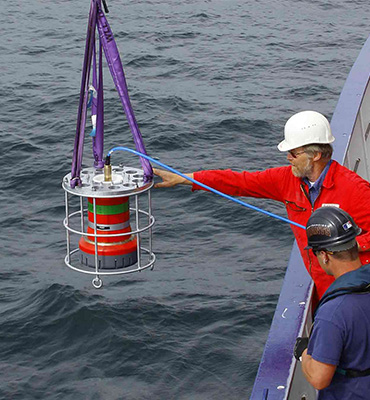
Modem 6 (surface)
Modem 6 acoustic modems are a family of cost-effective solutions for simple point-to-point data transfer from a wide range of sensors including, data loggers, ADCPs, CTDs and other subsea instruments.
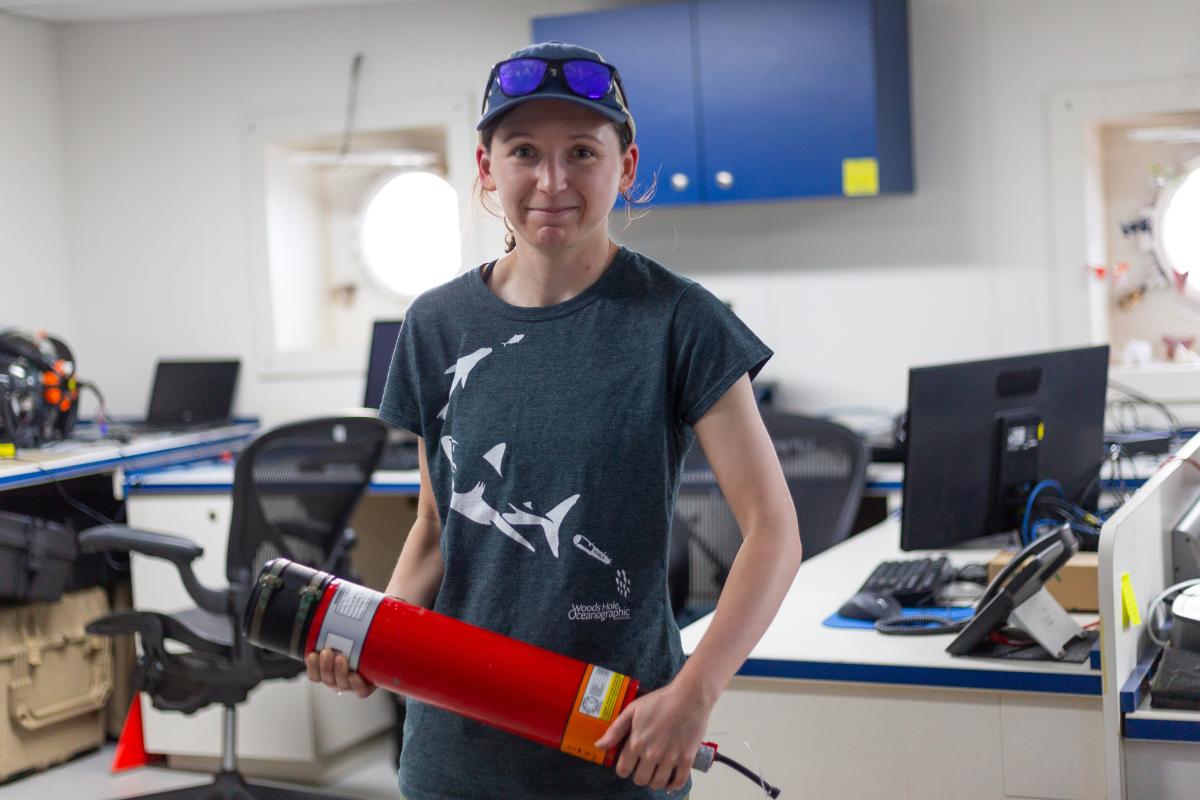
AvTrak 6
The most versatile instrument you can fit to your AUV. Built for simple integration on medium to large AUV platforms, all-in-one functionality comes as standard with AvTrak 6. It allows your AUV to undertake simultaneous LBL ranging, USBL tracking via a surface vessel and robust telemetry for AUV to vessel and AUV-to-AUV communications.
Origin rewrites the story of your relationship with an ADCP
Our Origin family of ADCPs represent the latest in cutting edge underwater profiling technology. Able to analyse mean currents, waves and turbulence, and integrate with external sensors to provide pH levels, temperature and other data, Origin delivers comprehensive, reliable and timely data sets for your underwater operations.
With on-board Edge data processing and built-in acoustic modems, Origin can also process and deliver your data in almost real-time. This data is delivered in conventional PD0 format as standard but can be programmed to present results in our exclusive A-gram and B-gram formats, giving you up to 10 x greater spatial resolution detail.
Available in two models, Origin 65 for deep water profiling and Origin 600 for near and inshore waters, there is an Origin ADCP to suit your operation.
Why should you invest?
Origin ADCP family gives you the data you need, at a level of detail not available anywhere else on the market. Their ability to integrate with third party sensors unlocks additional capability and protects your investment.
Rechargeable batteries in Origin 600 give you rapid redeployment times as the unit can be recharged on the back deck whilst data is being downloaded before it’s returned to the seabed. Depending on your programme requirements, Origin 65 can operate for up to two years on the seabed before needing to replace its batteries.
Whichever size suits you best, they are both compatible with our Ranger 2 USBL equipment so you can harvest data and update your operation schedules mid-mission.
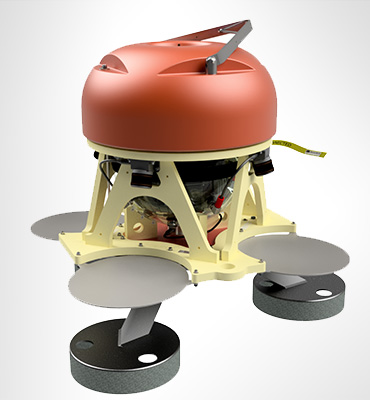
Origin 65
Origin 65 revolutionises what you can do with a deep water ADCP. It combines state-of-the-art acoustics, sensors, and data into one payload providing you with an unprecedented view of the deep. It’s a versatile, reliable and high performance ADCP with on-board Edge processing for data optimisation and an integrated modem for remote control and data access.
For the full picture of what your Origin 65 is capable of, please visit its dedicated product page.
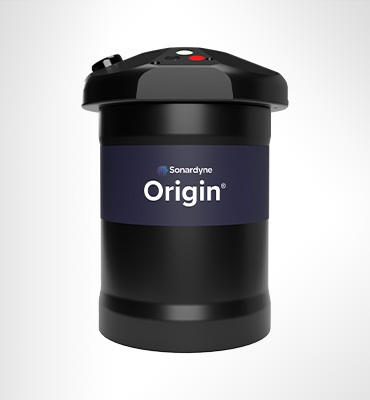
Origin 600
With a 50-metre current profiling range, on-board Edge data processing and an integrated acoustic modem, Origin 600 provides you with in-situ, high resolution measurements with on-demand data retrieval – reducing survey costs, risk and time. Choose between industry standard data formats, or our exclusive proprietary format offering up to ten times greater spatial resolution.
For the full picture of what your Origin 600 is capable of, please visit its dedicated product page.
Remote control
The integrated acoustic modem enables actions with the ADCP already in the water, delivering in-field flexibility and data assurance.
Reduced risk
Remote, safe and low-cost data: Edge customised and optimised data can be harvested acoustically with a small and efficient USV to reduce overall ship time, human intervention and associated risk.
Expanded functionality
ADCP data can be supplemented by and Edge-fused with data from external sensors so you can really get the most out of a single device deployment and the data generated.
Operational flexibility
It can support short-term and long-term current monitoring projects, using our Ranger 2 systems to harvest data for actionable insights during monitoring periods.
Go deeper, last longer and lift more with our family of RT 6 acoustic releases
Our RT 6s come in three popular depth ratings, 1,000 m, 3,000 m and 6,000 m as well as an HD model capable of operating at up to 7,000 m with loads of up to 2500kg. There’s a model to suit any of your offshore operations.
All of our RT 6 models are compatible with our Ranger 2 USBL. You can locate, operate and recover the releases quickly and simply with this globally used system, saving you time and the complexity of operating several systems at once.
Spend less time recovering and more time collecting data with up to 2.5 years battery life. We understand that your time is precious, so our RT 6 releases feature a minimum of 13 months battery life, depending on the model, meaning you spend less time recovering equipment and your assets spend more time in operation.
RT 6. Supporting your science and equipment deployments – which one is right for you?
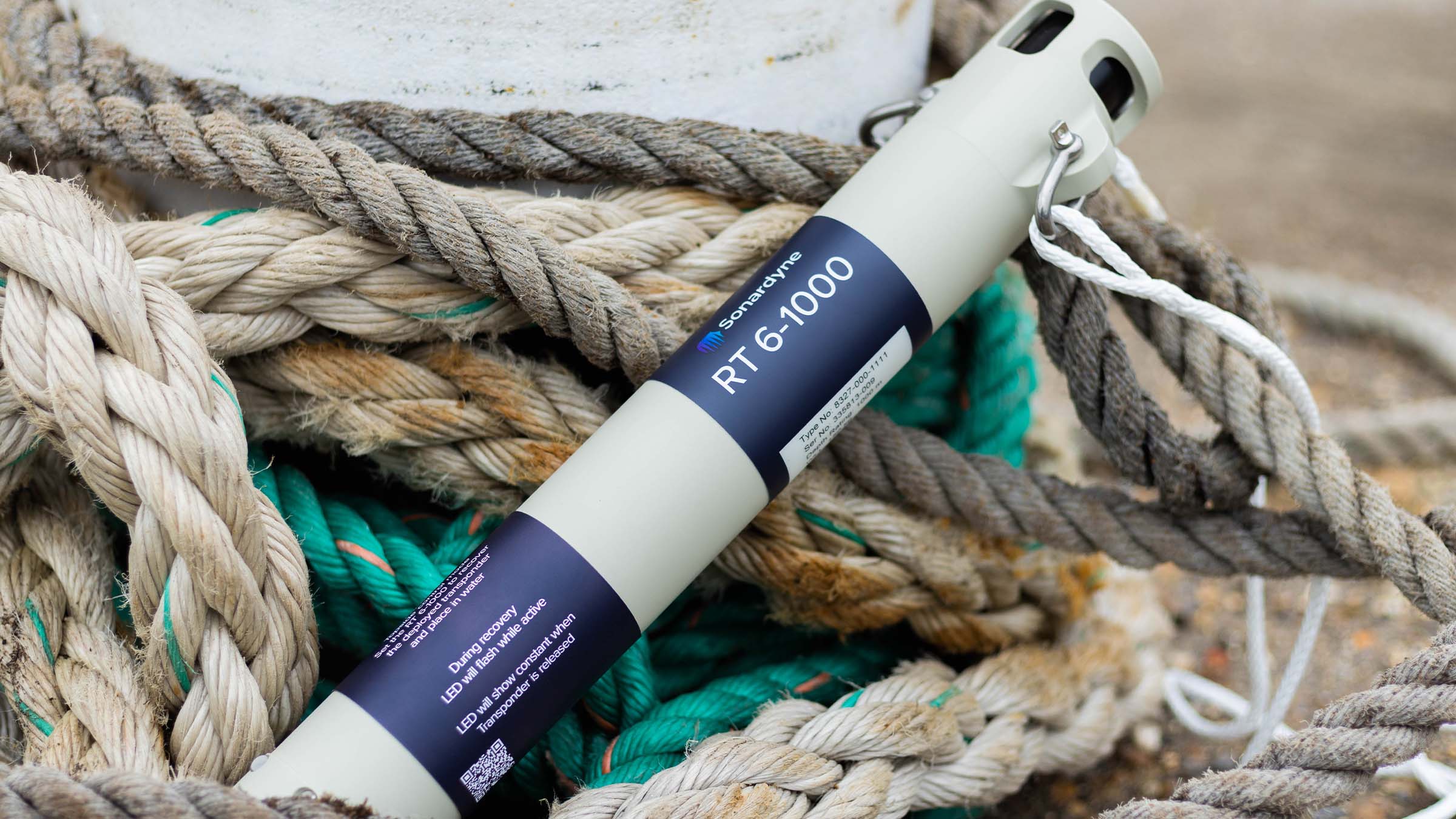
RT 6-1000
Deploy it. Track it. Locate it. Recover it. RT 6-1000 does it all. Our new entry-level acoustic release transponder has features that are far from entry-level. Such as 1,000 metre depth rating, battery life of over a year and release mechanism that won’t let you down. The perfect low-cost acoustic release for mooring environmental sensors. 1,000 metre depth rating, 18 months battery life, 125 kg WLL. Ranger 2 and Android app compatible.
Depth rating 1,000 m
Frequency MF
Working Load Limit 150 kg
Battery life >13 months
Topside Android App/Ranger 2/Dunker 6 Kit
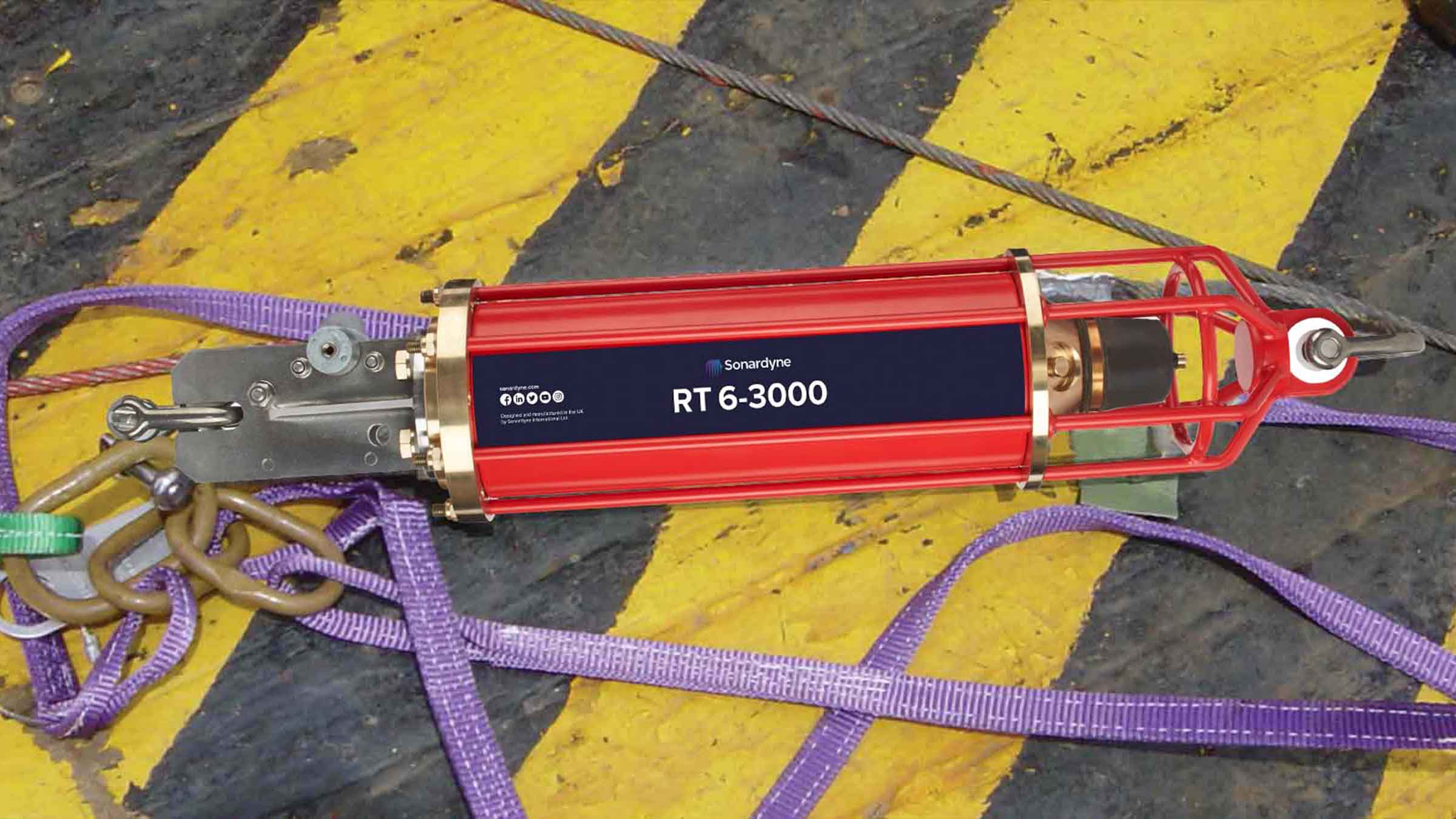
RT 6-3000
Deep water instrument mooring or structure installation; RT 6-3000 takes the hard work out of your deploying ocean sensors and heavy lifting. It features an impressive battery life of over 32 months and a depth rating of 3,000 m. Suitable for a wide range of sustained observation tasks spanning years of in-situ measurements. Depth rating to 6,000 metres and 1,275 kg WLL. Release with Ranger 2.
Depth rating 3,000/6,000 m
Frequency MF/LMF
Working load limit 1,275 kg
Battery life >32 months
Topside Deck Topside /Ranger 2 USBL
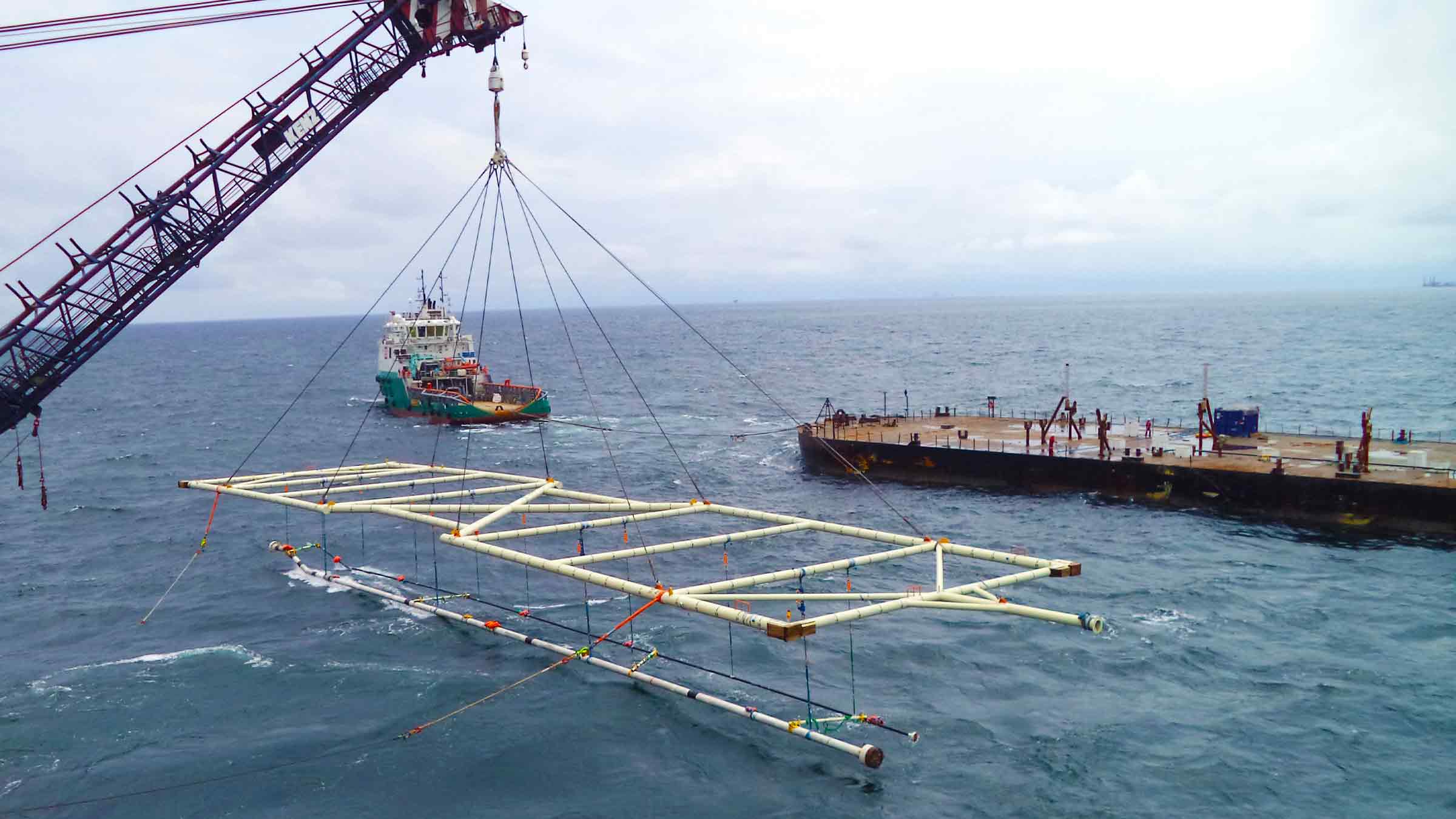
RT 6-6000
Release Transponder 6 (RT 6-6000) is a tough, reliable oceanographic release transponder designed for a deep water applications with energy, defence and science. Suitable for a wide range of sustained observation tasks spanning years of in-situ measurements. Depth rating to 6,000 metres and 1,275 kg WLL. Release with Ranger 2.
Depth rating 3,000/6,000 m
Frequency MF/LMF
Working load limit 1,275 kg
Battery life >32 months
Topside Deck Topside /Ranger 2 USBL
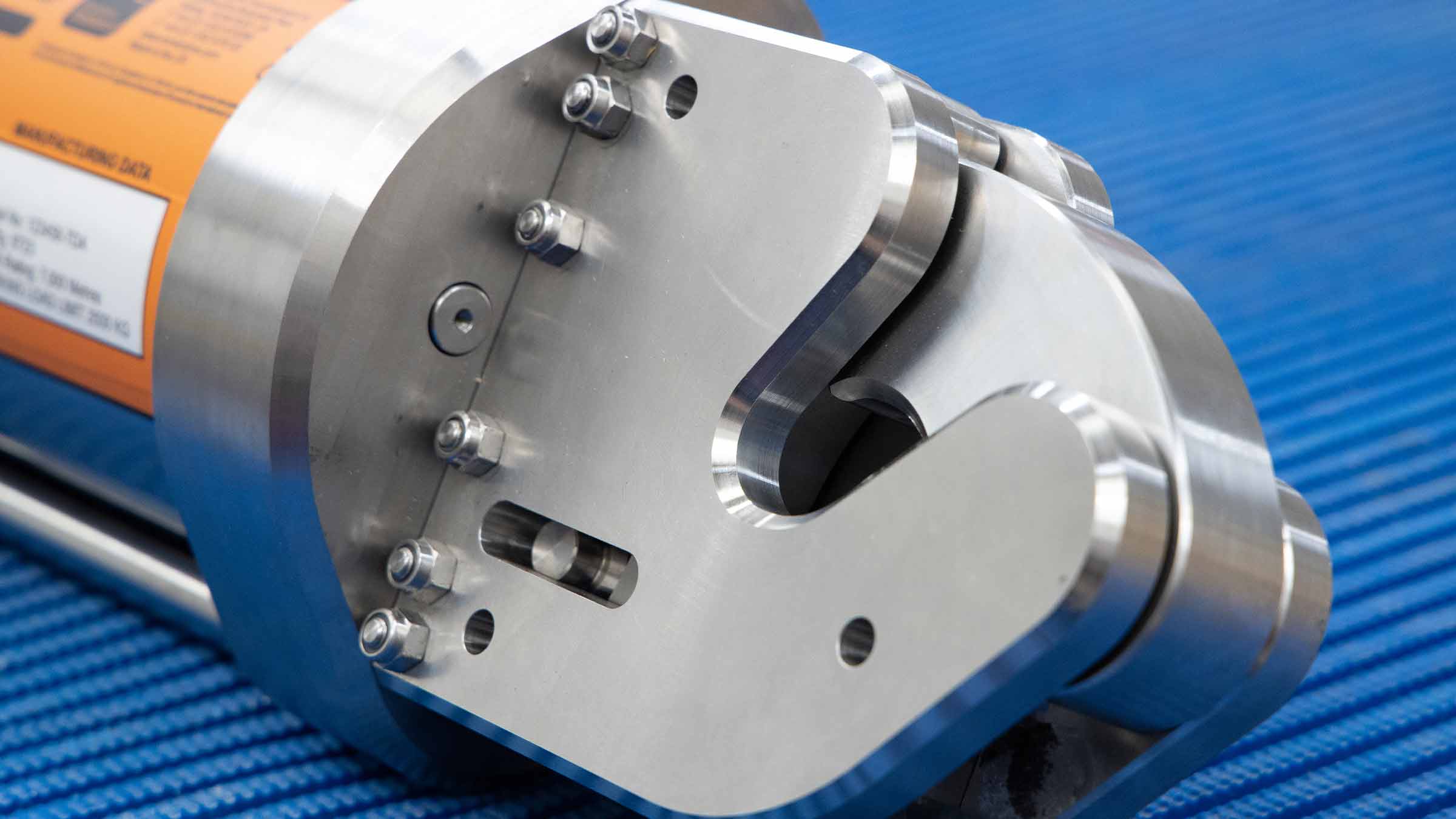
RT 6-HD
Release Transponder 6 Heavy Duty (RT 6-HD) is a tough, reliable, acoustic release transponder engineered with a Working Load Limit of 2,500 kg and fully compatible with LMF Ranger 2 USBL and LMF Deck Topside systems. A deep and heavy load-rated release to support applications from telecomms cable repair to structure installation. Track every moment with your vessel’s Ranger 2.
Depth rating 7,000 m
Frequency LMF
Working load limit 2,500 kg
Battery life >32 months
Topside Dunker kit/Ranger 2 USBL
Frequently asked questions
6G
Our 6th generation (6G) technology provides faster, secure and robust data communications from seabed to surface . This gives you speedier updates on the location of your assets and access to your vital data.
Wideband
Our wideband technology enables digital high-throughput data, range resolution and accuracy with low latency. Teamed with our 6G it gives you fast, reliable, accurate data over greater distances.
Robotics
Uncrewed, autonomous surface and underwater vehicles are increasingly used for coastal, deep sea and over-the-horizon operations, reducing costs, risks and carbon footprint. Thats why we have a dedicated “bolt on” pack for our Ranger 2 to enhance your robotics operations.
Dynamic positioning
We’ve been engineering high integrity position reference systems for dynamically positioned vessels since the early 1990s. Our USBL, LUSBL and SPRINT- INS products provide dynamic positioning solutions for a range of vessels and environments.
Navigate your marine environment with the confidence only SPRINT-Nav can provide.
Pinpoint location precision. Enhance your operations by adding valuable location detail enabling you to identify exactly where your data is drawn from or to pinpoint the location of assets, obstacles and pipelines.
Guide, control and navigate your USVs, ROVs and AUVs faster, safely and more efficiently with SPRINT-Nav. Operate your vehicles and vessels with the confidence of knowing exactly where they are and what they’re doing.
No calibration needed. Straight out of the box SPRINT-Nav is ready to go, saving you precious time on your operations.
Reduced in size – but not in performance, SPRINT-Nav Mini is the industry’s smallest all-in-one hybrid acoustic-inertial subsea navigator. It provides the perfect instrument for you to control your smaller inspection class ROVs and small to medium sized USVs.
Navigating – to hold station, SPRINT-Nav DP provides a reliable dynamic positioning reference in shallow water for your surface vessel to remain in one place without the need for a GNSS signal.
Engineered for all autonomous vehicles no matter what size or purpose, there is a SPRINT-Nav for your operations.
Why should you invest?
By choosing SPRINT-Nav you are choosing an all-in-one acoustic-inertial navigation sensor, replacing the need for a separate DVL, pressure sensor and INS/AHRS. Saving you the time, cost, cabling and integration challenges associated with using different sensors from different vendors.
At a glance
- Unique to Sonardyne
- Performance levels to suit your operations
- Tightly integrates raw acoustic, Doppler and inertial data
- Titanium housed for deep ROV missions
- Outputs altitude, depth, orientation and velocity
- Configure and control using a Web UI
Compact
Low power and small, it’s the ideal size for installing on all size ROVs as well as USVs undertaking data harvesting missions in shallow water and around offshore structures which often block GNSS signals.
Cost-effective
Because it’s cheaper than the four separate sensors it replaces (AHRS, DVL, INS and pressure sensor), it’s a cost-effective solution for your research platforms where budgets need to stretch as far as possible.
Specialist applications
SPRINT-Nav X is the highest-grade model in our SPRINT-Nav family designed for very specialist applications such as long endurance missions using XLUUVs.
Survey
Supports dual ROV and Survey use and standalone ROV guidance. Also provides mid-water station keeping with vendor independent USBL aiding.
